Blog
On this blog, you will find photos, outlines, notes and thoughts that document the progress of the project. This action-research project would like to research, analyze, and understand resistance from perspectives both historical and contemporary. This aim requires all participants to endure vulnerability, our own and those of others. As we realize that we are all vulnerable in this process, we also realize the community we form.
![]()
![]()
![]()
![]()
![]()
![]()
Nov 27 2025
Book Presentation at AIL Vienna with editors Ruth Anderwald + Leonhard Grond in conversation with the authors, participants and graphic designers HammerAlbrecht.
![]()
![]()
![]()
Oct 13 2025
We are excited to share that our publication, The Arts of Resistance, has been printed and is set to be published at the end of November. We sincerely thank the teams at HammerAlbrecht and VfmK Verlag für moderne Kunst for their wonderful collaboration in bringing this publication to life. You are welcome to order the book via this link, and we will also provide a PDF version here shortly.
photo © HammerAlbrecht
June 30 2025
“Not to forget means to stay active, reach out to each other, and build a more just society. Together, we can do it.” – Participants of the project The Arts of Resistance for the virtual commemoration.
May 8, 2025, marked the 80th anniversary of the unconditional surrender of the German Wehrmacht and the official end of the Second World War in Europe. On this day, the Mauthausen Committee Austria (MKÖ) held its thirteenth Festival of Joy at Vienna's Heldenplatz in memory of the victims and in celebration of liberation from Nazi terror.
![]()
![]()
![]()
![]()
May 10 2025
Here are a few exhibition views from our exhibition at MSU Zagreb.
![]()
![]()
![]()
![]()
![]()
![]()
![]()
![]()
![]()
![]()
![]()
![]()
![]()
May 8 2025
Opening of The Arts of Resistance exhibition at the Museum of Contemporary Art Zagreb. Thank you to everyone for your engagement and consistency at this amazing journey. The evening closed with a performance in front of Sanje Iveković's monument.
I sometimes fear that
people think that fascism arrives in fancy dress
worn by grotesques and monsters
as played out in endless re-runs of the Nazis.
Fascism arrives as your friend.
It will restore your honour,
make you feel proud,
protect your house,
give you a job,
clean up the neighbourhood,
remind you of how great you once were,
clear out the venal and the corrupt,
remove anything you feel is unlike you...
It doesn't walk in saying,
"Our programme means militias, mass imprisonments, transportations,
war and persecution."
![]()
![]()
![]()
![]()
![]()
![]()
![]()
May 7 2025
After a year of dedicated discussion, research, and investigating resistance against fascisms, we are excited to arrive in Zagreb from Braunschweig and Vienna to reconnect with everyone. At the Museum of Contemporary Art Zagreb, we are preparing the exhibition and working on performances, and we are looking forward to the opening on May 8, 2025.
![]()
![]()
![]()
![]()
![]()
![]()
![]()
March 1 to March 7 2025
At the International Design Week at the Holon Institute of Technology, we had the opportunity to conduct an anti-fascism workshop with students and explore design prototypes inspired by discussions around Umberto Eco’s 14 characteristics of fascism. We truly appreciated the invitation and the inspiring conversations.
![]()
![]()
![]()
January 15 2025
In Vienna, we are currently in the phase of prototyping and testing various ideas for the exhibition. Through a collaborative effort, we create something mutually beneficial together as a united force, sharing responsibility and ownership of whatever is created.
︎︎︎ It takes place ‘with’ and not ‘to’
︎︎︎ It has not set outputs but is outcome focussed
︎︎︎ It focuses on the ‘how’ and not the ‘what’
︎︎︎ It is process driven not product driven
︎︎︎ It may be facilitated but leadership shifts
︎︎︎ It may use art to generate changes but is likely to apply to all stages of programme development, design and evaluation
︎︎︎ It shifts agency and power and challenges privilege
︎︎︎ It brings partners together on an equal footing
︎︎︎ It is relational and not transactional
︎︎︎It empowers and includes
Excerpt from the report by Considering Co-Creation, Heart of Glass & Battersea Art Centre.
![]()
January 7 2025
Interview with Prof. Martin Krenn, PhD on the intergenerational artistic research project The Arts of Resistance. (German only, photo: Gabriel Anastasescu)
![]()
![]()
![]()
December 12 2024
The Women to Women collective uses art as a way to bring together women who want Croatia to be their home and women for whom Croatia is already their home, in order to facilitate integration into a new community that is constantly developing. The idea of the project is to create a safe and intimate space for women in which they exchange ideas, problems, solutions or simply spend time together. The Youth Club visited the Live Atelier on December 12, 2024. and worked on the process of preparing wild clay for further work by women in the Atelier while discussing the experiences of the women who hosted us.
Justin Kaushall considers Adorno’s argument that radical art radically changes consciousness. Read more.
![]()
![]()
![]()
December 6 2024
Today we had a wonderful opening with hundreds of school students, teachers, an amazing school band, activists from Bündnis gegen Rechts – Braunschweig (Alliance against the right – Braunschweig), Rote Falken, and Omas gegen Rechts (Grandmas against the right) to unveil our large version of the modular sculpture for democracy and against fascism in the Wilhelm Bracke Gesamtschule Auditorium. The motifs on this sculpture were created by school students as part of two 90-minute workshops at Wilhelm Bracke Gesamtschule, IGS Querum, Gymnasium Neue Oberschule and Realschule Georg-Eckert-Straße. The sculpture and the workshops were designed and realised by the art education department of the FREIE KUNST Institute at the Braunschweig University of Fine Arts under the direction of Prof. Martin Krenn in cooperation with RAHM Architects as part of the EU project The Arts of Resistance.
Participating students from HBK Braunschweig: Maria Ammann, Henadzi Arkhipau, Paul-Can Atlama, Dana Crasser, Natascha Faber, Xiaoming Huang, Fiona Jassmann, Nelly Khabipova, Laetitia Lentz, Hye-Hyun Kim, Merve Gisou Rosenthal, Daphne Schüttkemper
Cooperation partners in Braunschweig: „Demokratie leben!“ Braunschweig and VHS Braunschweig
Content support and networking with schools: Anna-Sophie Schröder
![]()
![]()
December 2 2024
We have just begun the design process for our publication and look forward to collaborating with Daniel Hammer.
![]()
![]()
![]()
![]()
![]()
November 29 2024
We, the group from HBK Braunschweig, aim to realise an anti-fascism project in Braunschweig in collaboration with schools. In cooperation with Living Democracy! Braunschweig and Anna-Sophie Schröder from the VHS Braunschweig, four Braunschweig schools could be won over. In the summer semester of 2024, students of Zusatzqualifikation Kunstvermittlung (supplementary qualification art education/mediation) held two 90-minute workshops at the Wilhelm Bracke Comprehensive School, the IGS Querum, the Neue Oberschule High School and the Georg-Eckert secondary school. As part of these workshops, motifs for a modular anti-fascism sculpture emerged. In the first workshop at the schools, the students set up three stations in the classroom on the topics Braunschweig during the Nazi era, Art against Fascism and Braunschweig today. Around the tables of these stations, on which there were photos of former Nazi locations in Braunschweig, printed social media posts of Braunschweiger neo-Nazis and anti-fascist art from the classic avant-garde, the students discussed with the school students the current state of democracy and the Situation in Braunschweig. The results of this workshop were summarized in short terms which became the starting point for designing the motifs in the follow-up workshop. A selection of terms can also be found as printed text on the sculpture. In the second workshop, the school students finally drew the motifs for the anti-fascism sculpture. The students provided them with advice and support in their role as aspiring visual artists.
The technical construction of the modular sculpture was constructed in collaboration with RAHM Architects. The sculpture was unveiled and installed in the IGS Querum schoolyard in November 2024. In December 2024 it will be presented in the auditorium of the Wilhelm Bracke Comprehensive School, in January/February 2025 in the entrance area of the VHS Braunschweig and in May 2025 in the Museum of Contemporary Art Zagreb as part of TAoR's final exhibition. (Martin Krenn)
![]()
![]()
![]()
![]()
![]()
October 26 – November 3 2024
Thanks to the Austrian Cultural Forum in South Africa, we were able to visit institutions in Cape Town and Johannesburg. In Cape Town, we explored the Holocaust and Genocide Centre and Robben Island, where Nelson Mandela was imprisoned, among many others. In Johannesburg, director Tali Nates guided us through The Johannesburg Holocaust & Genocide Centre, which she established. This centre serves as a place of remembrance, education, and lessons for humanity. The JHGC explores the history of genocide in the 20th century, focusing on the Holocaust and the 1994 genocide in Rwanda. It explores the connections between genocide and contemporary human rights issues, urging visitors to understand the consequences of prejudice, discrimination, and othering in order to prevent the recurrence of mass atrocities and genocide in all its forms. We deeply appreciate this opportunity and the subsequent dialogue.
In connection with the ongoing exhibition, The Third Generation: The Holocaust in Family Memory, at the Jewish Museum Vienna, director Barbara Staudinger conducted interviews with members of the third generation to discuss their unique perspectives on their grandparents’ history and their own generational identity. Robert Rotifer reflects on his grandmother Irma Schwager, in whose honour he devoted an evening during our Exchange Week. Read more.
![]()
![]()
![]()
![]()
![]()
![]()
![]()
![]()
![]()
September 1 2024
We are now ready for the next phase of our project! After an incredible exchange of ideas, we have to say goodbye, and everyone is heading back to their cities to create artworks and prepare for the exhibition at the Museum of Contemporary Art, Zagreb. On 8 May 2025, marking the 80th anniversary of the liberation from the Nazi regime, we will meet again to open our exhibition. But for now, it's time to celebrate! Join us at the university’s garden as we toast to this journey and everything to come.
![]()
![]()
August 31 2024
On the final evening of our Exchange Week, artist Jo Schmeiser showcased her award-winning film, Widerstandsmomente (Moments of Resistance).
Widerstandsmomente carries voices, writings, and objects from the anti-Nazi resistance into the present. Politically engaged women of today respond to historical resistance and make links to current events. A line is drawn from what was before and what is today to what might be: a society based on solidarity without discrimination or exclusion.
The film served as a poignant reflection of the themes we explored during the week and helped us prepare for the upcoming months, when we will co-create works for our exhibition at the Museum of Contemporary Art, Zagreb.
![]()
![]()
![]()
![]()
![]()
![]()
![]()
![]()
August 30 2024
Thank you so much, to the rectorate of Bezalel Academy of Fine Arts, specifically to Adi Stern, Barak Pelman and Liat Brix-Etgar, for coming to Vienna and discussing with us in person. Your work on the Guidelines for Free Speech and Creative Freedom in Wartime spreads courage, hope, and confidence. We are keenly aware that each and every point of the Guidelines and their creation involved a challenging, even hurtful process. What impresses us so much is that the guidelines were developed from the entire organisation of a university across ethnicities, religious beliefs, genders and ages, across and involving all hierarchical levels. Such work requires a lot of listening and discussing and is therefore a great role model and inspiration.
![]()
![]()
![]()
![]()
August 30 2024
On this hot summer day, we welcomed guests from outside Europe, including Liat Brix-Etgar, Barak Pelman and Adi Stern from the Bezalel Academy of Fine Arts, Jerusalem. They presented their thought-provoking project, Guidelines for Free Speech and Creative Freedom in Wartime, which focused on fostering mutual respect and learning from each other, especially in the most challenging situations.
Bezalel is an inclusive academic space that represents the sociopolitical diversity of Israeli society. The academy brings together lived realities, diverse identities, complex and contradictory worldviews. Championing equity, diversity, and independent thinking, Bezalel’s commitment to a diverse population of students and faculty is reflected in every aspect of the academy. Stemming from all segments of society, this dynamic mix of people of varied religious, cultural, and socioeconomic origins and affiliations enriches and energizes the Academy, furthering expanded viewpoints and stimulating original and independent thinking. (Excerpt from Guidelines…)
Prior to the roundtable discussion, we took advantage of the university garden to brainstorm and develop questions for the upcoming conversation.
![]()
![]()
August 30 2024
The second workshop of the day was presented by Gelavizh Abolhassani. Her research explores the historical ties between art and theory, with a particular focus on how artists have interacted with cultural and ideological environments in both Iran and Austria. Gelavizh, an Iranian artist, visual-graphic designer, and PhD researcher, explores the intersection of politics and art, with a particular focus on how sociopolitical phenomena are expressed through art in Iran and Western countries. The workshop compared and contrasted artistic freedom in Austria and Iran.
![]()
![]() August 30 2024
August 30 2024
Today, we had the privilege of meeting Preeti Kathuria, a writer, curator, and researcher from India, who presented Seeding Change: Indian Contemporary Art Practices and the Agrarian Crisis. Preeti shed light on the crisis existing in farmlands, often overlooked amidst the romanticized perception of rural life. She discussed how contemporary art has served as a platform for critical commentary and intervention into agrarian complexities. Some artworks have deeply explored the land and rural social structures, while others have sought to highlight farmer protests, turning a seemingly distant crisis into a national concern.
![]()
![]()
August 29 2024
Artist Deborah Sengl and Barbara Staudinger, the director of the Jewish Museum, guided us through the exhibition The Last Days of Democracy. The year 2024 marks an election year. Throughout Europe, there is a rise in support for parties advocating for "illiberal democracies," trying to convince us that this pairing is not contradictory. Society is divided, with social media echo chambers catering to specific groups and stirring up hostility towards others. The pandemic and war have further polarized public opinion, while the wealth gap continues to widen daily. Antisemitism and racism are prevalent, exacerbated by the war in the Middle East. Many view these circumstances as a foreshadowing of The Last Days of Humankind, making Karl Kraus, celebrating his 150th anniversary this year, more relevant than ever. This is why the rats have returned. Sixteen scenes from Deborah Sengl’s installation have been selected and updated with texts by the Austrian poet Lydia Haider.
![]()
![]()
![]()
![]()
![]()
![]()
![]()
August 28 2024
When we were planning this project, we knew that we had to invite Robert Rotifer to share his stories and songs about his grandmother, resistance fighter Irma Schwager, who had lived in the neighbourhood for almost 70 years. Robert is a wonderful singer-songwriter who, with his stories and songs, made it clear to us what an impact resistance work has on society and how it shapes a family for generations. Thank you, Robert, for this great evening!
![]()
![]()
![]()
![]()
![]()
![]()
![]()
August 28 2024
With this performative walk, we highlight certain historical relations to resistance, artistic, architectural, and urban contexts of the backdrop of the University of Applied Arts, but even more so in the neighbourhood, the 2nd district in Vienna, where we live. Delving into the background of the neighbourhood brings to the fore stories that are specific to the local history, from the flat of resistance fighter Irma Schwager to the villa of Jewish architect Oscar Mamorek, where the architect of the Holocaust, Adolf Eichmann, later lived. This neighbourhood has always been a source of inspiration for bringing The Arts of Resistance project to life. Ruth Anderwald + Leonhard Grond
![]()
![]()
![]()
![]()
![]()
![]()
August 28 2024
The MSU Youth Club hosted a speed dating event, and we had an amazing time discussing topics like freedom, education, institutions, power, and many others. This was really fun! Thanks for this idea.
![]()
![]()
![]()
August 27 2024
On the third evening of our Exchange Week, Martin Krenn presented his film Aufzeichnungen zum Widerstand (Notes on Resistance), which we then discussed in detail. His film delves into the courageous acts of resistance against fascism in Austria, Spain, and France during the 1930s and 1940s.
It’s truly moving to witness the stories of individuals like Harry Spiegel, who dedicated their lives to standing up against oppressive regimes. The film’s focus on the generation of resistance fighters who bravely fought against Franco, the Austro-fascists Dollfuss/Schuschnigg, and Hitler is a powerful testament to their resilience and determination.
![]()
![]()
August 27 2024
Today, we had the privilege of visiting the Documentation Centre of Austrian Resistance (DÖW), where the team gave us a warm welcome and guided us through their permanent exhibition. The exhibition offered a profound glimpse into Austria’s history, displaying artefacts of resistance against fascism. It was an eye-opening experience, and we’re grateful for the opportunity to learn more about the crucial work DÖW is doing - not just for Austria, but for a wider international audience as well.
Founded in 1963, DÖW was established by former Austrian resistance members, survivors of Nazi persecution. From the start, it has maintained a nonpartisan and inclusive focus, bringing together representatives from a variety of backgrounds: Communists, Socialists, Catholic-Conservatives, the Catholic Church, the Jewish community, as well as Roma and Sinti groups, alongside political figures. What began as a modest initiative run by idealistic victims of fascism has grown into a respected institution, recognised both in Austria and abroad for its vital role in preserving history and promoting awareness.
We left the centre deeply inspired by the important work they continue to do. It’s a place that keeps the memory of resistance alive and serves as a reminder of the ongoing fight for justice and human dignity.
![]()
![]()
![]()
![]()
![]()
![]()
![]()
![]()
August 26 2024
Our first workshop during the exchange week was by artist-researcher Jo O’Brien. They introduced us to sustainable resistance as slow beginnings for durational action. Resistance is a strange thing, often urgent or immediate, sometimes existential, and frequently durational. Durational across scales of time that – from the here and now – might have no conceivable end. Resistance to fascism in particular is a project as old as the politic itself, and one that must continue past any “end” of it as well. This resistance then cannot be a sprint or a marathon, a march, or even a single destination. Instead, this resistance must be a sustainable one – one that can be practised as indefinitely as needed.
![]()
![]()
![]()
![]()
![]()
![]()
August 25 2024
After the summer, we are excited to kick off our Exchange Week and welcome all participants to Vienna. Join us for a week of lively discussions, knowledge exchange, and input. All welcome.
![]()
July 26 2024
My family were all Nazis. My grandfather and grandmother. My mother and my father. My stepfather, my uncle – literally all of them were hardcore Nazis during the second world war. And after? […] Read My family and other Nazis by Martin Pollack (© photo) in The Guardian.
![]()
![]()
June 13 2024
Working at MSU Youth Club, Zagreb, with artist Selma Banich.
Art is not a luxury. It stands at the essence of our humanity, and it asks for no special protection except the right to exist.
The most important […] is that art challenges orthodoxy. To reject or vilify art because it does that is to fail to understand its nature. Art sets the artist’s passionate personal vision against the received ideas of its time. Art knows that the received ideas are the enemies of art, as Flaubert told us in Bouchard et Pécuchet. Clichés are received ideas and so are ideologies […]. Without art our ability to think, to see freshly, and to renew our world would wither and die.
Art is not a luxury. It stands at the essence of our humanity, and it asks for no special protection except the right to exist.
It accepts argument, criticism, even rejection. It does not accept violence. (Rushdie, p. 168)
![]()
![]()
![]()
![]()
![]()
May 2-4 2024
Our Multipliers Meeting took place at HBK Braunschweig from May 2nd to May 4th. Participants from Zagreb and Vienna travelled to Braunschweig, where Martin Krenn and his students welcomed us and put together two days packed with engaging discussions and fantastic exchanges. This was a wonderful start for The Arts of Resistance project. Thank you so much!
![]()
April 1 2024
We are happy to announce that our intergenerational artistic research project, The Arts of Resistance, starts today.
The Arts of Resistance is a European cooperation project which conducts artistic research on resistance against Fascisms, past and present, in Europe and beyond. This project is initiated and led by the Austrian association HASENHERZ and carried out with the University of Applied Arts Vienna, the Museum of Contemporary Art Zagreb and the Braunschweig University of Art.
The Arts of Resistance (2024-2025) is co-financed by the Creative Europe Programme of the European Union.
![]()
![]()
![]()
June 29 2022
We would like to express our gratitude to everyone who has contributed to the ART WORKS! European Culture of Resistance and Liberation project. We are delighted that the project has been honoured with the Comité International de Mauthausen's appreciation award as part of the Hans Maršálek Prize 2022.
![]()
![]()
![]()
![]()
![]()
March 10 2021
In a public conversation, artist Jonathan Horowitz and photographer Wolfgang Tillmans, moderated by Anderwald + Grond, share insights into their artistic and curatorial work. Starting with Horowitz's exhibition, We Fight to Build a Free World! at the Jewish Museum in New York, they explore the potential art has to combat racism and anti-Semitism.
Haus der Kulturen der Welt
Saturday 20 March 2021, online
![]()
![]()
March 10 2021
We are looking forward to the upcoming workshops on March 20, 2021. Registration until March 8, 2021. Thank you for the wonderful collaboration with Between Bridges, HKW Berlin, Foundation wannseeFORUM and die Angewandte.
![]()
![]()
![]()
![]()
![]()
![]()
October 14 2020
Opening of the exhibition at MSU Museum of Contemporary Art Zagreb
This time around, all works can be seen at once in the Open Gallery space of MSU Zagreb. Curator Ana Skegro arranged the expanded exhibition that now also features a new Virtual Reality contribution by the Austrian group. In the picture above you can see the MSU Youth Group with their artist-mentor OKO in front of one of their works.
![]()
![]() August 04 2020
August 04 2020
Cubo Garutti – Piccolo Museion: European project ART WORKS! European Culture of Resistance and Liberation
The second edition of the exhibition features works by the German group of Foundation wannseeFORUM led by filmmaker Katja Pratschke, who contributed ON THE DOORSTEP, a video in seven chapters on the resistance in Berlin during Nazism, and the Croatian group of MSU Zagreb led by artist OKO. Their contribution, Resistance Then And Now collages texts and images on a satin banner and in the graphics of a pamphlet to create a connection between the actions and significant presence of leading women in resistance movements and the slogans from current protests in Croatia. The aim of the group was to identify contemporary resistance to current fascisms using the aesthetics of protest posters which are a public expression of our hard-won freedom of speech.
![]()
![]()
![]()
![]()
![]() June 18 2020
June 18 2020
Cubo Garutti – Piccolo Museion: European project ART WORKS! European Culture of Resistance and Liberation
About Resistance (interfaced) is a journey taken by a group of young people at Museion together with the artist Alessandra Ferrini. Consisting of a banner and video, the installation depicts the desktop of a computer as a window on the world. This reveals both the compromises and contradictions of the period we are living through with “domestic” lockdown on one hand and global participation on the other.
The Cubo further hosts Solely You It’s Not, a work produced by a group from the University St. Pölten in Austria mentored by the artist collective Anderwald + Grond. Their work consists of a poster series of European women who took an active part in the Resistance during World War II. It is based on Hilde Meisel’s work, an Austrian journalist and writer who fought against the Nazi regime. They also included an audio work that unites different European voices and languages in recitation of Meisel’s poem Das ist’s [‘tis].
This is the first part of the exhibition of the project ART WORKS!, on view until 02.08.20. From 04.08 to 17.09, there will be the second part with works from the Croatian and German groups and artists OKO and Katja Pratschke. In line with the project’s exchange concept, the work produced by groups will on display in rotation at museums in the participant countries: MSU in Zagreb, at HKW in Berlin and at the Peace Museum Erlauf Austria.
![]() June 11 2020
June 11 2020
ART WORKS! is named on the Council of Europe’s Good Practices Database for youth work in response to the Covid-19 crisis. [Read more.]
![]()
![]()
![]() June 8 2020
June 8 2020
In 10 days the exhibition at Museion Bolzano, Piccolo Museion – Cubo Garutti, will open, and the groups are working on finalizing their contributions. The first part of the exhibition will feature the works of the group of Museion mentored by Alessandra Ferrini and the group of FH St. Pölten mentored by Anderwald + Grond, as both groups focus on female resistance fighters. After the livestream both groups have produced new site-specific work for this exhibition.
May 11 2020
ART WORKS! is proud to take part in the program histoMEETS in the framework of histoCON. histoCON is an ongoing event series of the Federal Agency for Civic Education (bpb), which is designed to be a platform to share and discuss global perspectives on history and its relation to present and future. The aim is to discuss narratives about historical events, its continuing effects, and lessons that can be drawn from its history. The explicit intention is not only to commemorate the particular historical event but also to consider the implications for the present and future. Furthermore, it is intended to encourage young people from all over the world to get to know different perspectives of history, to question existing narratives, and to reflect on questions of war and peace in today’s world. The current situation, which has developed as a result of the novel coronavirus, also raises questions about the official commemoration of the Second World War. We believe that today the situation can be used to rethink commemoration. [Read more]
![]()
May 9 2020
In November we went for the first time to visit the Memorial and Museum Sachsenhausen (https://www.sachsenhausen-sbg.de/en/75liberationsachsenhausen/) and to started our research on the ART WORKS topic: European Culture of Resistance and Liberation. The outbreak of Covid 19 changed our plans. Starting from our own places of residence in Berlin, we researched nearby subcamps of the concentration camp and places of forced labor. On the website of the Documentation Center NS Forced Labor and the German Resistance Memorial Center we found information about locations, resistance fighters, their activities and their fate.We live all over the city, in the center as well as on the outskirts: Lichterfelde, Wedding close to Köslinerstraße and Kolonienstraße, Moabit, Charlottenburg, Kreuzberg, Hoppegarten and Lichtenberg. From our home, a short walk away, in the same street block or immediate vicinity, we photographed the former places: forced work training camps, concentration camp subcamps, places of resistance activities, secret meeting and hiding places, etc. The photographs have been taken as notations and photographic sequences and edited into photofilms. Three text levels are added, which differ visually: 1. Key words of resistance, 2. The History of the location, 3. Our personal situation: who we are, where we are right now, where we come from and what the lock-down does to us. Some of us included their personal experience of emigration, war and exil.
![]()
May 7 2020
As part of the international project ART WORKS! - European Culture of Resistance and Liberation we went on the search for artworks, that were created as a sign of resistance. After researching the Resistance during WW II individually, we realized that all of us focused on female historical figures. Thus, we chose to focus mainly on that aspect of the Resistance: the stories and accomplishments of those who are seldomly heard, whose stories are fractured and even harder to re-trace: the female resistance. During our research, we found out about Hilde Meisel - a resistance fighter in the Second World War. We were fascinated by her story and decided to make her poem ‘Das ist's’ the centrepiece of our artistic work. Using analogue and 3D Animation, 2D visuals and accompanying soundscapes, we created a short film. The goal hereby was to display the unity, diversity and fortitude of those who fought for liberty and justice. Today, 75 years after the liberation of the concentration camps and the end of the war we want to deliver the message Hilde Meisel once tried to make us understand: that solely you it's not.
May 5 2020
The MSU Youth Club, mentored by artist OKO, started their research individually. After bringing together what they found, they looked into narratives excluded or marginalized from the schools' history books. But they also wanted to include the Yugoslavian war around 1991, because its consequences still shape the political and remembrance culture of today. With the outbreak of Covid-19, they had to deviate from their original plan to make a walk-in sculpture and move into the digital space.
![]() May 5 2020
May 5 2020
The youth group from Museion Bolzano, consisting of Abram Tomasi, Gessica de Oliva, Samira Mosca, Lucia Rose Buffa, Tomas Grosello, Camilla Saiz, Giada Cardillo, Nicole Fersko, and mentored by visual artist and researcher Alessandra Ferrini, has created a video contribution titled About resistance (in remote-mode). Their work process can be traced via their specially created Tumblr page: https://artworksmuseion.tumblr.com
![]()
The Soviet general Dmitri Dritschkin and the US general Stanley Reinhart celebrated the Allied victory and the official end of the World War II in the night of May 8-9 in 1945 in Erlauf, but the event was soon forgotten. Twenty years later, US military documents about this meeting were found and sent to Erlauf by two Jewish emigrants, now living in the US. A memorial plaque was officially unveiled at the town hall a few years later. Since then, the city of Erlauf has continued to organize a celebration ceremony every year that eventually evolved into the celebration of Friedenstage (Days of Peace).
Following the first celebrations starting in 1965, Erlau has now shifted its focus to celebrate the event with contemporary art. In 1995, peace monuments by Jenny Holzer and Oleg Komov were erected. Art projects in public space and the Peace Memorial Museum’s historical and art exhibitions are open to the public. [Erlauf Erinnert]
![]()
April 26 2020
We begin our tour of the Melk Memorial at Melk railway station, which is located directly in the centre of the village. Melk has always been famous for its baroque monastery and is considered the ‘Gateway to the World Cultural Heritage Wachau’. But why do we start here at the train station? Because the first 500 prisoners arrived here by trainon April 21, 1944. And because all the other 14,000 prisoners from main-camp Mauthausen were also transported here to the train station.
Christan Rabl has produced a virtual tour with 11 short videos through the Melk Memorial. Click here to watch them. [Virtual tour]
![]()
From 1944 to 1945 Melk was a satellite camp of the Mauthausen concentration camp and the most significant satellite camp in lower Austria with about 14.400 prisoners from more than 20 countries. They were forced to work primarily digging an underground tunnel complex in which the Steyr-Daimler-Puch Company produced war material. About 5.000 prisoners died during their imprisonment. The former crematorium building was declared a public monument in 1962, and since has been the home of the Melk concentration camp memorial. A range of exhibitions and events have been organised in an effort to educate and remind the public of the horrible occurrences that have taken place here. Melk Memorial is also a project partner and will co-host the online memorial and peace celebration on the 9th of May.
![]() April 23 2020
April 23 2020
ONE WEEK PEACE is an artistic initiative that aims to affect all human senses in order to sensitize people to the important topic of "peace" through the medium of art. The speakers are concerned with today while at the same time forging a link to the legacy of Nobel Peace Prize Laureate Bertha von Suttner. The Bertha von Suttner Peace Academy is an impulse to take further steps toward the peaceful co-existence of societies in the present and future. The goal is to mobilize peoples' thoughts in regard to peace and to integrate these into everyday life so as to effect the making of peace. [Read more]
![]()
![]()
April 21 2020
These are the online commemoration ceremonies of the former concentration camps Sachenhausen and Ravensbrück.
![]()
![]()
March 20 2020
Due to the current COVID-19 pandemic, we are moving the artistic working process with all youth groups, artists and partner institutions into the digital realm. Deviating from the planned course, we aim to create an international online celebration of the end of World War II, using the social media and online presence of all institutions and communities involved. More soon.
![]() March 11 2020
March 11 2020
Demokratie ist kein Kopfbahnhof
[Democracy is not a dead-end station]
MO Journal For Human Rights N°58 p.27
In der „Allgemeinen Erklärung der Menschenrechte“ vom 10. Dezember 1948 erklären die Mitgliedsstaaten der UN die angeborene Würde aller Menschen zu respektieren, allen Menschen die gleichen Rechte zu zugestehen und sie vor willkürlicher Gewalt zu schützen. Und es ist kein Zufall, dass diese Erklärung so kurz nach Ende des 2. Weltkrieges verkündet wurde. Gerade das Nazi-Regime hatte aufgezeigt, welch verheerende Folgen eine Missachtung der Menschenrechte hat. Vor diesem historischen Hintergrund übernehmen wir als österreichische Bürger*innen besondere Verantwortung. Immer wieder fragen wir uns auch als Künstler*innen, was unsere gesellschaftspolitische Verantwortung ist, und welche Ausdrucksformen diese Verantwortung annehmen kann. Heuer starteten wir daher das interdisziplinäre Kunstprojekt “Art Works! European Culture of Resistance und Liberation”, in dem sich junge Menschen mit Widerstand gegen Faschismus in Europa und der Befreiung davon aus künstlerischer und historisch-politischer Perspektive auseinandersetzen. Ist Kunst ein probates Mittel gesellschaftspolitischen Widerstand zu leisten und für Menschenrechte einzutreten? […] Statement by Ruth Anderwald + Leonhard Grond, editor Magdalena Stern. German only.
![]() March 9 2020
March 9 2020
The European Convention on Human Rights came into being against the dreadful background of the devastation of the Second World War, reflecting a determination on the part of European leaders to learn from the mistakes of the past and to help protect individuals from State abuse. Peace and stability could only be achieved by the consolidation of democracy and the rule of law. Inspired by the Universal Declaration on Human Rights, the Convention is a unique, legally-binding treaty, overseen by an independent international court, which safeguards people’s basic rights and fundamental freedoms. Initially signed by 12 countries on 4 November 1950, the Convention now protects over 830 million people in 47 European States. [Read more]
March 6 2020
Prisoners songs of resistance from the Sachsenhausen concentration camp
More than 200,000 people were interned in Sachsenhausen concentration camp between 1936 and 1945. They included political opponents of the Nazi regime, members of groups declared by the Nazis to be racially or biologically inferior, such as Jews, Sinti and Roma, and people persecuted as homosexuals, as well as so-called “career criminals” and “antisocials”. Initially, the internees were predominantly German citizens, but after the outbreak of the Second World War, tens of thousands of people were deported from the occupied territories to Sachsenhausen concentration camp, including political opponents of National Socialism or of the collaborating governments, foreign forced labourers and Allied prisoners of war. In 1944, around 90 % of the internees were foreigners, with citizens of the Soviet Union and Poland forming the largest groups. There were also around 20,000 women among the internees in Sachsenhausen concentration camp. (https://www.sachsenhausen-sbg.de/en/history/1936-1945-sachsenhausen-concentration-camp/)
The songs they sung gave them power to resist and to survive. The book was made in the camp organiced by the illegal prisoner resistance organisation. (Sachsenhausen- Liederbuch: Originalwiedergabe eines illegalen Häftlingsliederbuches aus dem Konzentrationslager Sachsenhausen / Günter Morsch (Hrsg.), Berlin 1995)
![]() March 5 2020
March 5 2020
The eyewitness Poul Nielson talks about his time in the Sachsenhausen concentration camp. The interview with him was conducted by Christel Trouvé and Roman Fröhllich in 2010.
As the interview is not public, please send a message to this address ︎ and we will provide the password. Click here for the video: ︎ The video is available only in German.
March 4 2020
Uyghurs For Sale
In May we will visit the former concentration camp Melk Memorial, one of the biggest satellite camps of Mauthausen concentration camp, where prisoners were forced to work for Steyr-Daimler-Puch producing war material (mainly ball bearings). Unfortunately, forced labour is not an issue of the past but still very present, even in products we may buy or use on a daily basis.
The Chinese government has facilitated the mass transfer of Uyghur and other ethnic minority citizens from the far west region of Xinjiang to factories across the country. Under conditions that strongly suggest forced labour, Uyghurs are working in factories that are in the supply chains of at least 83 well-known global brands in the technology, clothing and automotive sectors, including Apple, BMW, Gap, Huawei, Nike, Samsung, Sony and Volkswagen. (Australian Strategic Policy Institute) [Read more]
![]()
![]()
![]()
![]()
![]() February 25 and March 3 2020
February 25 and March 3 2020
Brainstorming with MSU Youth Club and OKO.
![]() January 18 2020
January 18 2020
Red Light – Yugoslav Partisan Potography and Social Movement 1941–1945
A lecture by Davor Konjikušić for the Youth Club of MSU, Museum of Contemporary Art, Zagreb.
Davor Konjikušić is a freelance journalist and photographer based in Zagreb, Croatia, working for a range of media in Croatia and Serbia. Born in Zenica (Bosnia and Herzegovina) in 1979, he studied political sciences but holds also degrees in cinematography and photography. His work uses photography as a primary medium in articulating his artistic concept, in which he explores the relationships between public and private, intimate and socio-political.
![]() January 23 2020
January 23 2020
Widerstand in künstlerischer Art, Bezirksblatt Melk
This article published in the regional newspaper describes the first preparatory meeting of all partners and artists in Melk.
![]()
![]() January 21 2020
January 21 2020
New Book: The Art of Protest: A Visual History of Dissent and Resistance
Jo Rippon’s The Art of Protest is published by Palazzo in partnership with Amnesty International. (palazzoeditions.com)
A timely new publication explores the last century of activist imagery, exploring the role artists and designers have played in protest movements of all kinds.
![]()
![]()
![]()
![]()
![]()
![]()
![]()
![]() January 17 2020
January 17 2020
Second day of our Multipliers Meeting in Melk: With the train we travelled to the peace community Erlauf. When the unconditional surrender was signed in Berlin on May 8 1945, on the same day a handshake between the two generals Dimitri Drichkin (Soviet Army) and Stanley Reinhart (U.S. Army) took place in Erlauf. In the late afternoon we visited the Melk Memorial.
The aim of co-creation is to create shared value. […] It’s not about finding the right idea, it’s about finding a multitude of ideas.
![]()
![]()
![]()
![]()
![]()
![]() January 16 2020
January 16 2020
Here are some photos of our arrival day of the Multipliers Meeting in Melk at the Center for Contemporary History. The very first time we all came together to jointly develop our project further. Many thanks to Christian Rabl for the warm welcome and the photos!
January 13 2020
Human Rights Education as an educational framework of our project
Empowerment through human rights education is about more than just content; it can only be achieved if the education process also includes participatory learning methods and is relevant to the daily lives and lived experiences of learners.
This lived knowledge and awareness of human rights principles builds a “culture of human rights” — that is, a society in which each of us is encouraged and empowered to take the initiative to respect, protect and promote the full spectrum of human rights for all. [Read more]
![]()
![]()
![]()
![]()
![]()
![]() December 13 to 15 2019
December 13 to 15 2019
Finally, we got together in Berlin to start with the workshops. The artist Katja Pratschke and Roman Fröhlich guided the Berlin youth group through the former concentration camp Sachsenhausen Memorial in order to search for traces of resistance. In the meeting rooms of the memorial we collected first ideas about the terms resistance and liberation. Leonhard Grond discussed the responsibility of the artist and architect in this context.
Already in one month, we will all meet in Melk to plan the workshops and youth exchange in May in more detail.
![]() October 22 + 23 2019
October 22 + 23 2019
After the workshop with the youths in Bolzano, Ruth Anderwald and Leonhard Grond travelled to the Memorial and Museum Auschwitz-Birkenau. In Block 27 they discovered documentation of the magazine Vedem, a resistence magazine dedicated to culture, arts and news, that existed from 1942 to 1944 in the Terezín Concentration camp. Vedem was hand-produced by a group of boys, among them editor-in-chief Petr Ginz and Hanuš Hachenburg. Altogether, some 800 pages of Vedem survived World War II. In 2003 Petr Ginz's drawing of planet Earth from the perspective of the Moon was taken to the Space Shuttle Columbia by Israeli astronaut Ilan Ramon, but the space shuttle was destroyed when it re-entered the Earth's atmosphere.
![]()
![]()
![]()
![]()
![]()
![]() October 19 + 20 2019
October 19 + 20 2019
This weekend the workshops in Bolzano started. After a guided tour through the documentation exhibition in the monument of the victory in Bozen/Bolzano, London-based artist Alessandra Ferrini worked with a group of young people at Museion.


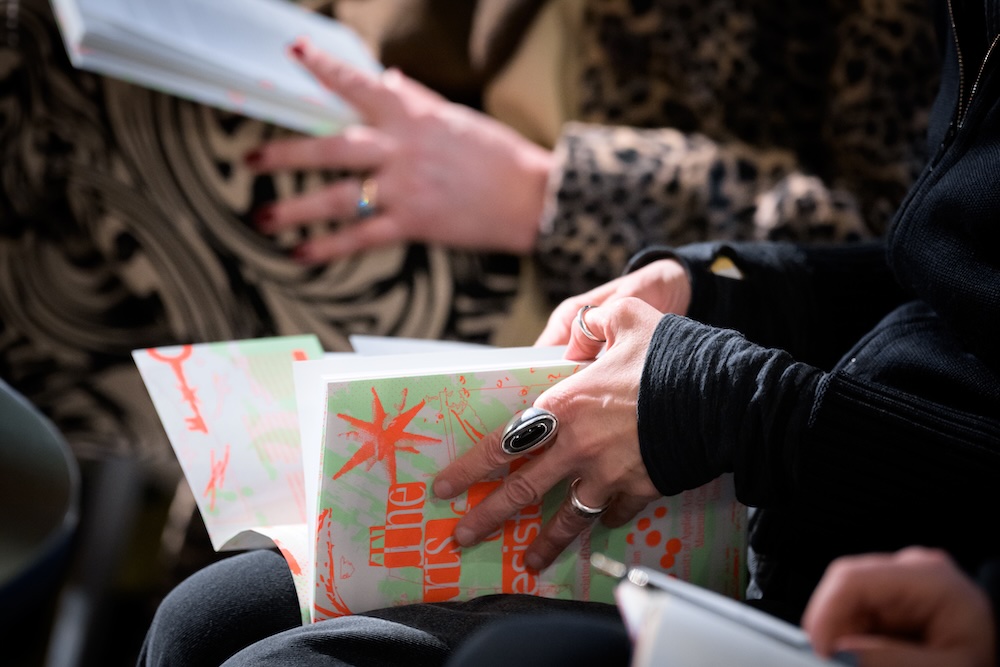
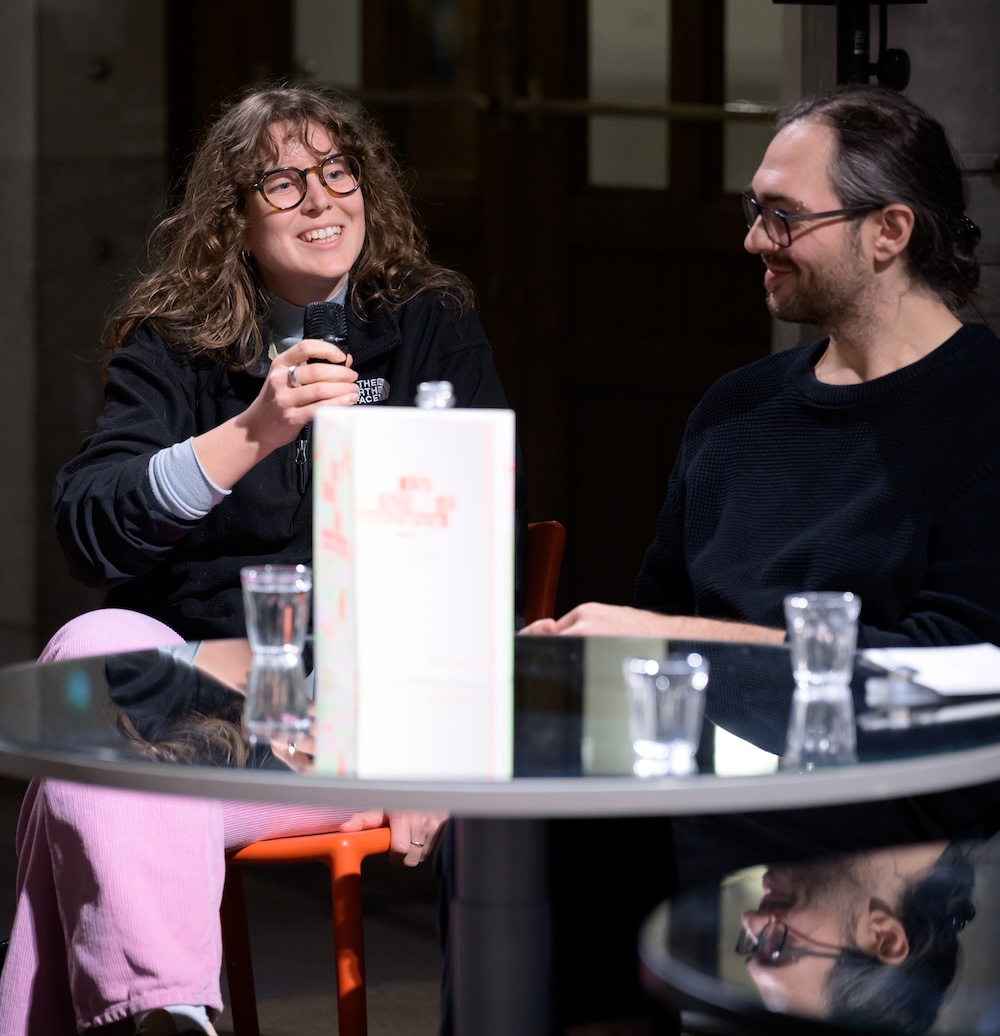
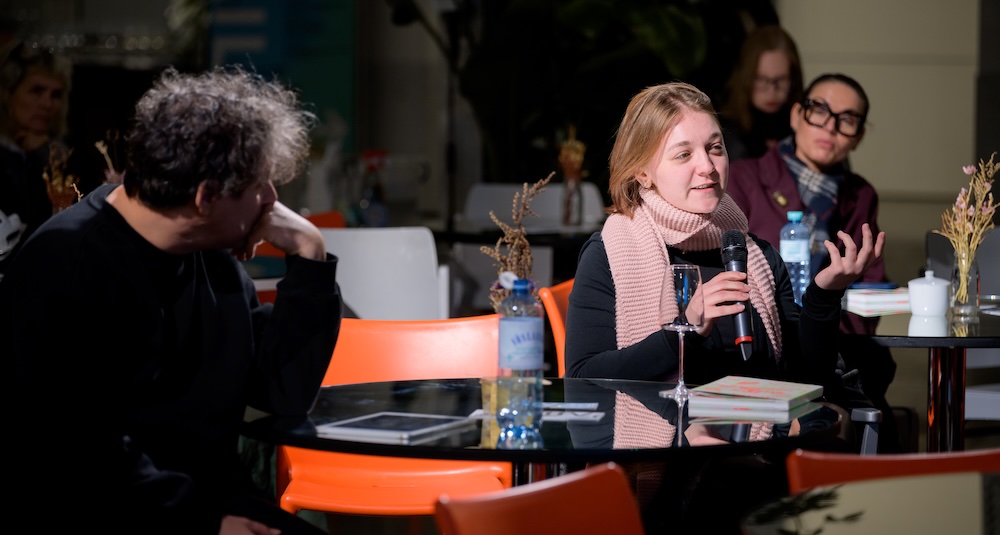
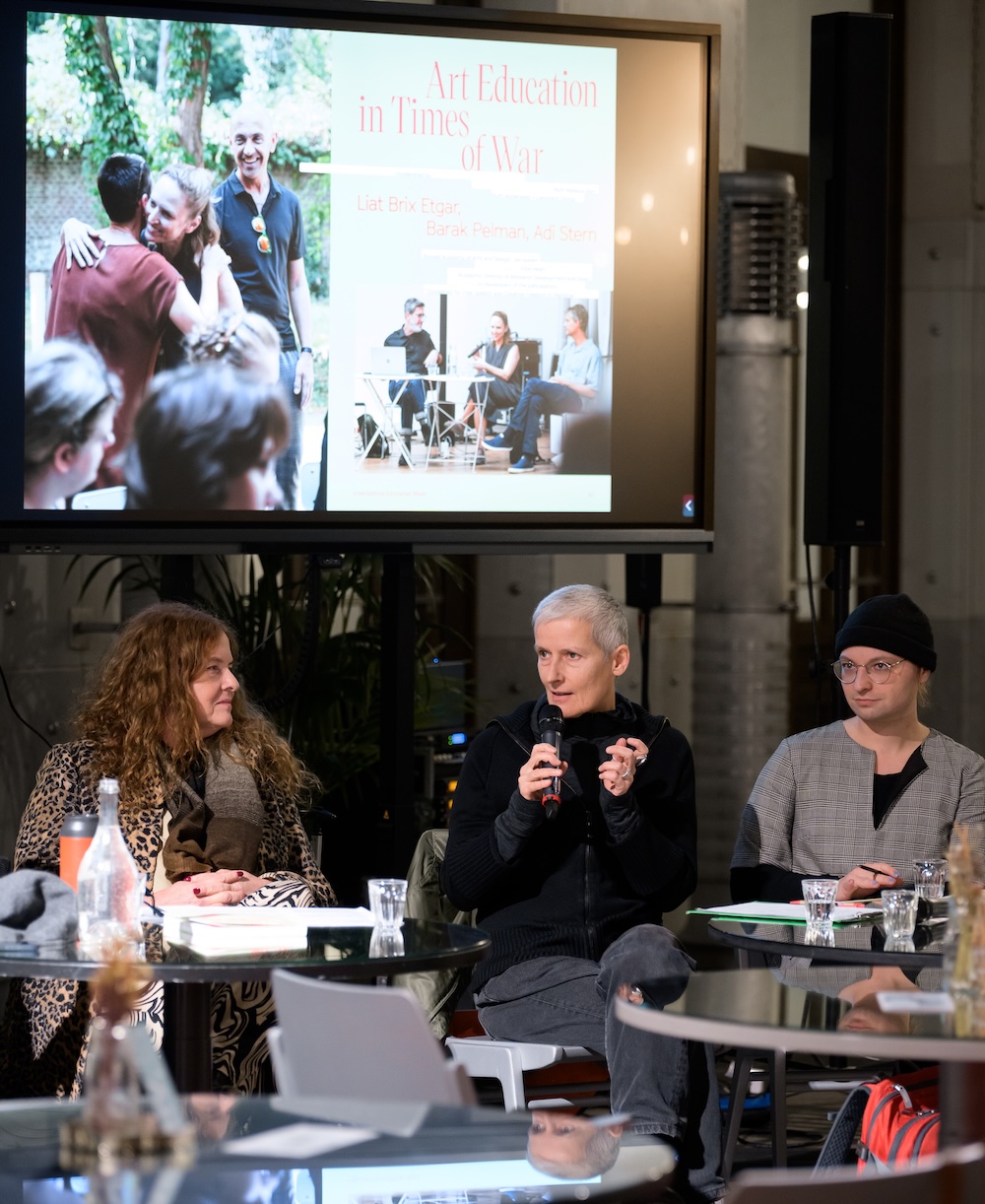
Nov 27 2025
Book Presentation at AIL Vienna with editors Ruth Anderwald + Leonhard Grond in conversation with the authors, participants and graphic designers HammerAlbrecht.
© eSeL.at, Joanna Pianka
Resistance requires not only critical thinking, but also new aesthetic approaches. This project addresses this significant challenge.
Ilija Trojanow, writer, translator and publisher
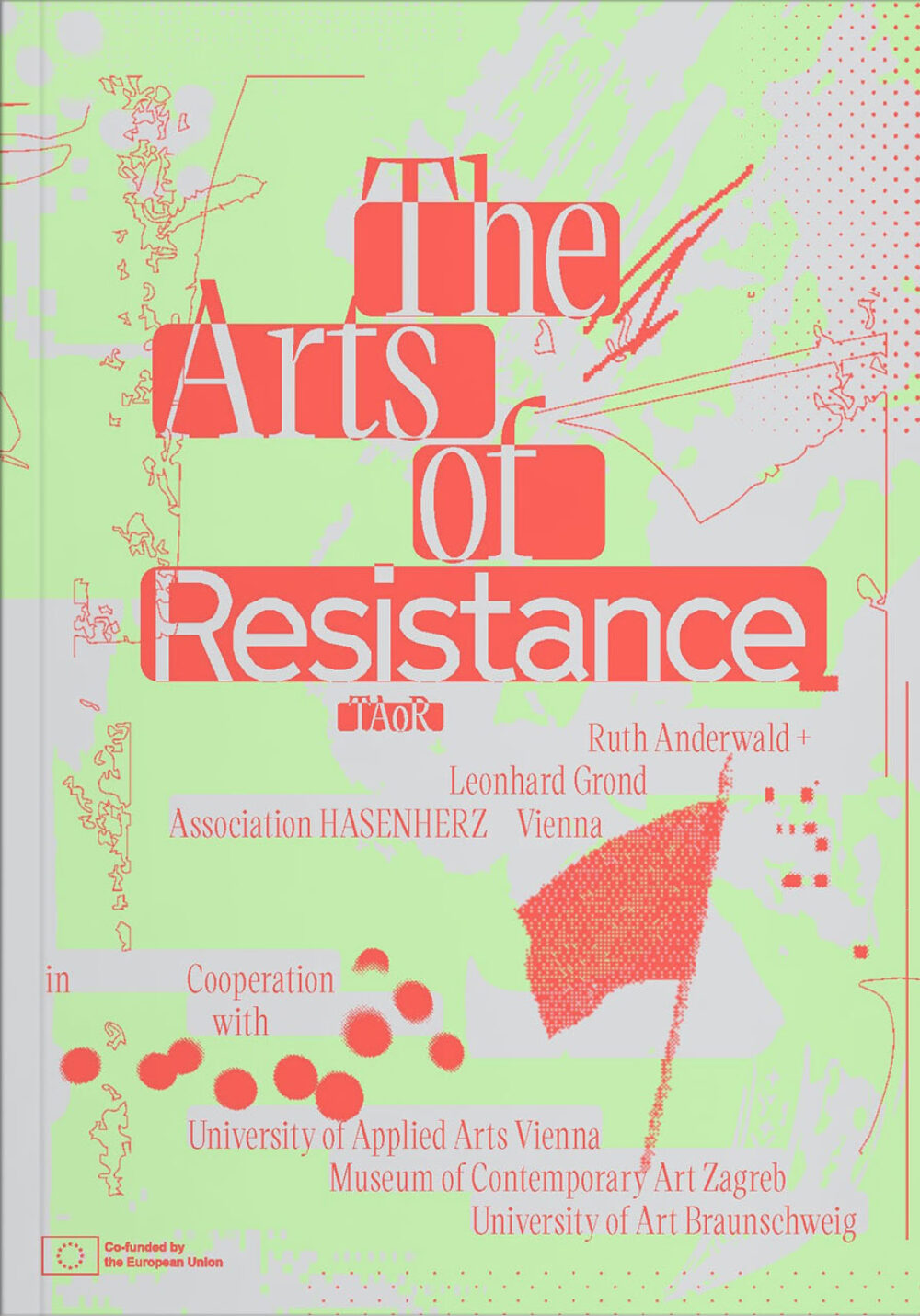
Oct 13 2025
We are excited to share that our publication, The Arts of Resistance, has been printed and is set to be published at the end of November. We sincerely thank the teams at HammerAlbrecht and VfmK Verlag für moderne Kunst for their wonderful collaboration in bringing this publication to life. You are welcome to order the book via this link, and we will also provide a PDF version here shortly.
photo © HammerAlbrecht
I would have loved to take part myself: To learn about historical fascism, to detect and recognise its current forms, and how, despite our different origins and strategies, we fundamentally belong to the same side. These days, the way frontlines are drawn is so unbearably ugly and banal, it seems not just reasonable to develop an art of resistance, it could also be beautiful.
Eva Menasse, writer
June 30 2025
“Not to forget means to stay active, reach out to each other, and build a more just society. Together, we can do it.” – Participants of the project The Arts of Resistance for the virtual commemoration.
May 8, 2025, marked the 80th anniversary of the unconditional surrender of the German Wehrmacht and the official end of the Second World War in Europe. On this day, the Mauthausen Committee Austria (MKÖ) held its thirteenth Festival of Joy at Vienna's Heldenplatz in memory of the victims and in celebration of liberation from Nazi terror.
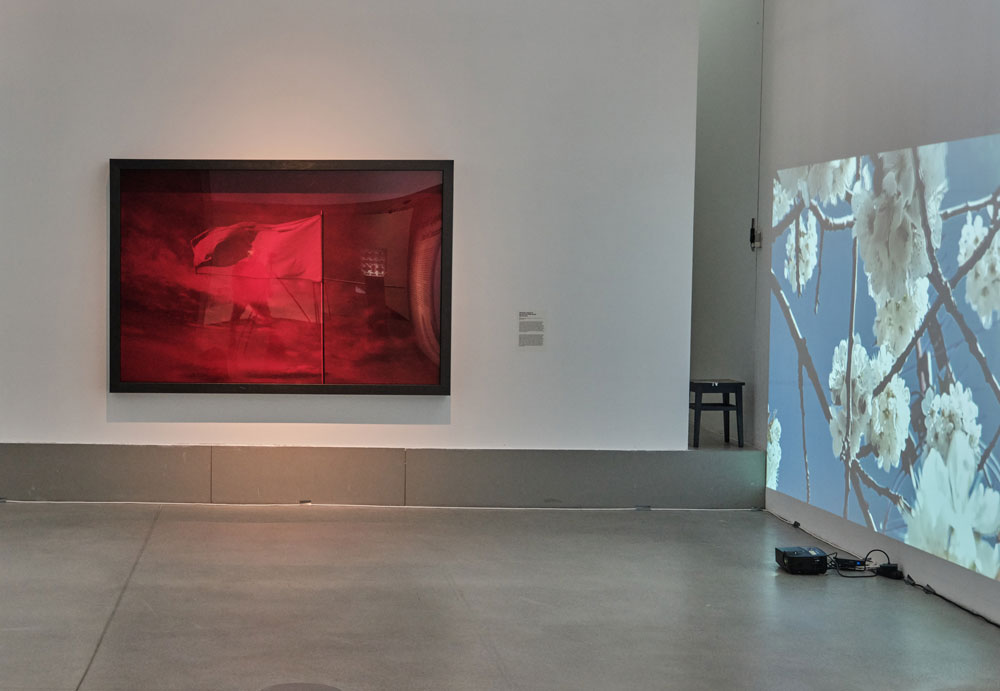


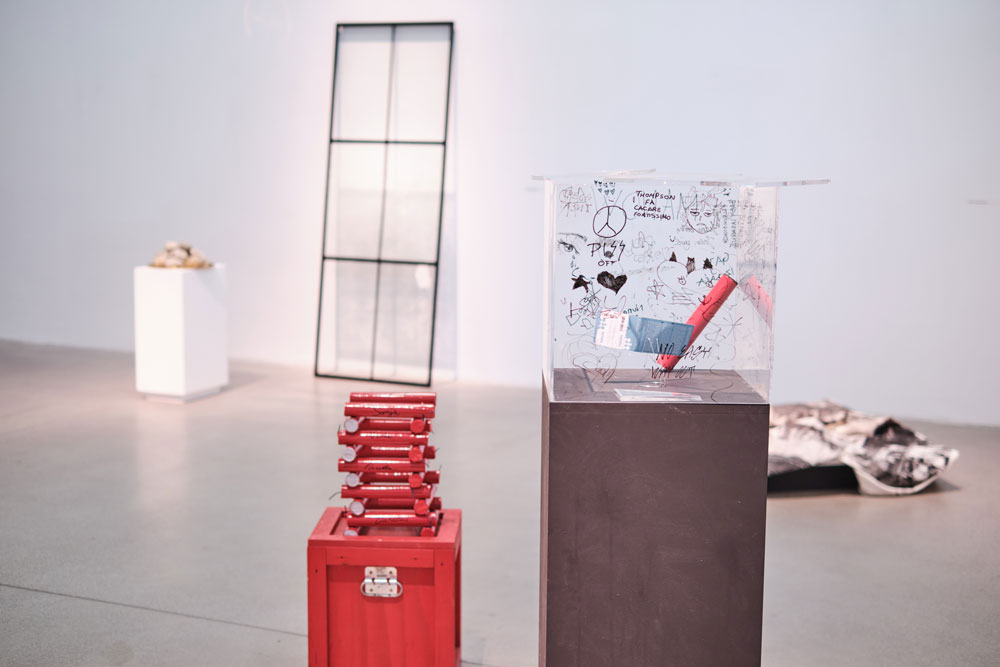
May 10 2025
Here are a few exhibition views from our exhibition at MSU Zagreb.
It was overwhelming, it was intense, it was a lot. We are all full of stories.
Participant of The Arts of Resistance





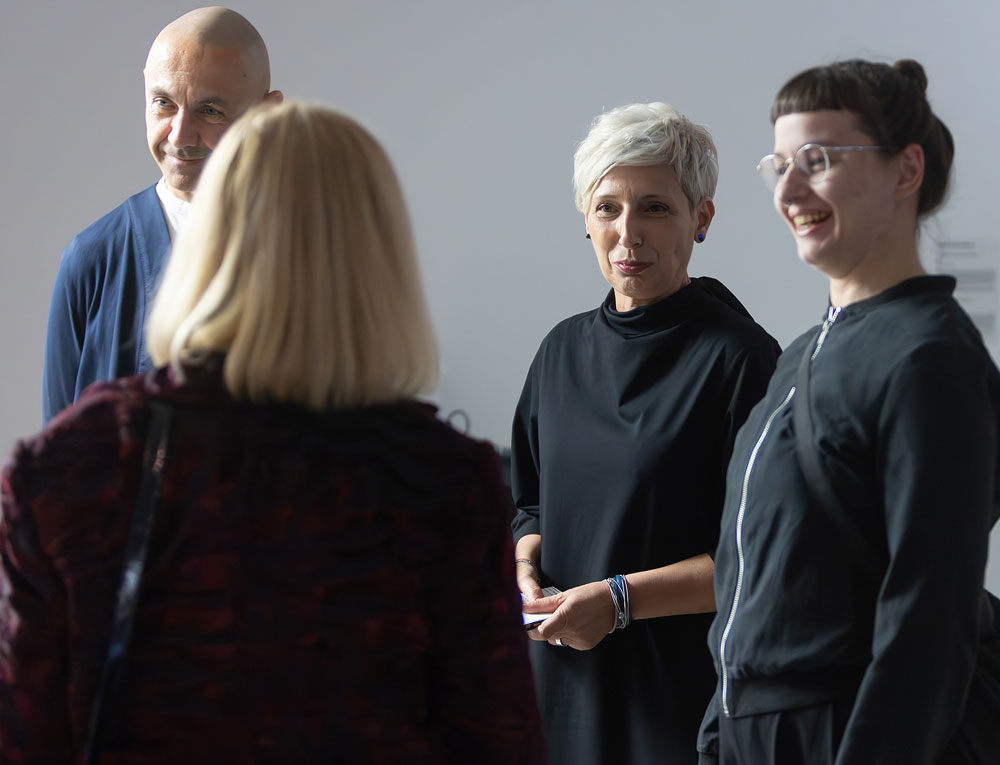




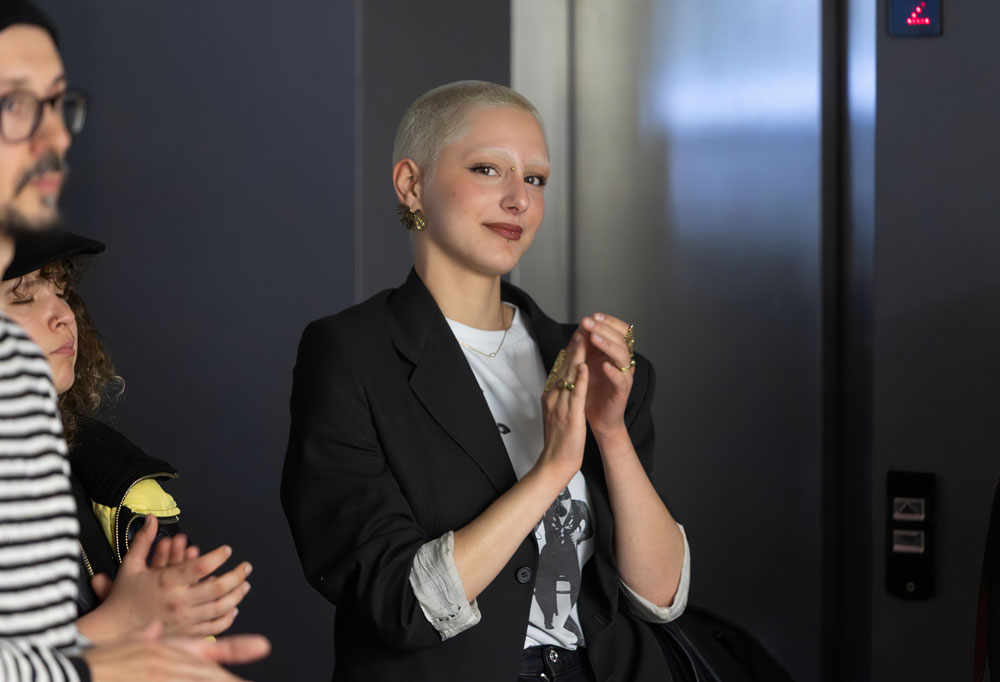


May 8 2025
Opening of The Arts of Resistance exhibition at the Museum of Contemporary Art Zagreb. Thank you to everyone for your engagement and consistency at this amazing journey. The evening closed with a performance in front of Sanje Iveković's monument.
Fascism: I sometimes fear...
I sometimes fear that
people think that fascism arrives in fancy dress
worn by grotesques and monsters
as played out in endless re-runs of the Nazis.
Fascism arrives as your friend.
It will restore your honour,
make you feel proud,
protect your house,
give you a job,
clean up the neighbourhood,
remind you of how great you once were,
clear out the venal and the corrupt,
remove anything you feel is unlike you...
It doesn't walk in saying,
"Our programme means militias, mass imprisonments, transportations,
war and persecution."
Michael Rosen
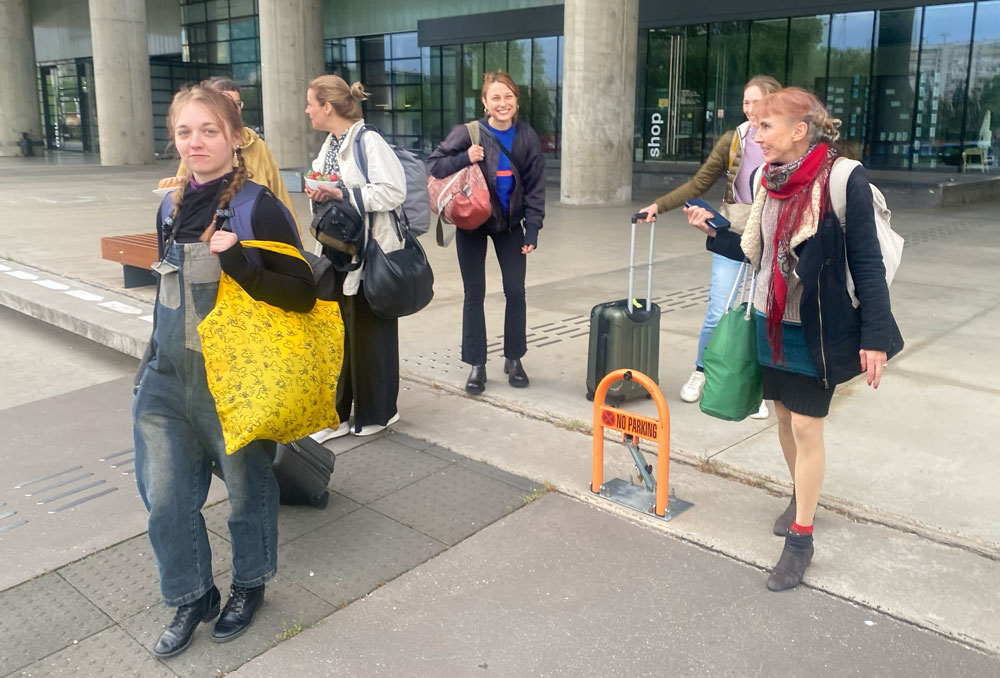

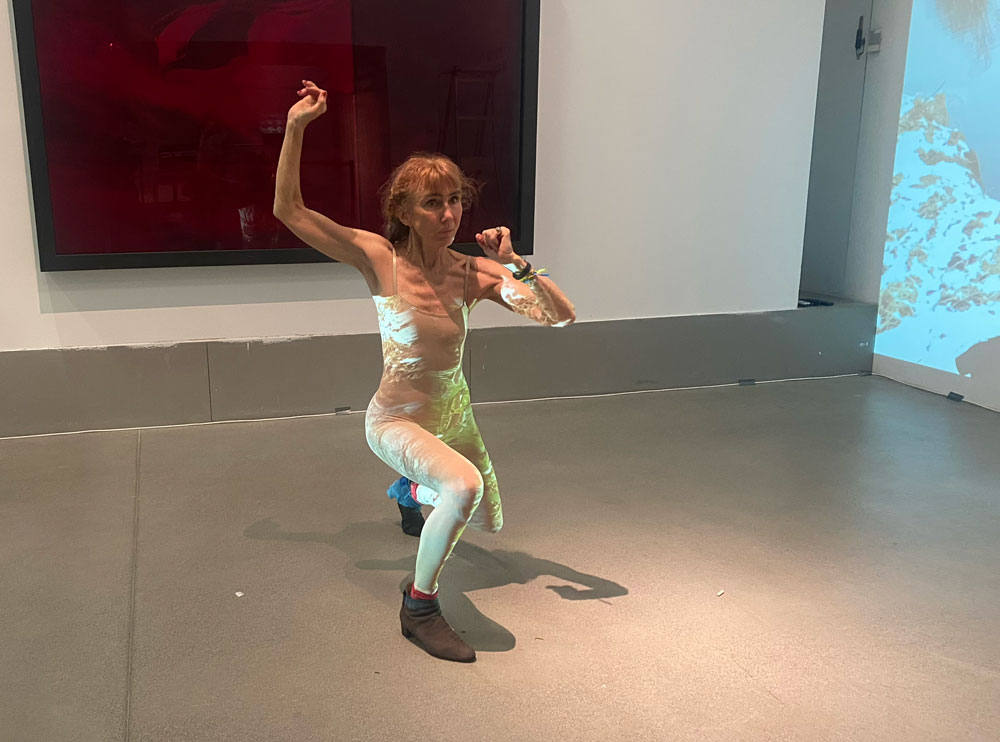
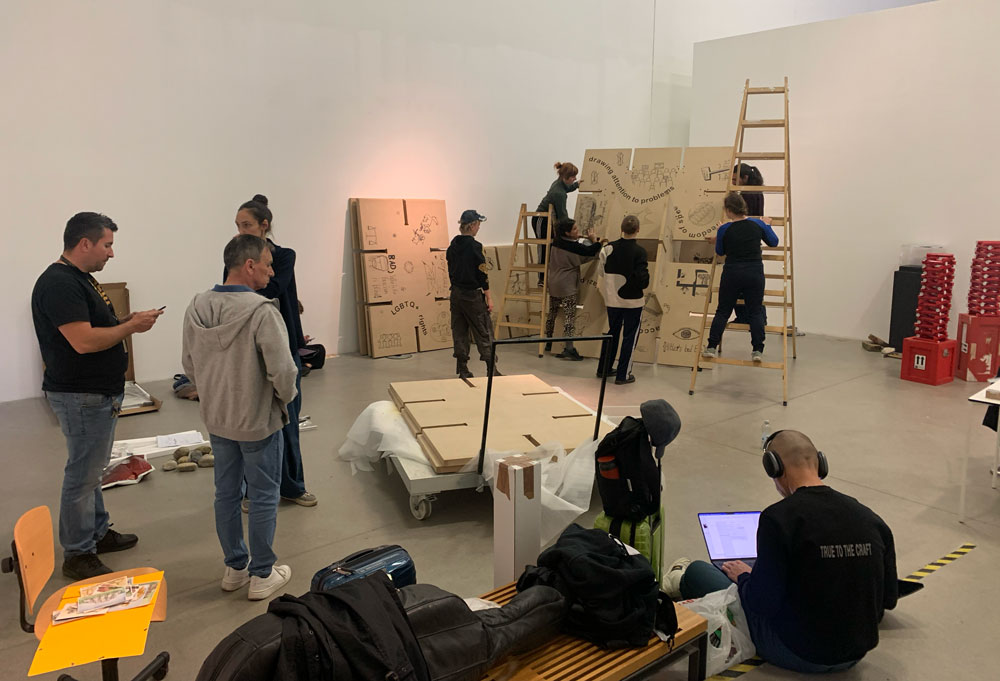



May 7 2025
After a year of dedicated discussion, research, and investigating resistance against fascisms, we are excited to arrive in Zagreb from Braunschweig and Vienna to reconnect with everyone. At the Museum of Contemporary Art Zagreb, we are preparing the exhibition and working on performances, and we are looking forward to the opening on May 8, 2025.
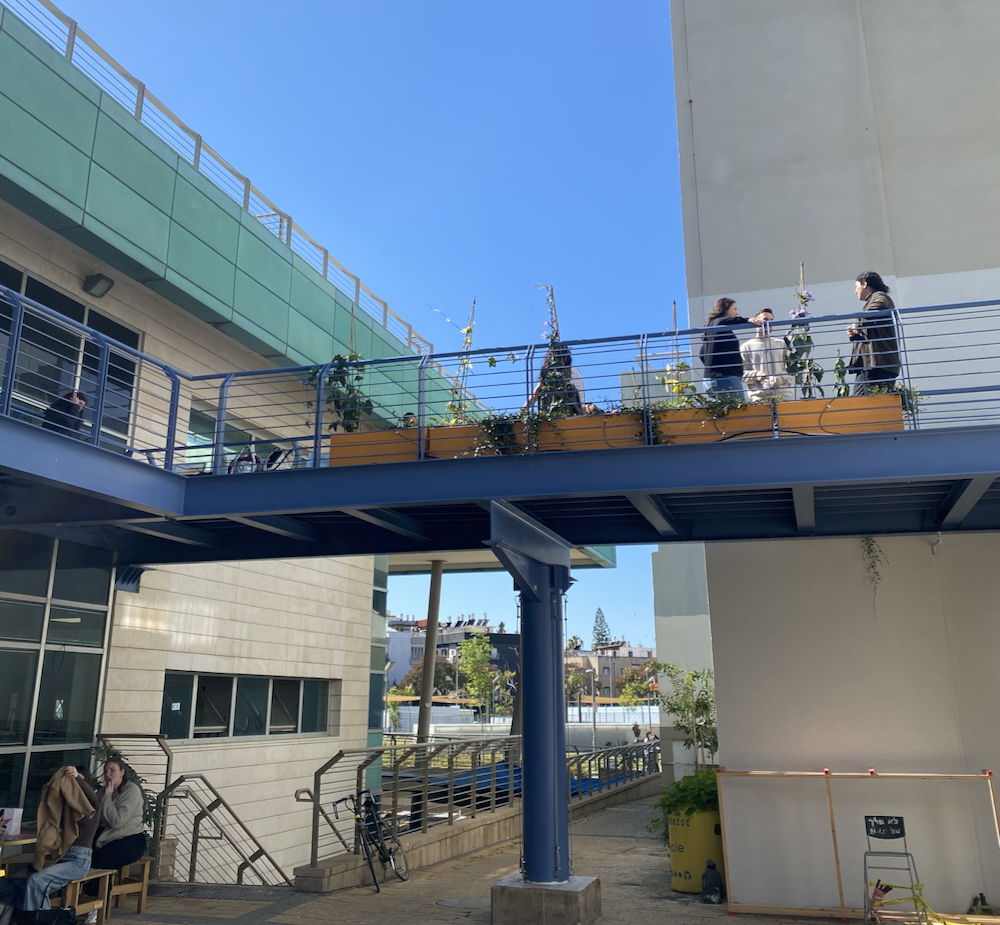

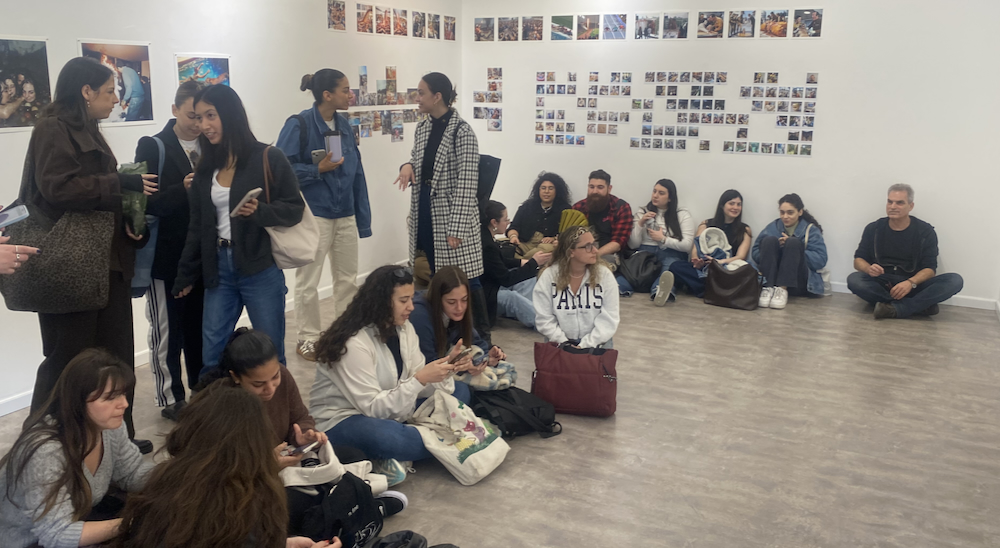

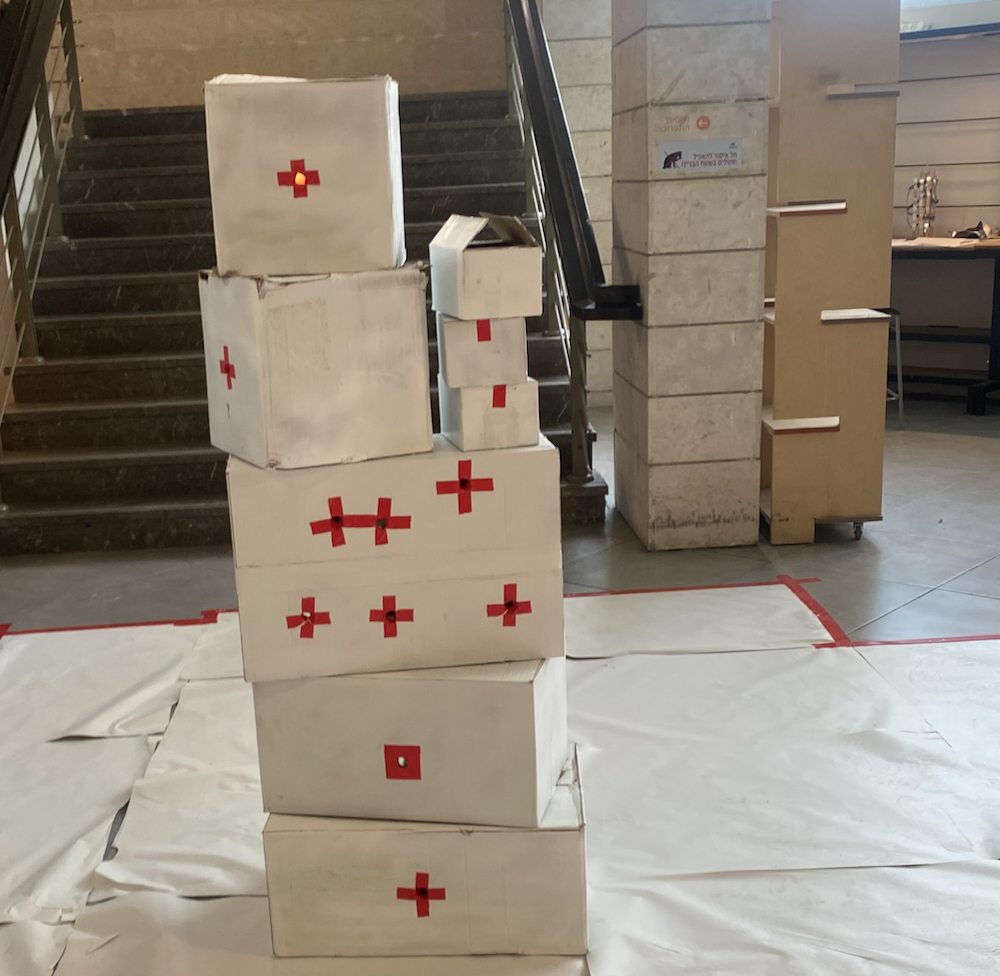

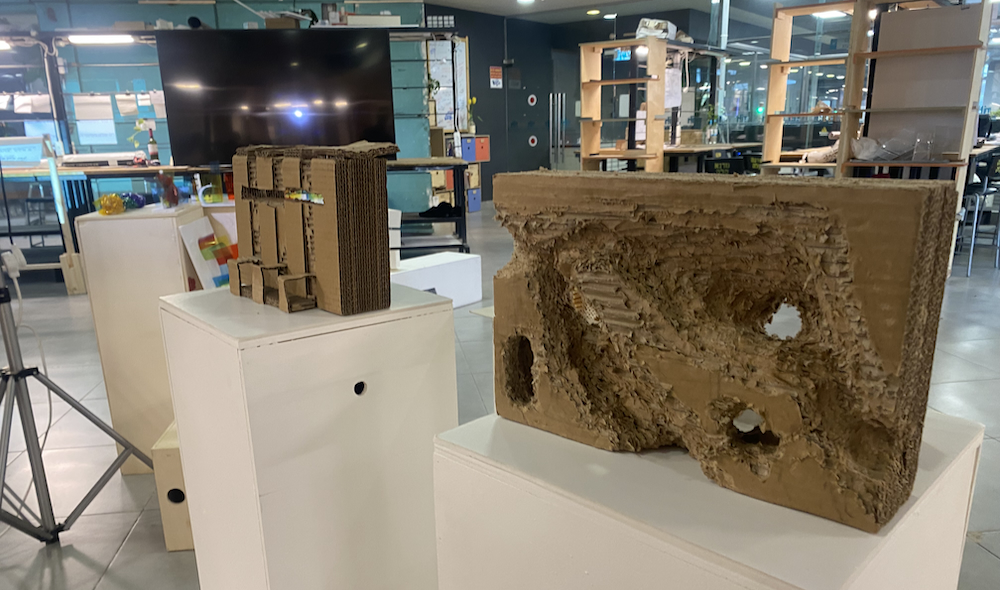
March 1 to March 7 2025
At the International Design Week at the Holon Institute of Technology, we had the opportunity to conduct an anti-fascism workshop with students and explore design prototypes inspired by discussions around Umberto Eco’s 14 characteristics of fascism. We truly appreciated the invitation and the inspiring conversations.

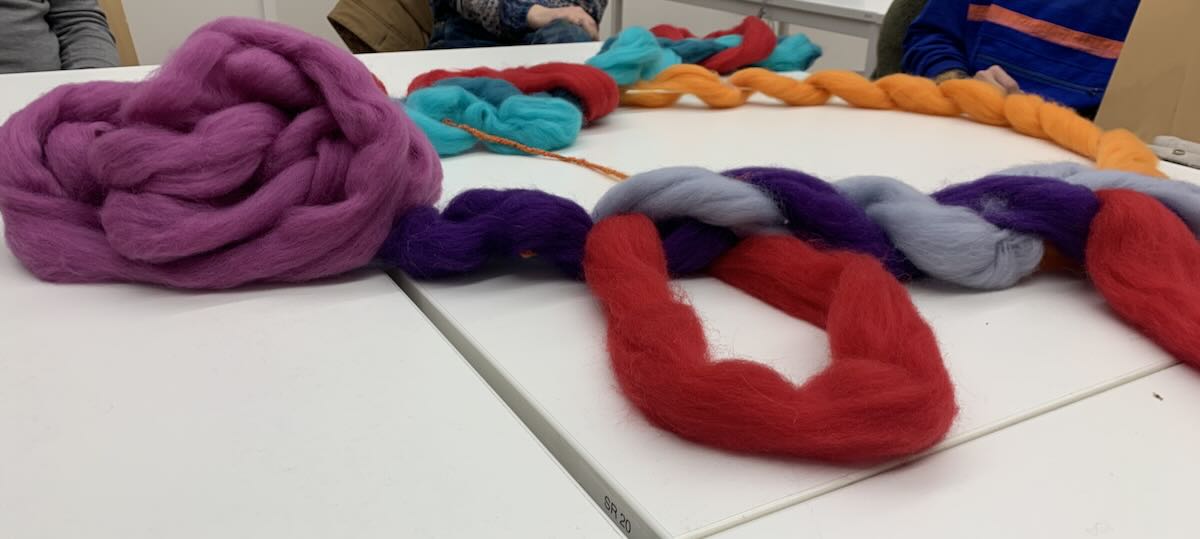
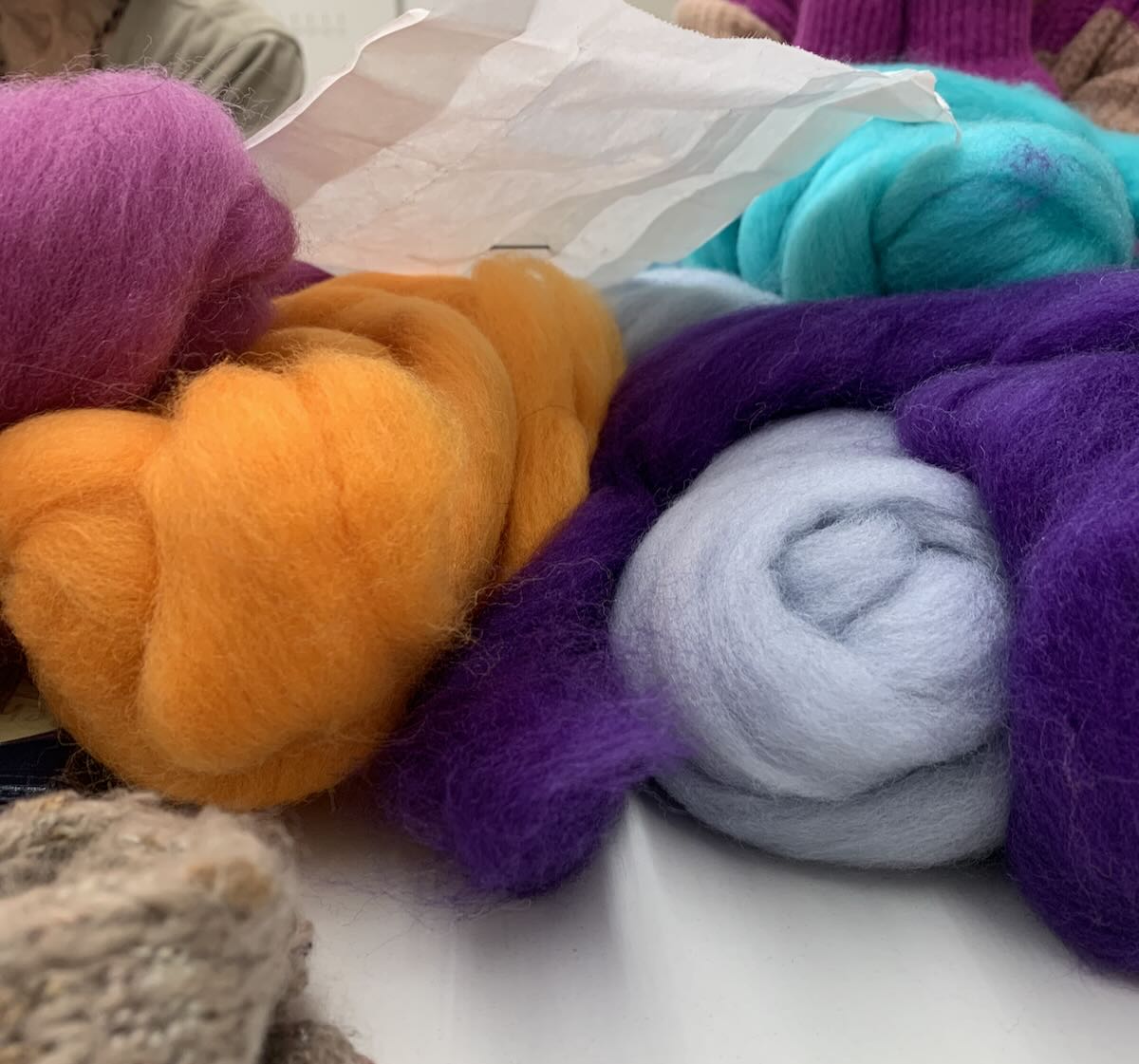
January 15 2025
In Vienna, we are currently in the phase of prototyping and testing various ideas for the exhibition. Through a collaborative effort, we create something mutually beneficial together as a united force, sharing responsibility and ownership of whatever is created.
Co-Creation is a set of processes and working methods and approaches that seek to generate change.
︎︎︎ It takes place ‘with’ and not ‘to’
︎︎︎ It has not set outputs but is outcome focussed
︎︎︎ It focuses on the ‘how’ and not the ‘what’
︎︎︎ It is process driven not product driven
︎︎︎ It may be facilitated but leadership shifts
︎︎︎ It may use art to generate changes but is likely to apply to all stages of programme development, design and evaluation
︎︎︎ It shifts agency and power and challenges privilege
︎︎︎ It brings partners together on an equal footing
︎︎︎ It is relational and not transactional
︎︎︎It empowers and includes
Excerpt from the report by Considering Co-Creation, Heart of Glass & Battersea Art Centre.
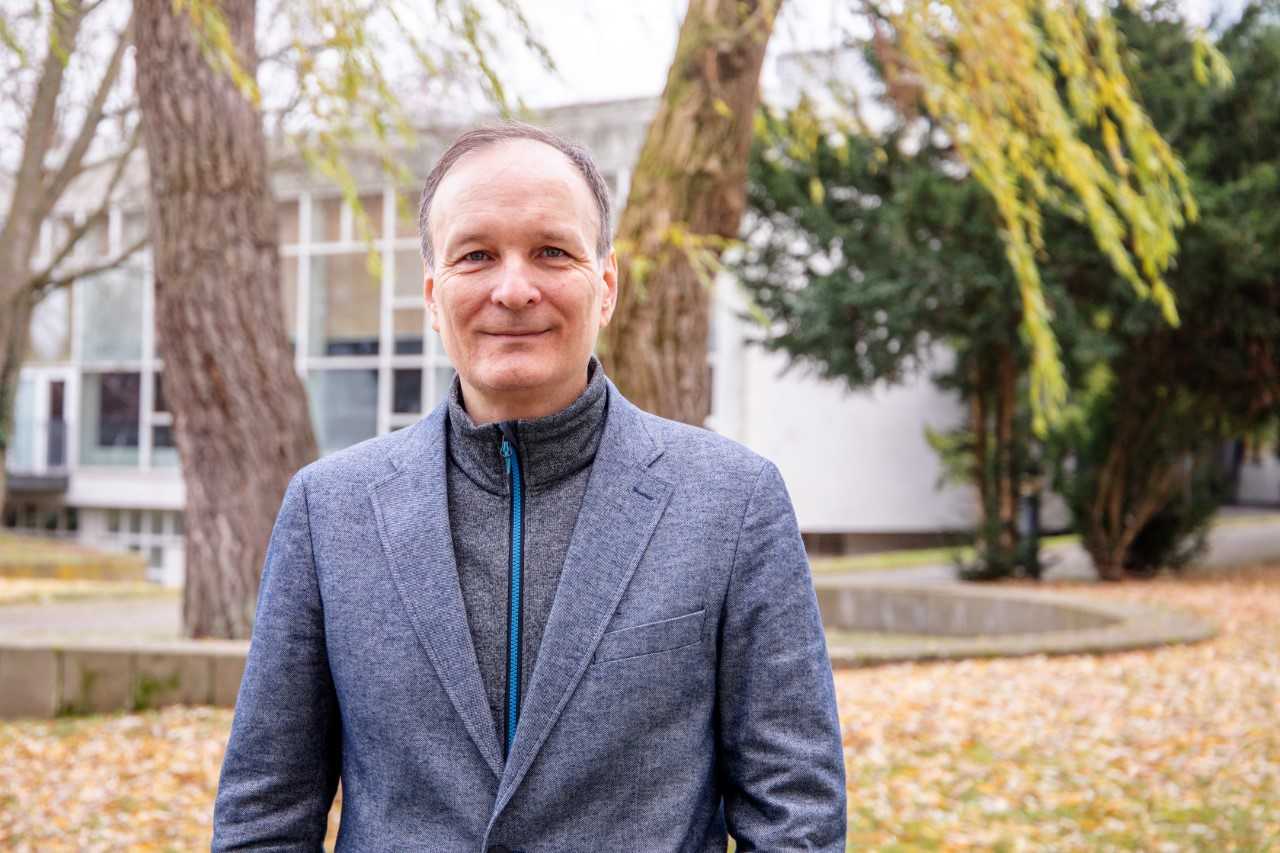
January 7 2025
Interview with Prof. Martin Krenn, PhD on the intergenerational artistic research project The Arts of Resistance. (German only, photo: Gabriel Anastasescu)



December 12 2024
The Women to Women collective uses art as a way to bring together women who want Croatia to be their home and women for whom Croatia is already their home, in order to facilitate integration into a new community that is constantly developing. The idea of the project is to create a safe and intimate space for women in which they exchange ideas, problems, solutions or simply spend time together. The Youth Club visited the Live Atelier on December 12, 2024. and worked on the process of preparing wild clay for further work by women in the Atelier while discussing the experiences of the women who hosted us.
Can Art Fight Fascism?
Justin Kaushall considers Adorno’s argument that radical art radically changes consciousness. Read more.
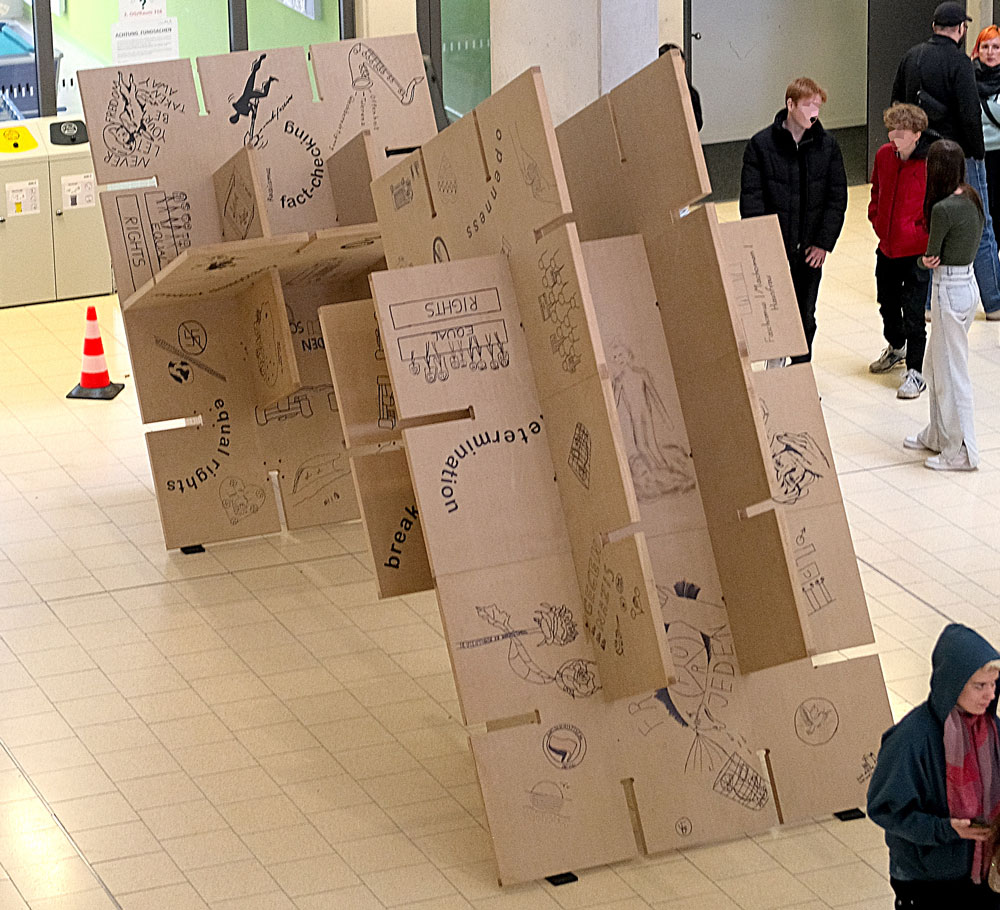

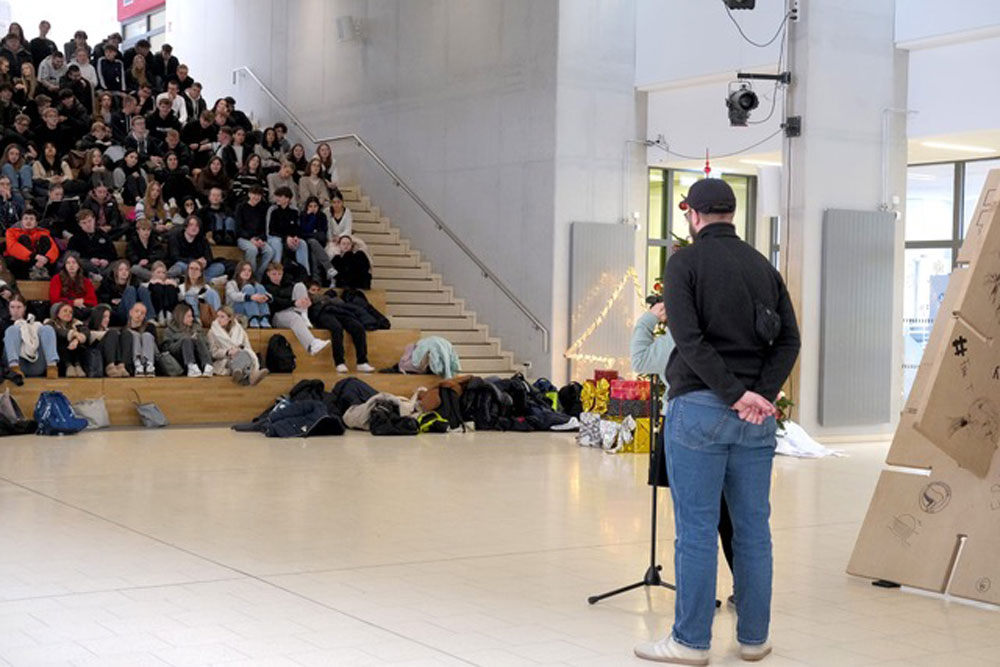
December 6 2024
Today we had a wonderful opening with hundreds of school students, teachers, an amazing school band, activists from Bündnis gegen Rechts – Braunschweig (Alliance against the right – Braunschweig), Rote Falken, and Omas gegen Rechts (Grandmas against the right) to unveil our large version of the modular sculpture for democracy and against fascism in the Wilhelm Bracke Gesamtschule Auditorium. The motifs on this sculpture were created by school students as part of two 90-minute workshops at Wilhelm Bracke Gesamtschule, IGS Querum, Gymnasium Neue Oberschule and Realschule Georg-Eckert-Straße. The sculpture and the workshops were designed and realised by the art education department of the FREIE KUNST Institute at the Braunschweig University of Fine Arts under the direction of Prof. Martin Krenn in cooperation with RAHM Architects as part of the EU project The Arts of Resistance.
Participating students from HBK Braunschweig: Maria Ammann, Henadzi Arkhipau, Paul-Can Atlama, Dana Crasser, Natascha Faber, Xiaoming Huang, Fiona Jassmann, Nelly Khabipova, Laetitia Lentz, Hye-Hyun Kim, Merve Gisou Rosenthal, Daphne Schüttkemper
Cooperation partners in Braunschweig: „Demokratie leben!“ Braunschweig and VHS Braunschweig
Content support and networking with schools: Anna-Sophie Schröder


December 2 2024
We have just begun the design process for our publication and look forward to collaborating with Daniel Hammer.


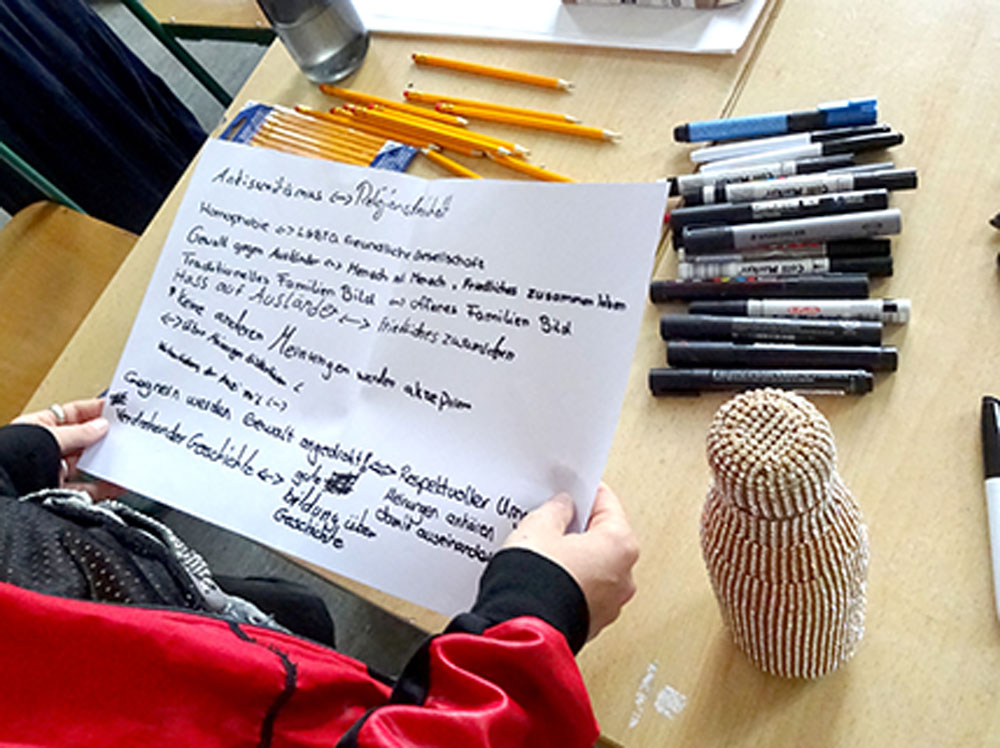

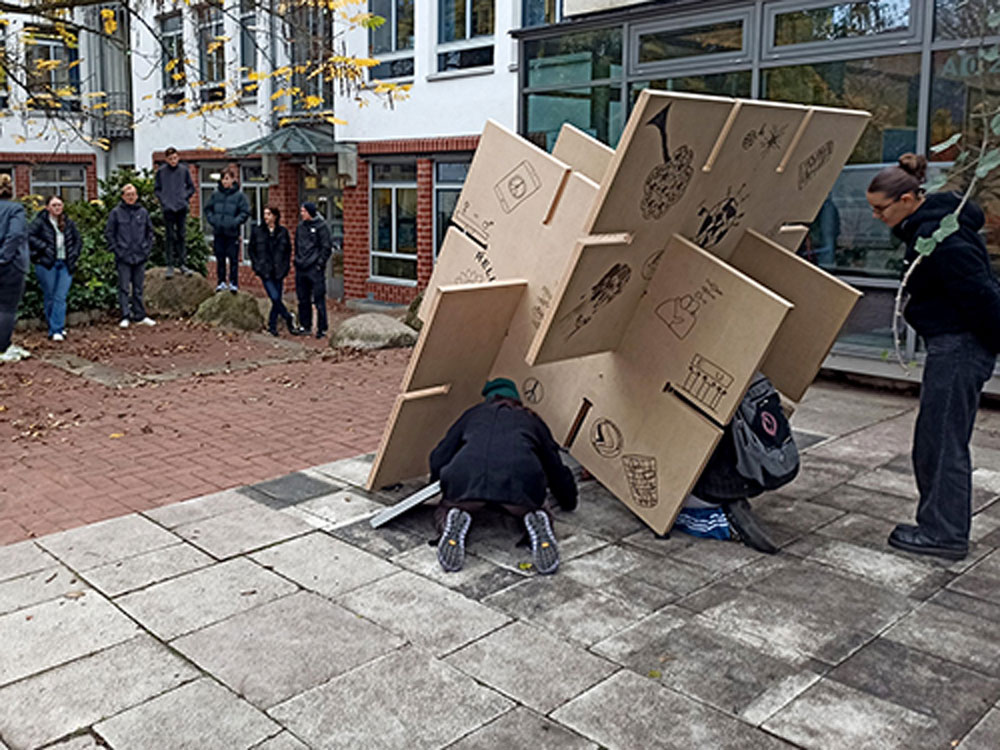
November 29 2024
We, the group from HBK Braunschweig, aim to realise an anti-fascism project in Braunschweig in collaboration with schools. In cooperation with Living Democracy! Braunschweig and Anna-Sophie Schröder from the VHS Braunschweig, four Braunschweig schools could be won over. In the summer semester of 2024, students of Zusatzqualifikation Kunstvermittlung (supplementary qualification art education/mediation) held two 90-minute workshops at the Wilhelm Bracke Comprehensive School, the IGS Querum, the Neue Oberschule High School and the Georg-Eckert secondary school. As part of these workshops, motifs for a modular anti-fascism sculpture emerged. In the first workshop at the schools, the students set up three stations in the classroom on the topics Braunschweig during the Nazi era, Art against Fascism and Braunschweig today. Around the tables of these stations, on which there were photos of former Nazi locations in Braunschweig, printed social media posts of Braunschweiger neo-Nazis and anti-fascist art from the classic avant-garde, the students discussed with the school students the current state of democracy and the Situation in Braunschweig. The results of this workshop were summarized in short terms which became the starting point for designing the motifs in the follow-up workshop. A selection of terms can also be found as printed text on the sculpture. In the second workshop, the school students finally drew the motifs for the anti-fascism sculpture. The students provided them with advice and support in their role as aspiring visual artists.
The technical construction of the modular sculpture was constructed in collaboration with RAHM Architects. The sculpture was unveiled and installed in the IGS Querum schoolyard in November 2024. In December 2024 it will be presented in the auditorium of the Wilhelm Bracke Comprehensive School, in January/February 2025 in the entrance area of the VHS Braunschweig and in May 2025 in the Museum of Contemporary Art Zagreb as part of TAoR's final exhibition. (Martin Krenn)
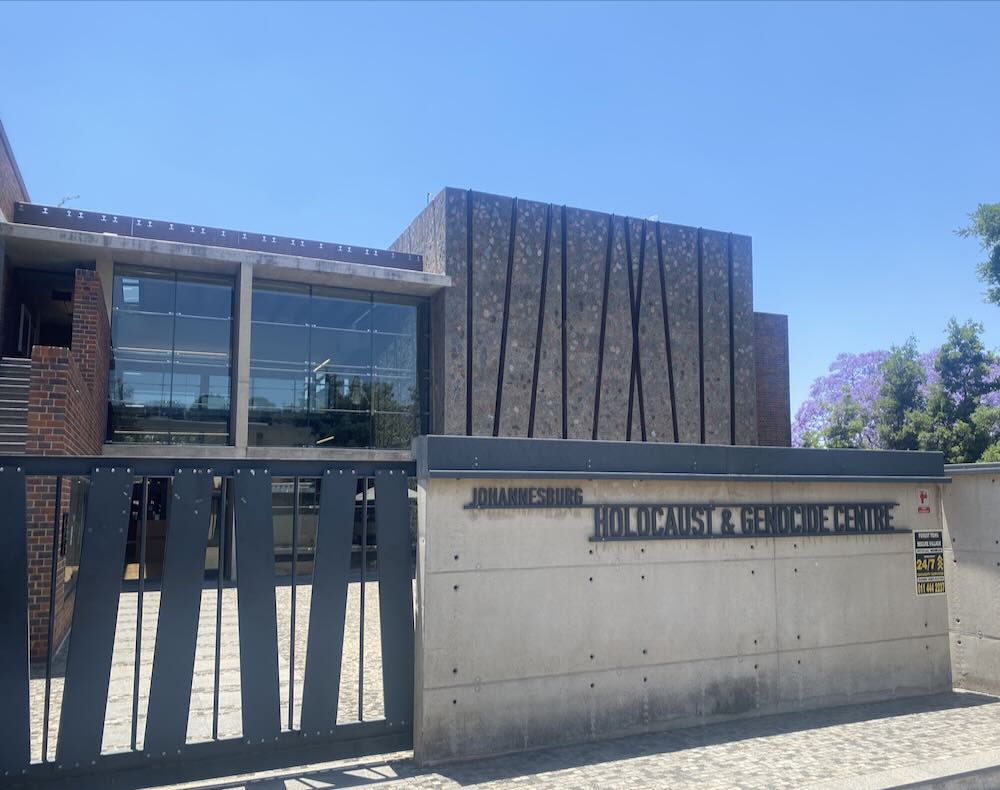
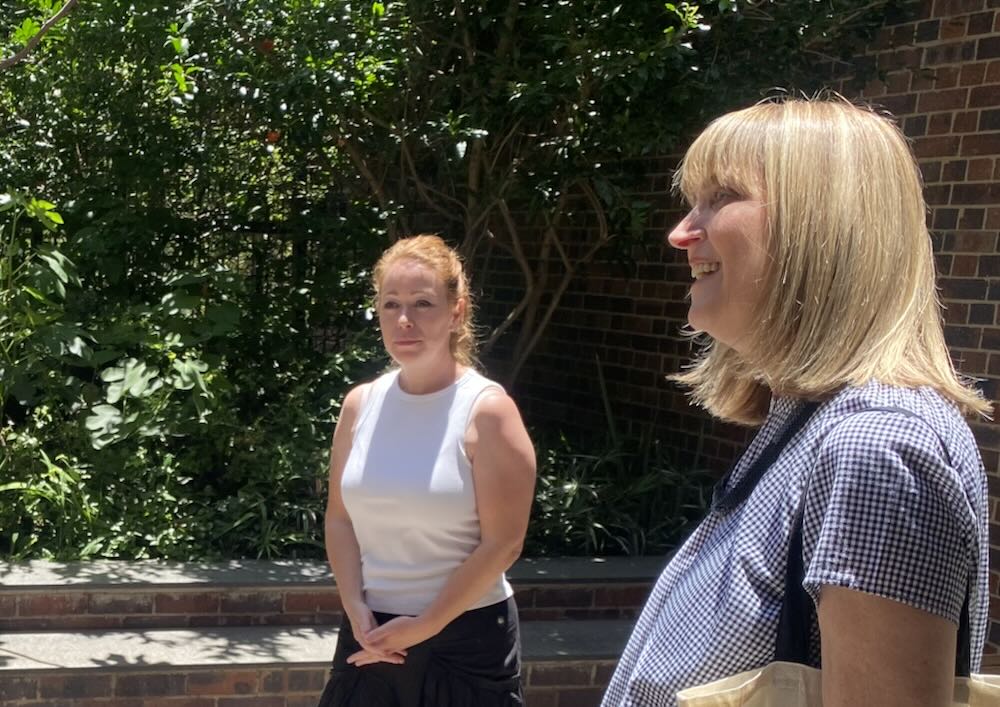
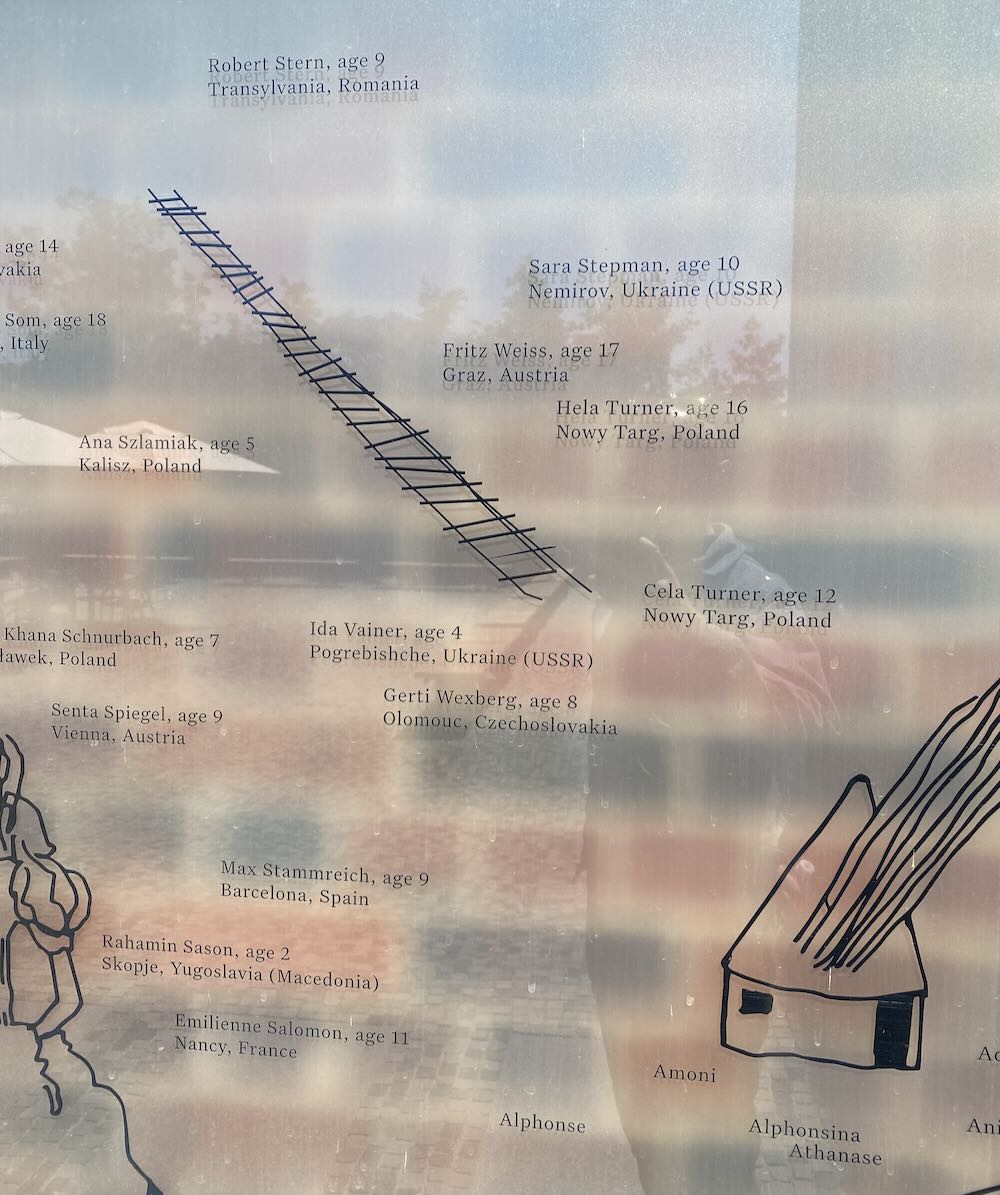


October 26 – November 3 2024
Thanks to the Austrian Cultural Forum in South Africa, we were able to visit institutions in Cape Town and Johannesburg. In Cape Town, we explored the Holocaust and Genocide Centre and Robben Island, where Nelson Mandela was imprisoned, among many others. In Johannesburg, director Tali Nates guided us through The Johannesburg Holocaust & Genocide Centre, which she established. This centre serves as a place of remembrance, education, and lessons for humanity. The JHGC explores the history of genocide in the 20th century, focusing on the Holocaust and the 1994 genocide in Rwanda. It explores the connections between genocide and contemporary human rights issues, urging visitors to understand the consequences of prejudice, discrimination, and othering in order to prevent the recurrence of mass atrocities and genocide in all its forms. We deeply appreciate this opportunity and the subsequent dialogue.
... that I owe it to them to defend them against the abuse of their history and their family’s history.
Robert Rotifer
In connection with the ongoing exhibition, The Third Generation: The Holocaust in Family Memory, at the Jewish Museum Vienna, director Barbara Staudinger conducted interviews with members of the third generation to discuss their unique perspectives on their grandparents’ history and their own generational identity. Robert Rotifer reflects on his grandmother Irma Schwager, in whose honour he devoted an evening during our Exchange Week. Read more.


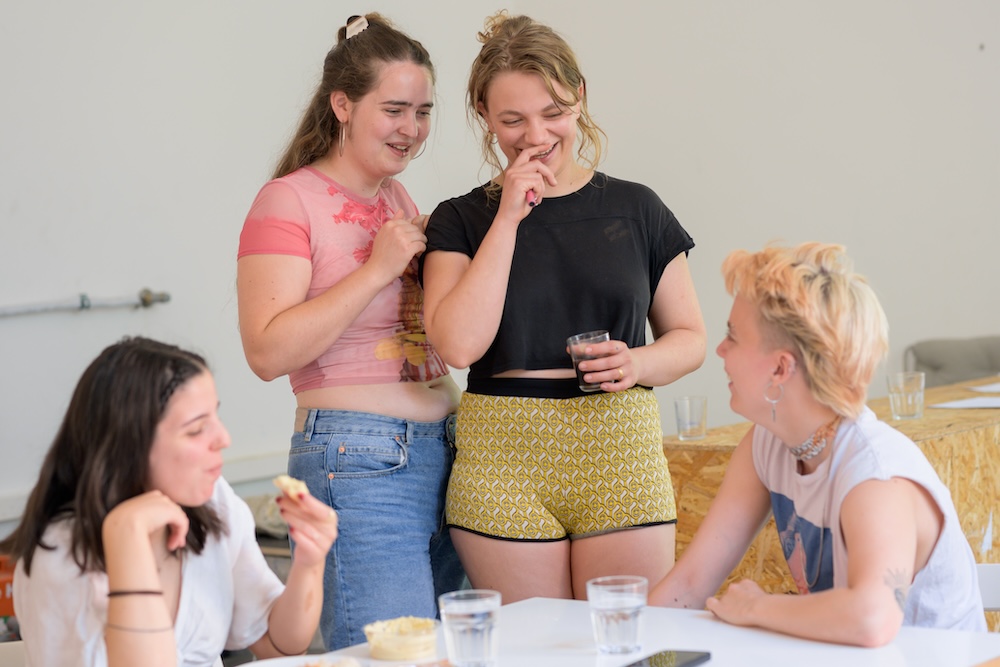
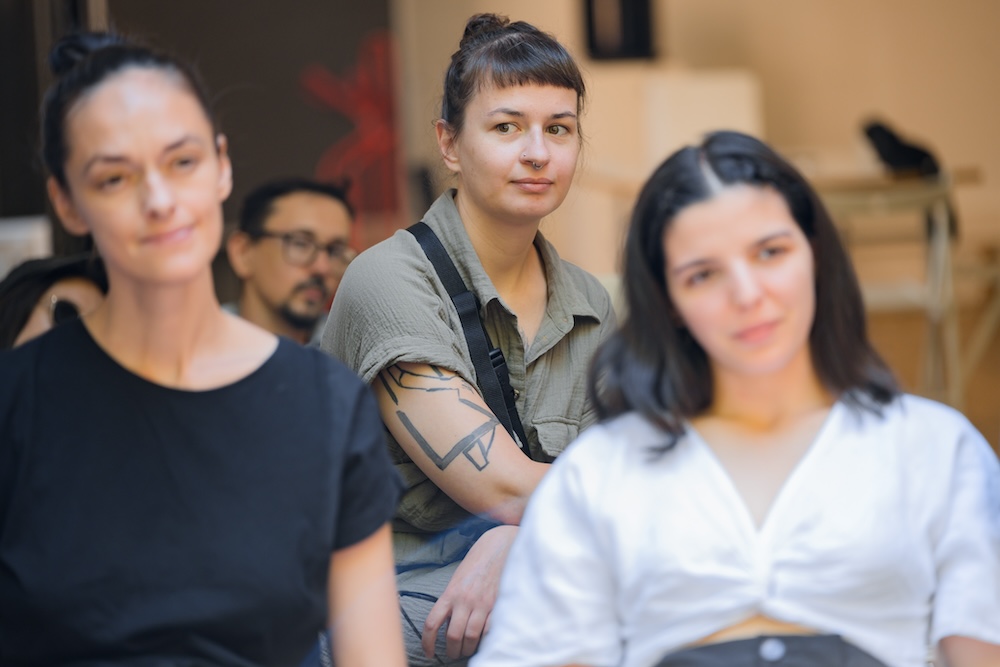
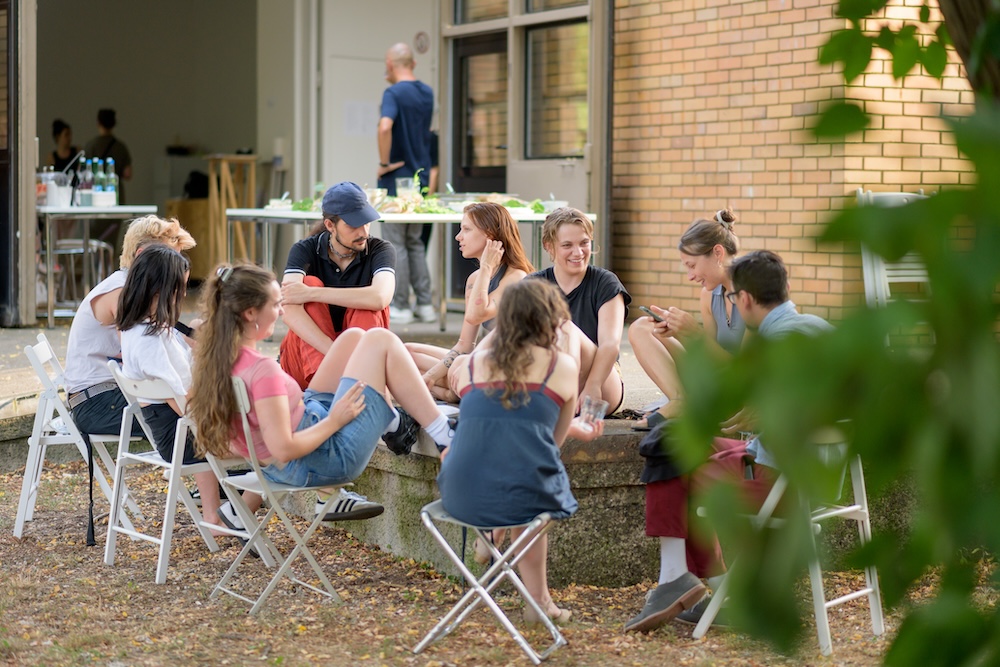




September 1 2024
We are now ready for the next phase of our project! After an incredible exchange of ideas, we have to say goodbye, and everyone is heading back to their cities to create artworks and prepare for the exhibition at the Museum of Contemporary Art, Zagreb. On 8 May 2025, marking the 80th anniversary of the liberation from the Nazi regime, we will meet again to open our exhibition. But for now, it's time to celebrate! Join us at the university’s garden as we toast to this journey and everything to come.
August 31 2024
On the final evening of our Exchange Week, artist Jo Schmeiser showcased her award-winning film, Widerstandsmomente (Moments of Resistance).
Widerstandsmomente carries voices, writings, and objects from the anti-Nazi resistance into the present. Politically engaged women of today respond to historical resistance and make links to current events. A line is drawn from what was before and what is today to what might be: a society based on solidarity without discrimination or exclusion.
The film served as a poignant reflection of the themes we explored during the week and helped us prepare for the upcoming months, when we will co-create works for our exhibition at the Museum of Contemporary Art, Zagreb.


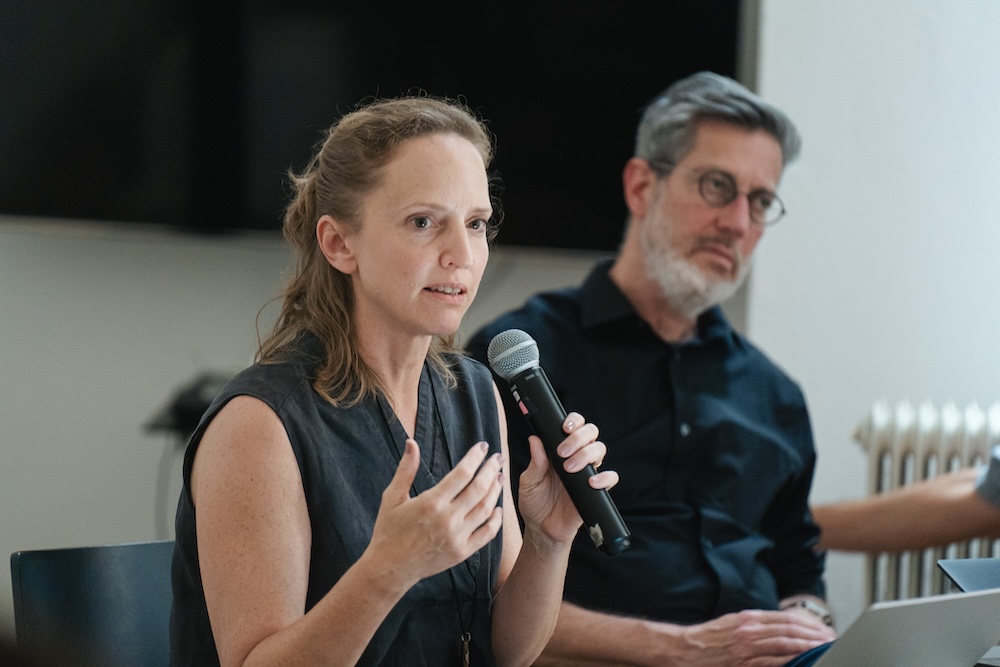




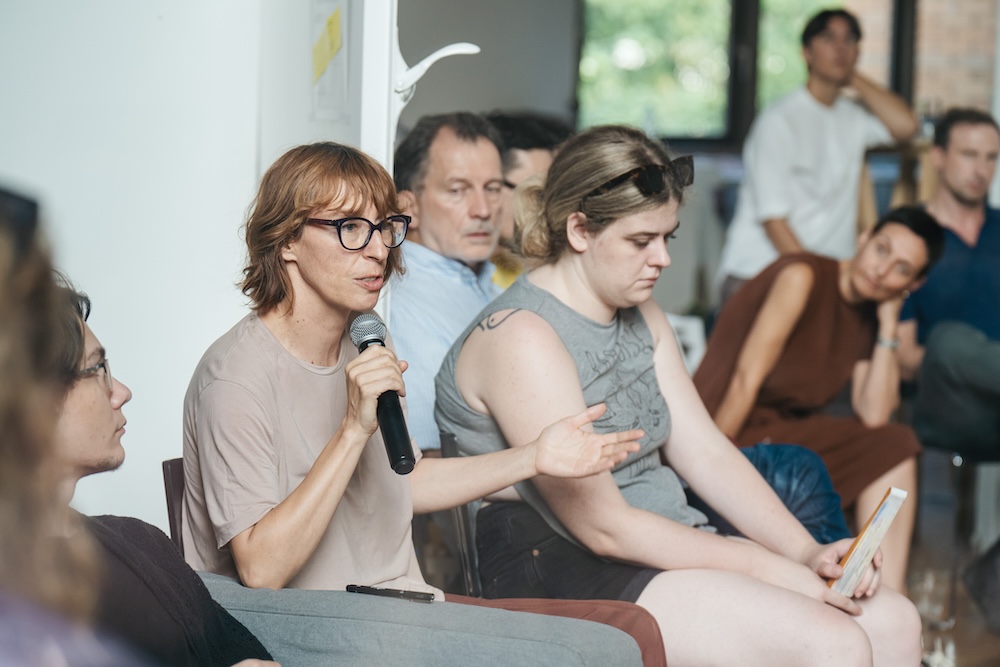
August 30 2024
Thank you so much, to the rectorate of Bezalel Academy of Fine Arts, specifically to Adi Stern, Barak Pelman and Liat Brix-Etgar, for coming to Vienna and discussing with us in person. Your work on the Guidelines for Free Speech and Creative Freedom in Wartime spreads courage, hope, and confidence. We are keenly aware that each and every point of the Guidelines and their creation involved a challenging, even hurtful process. What impresses us so much is that the guidelines were developed from the entire organisation of a university across ethnicities, religious beliefs, genders and ages, across and involving all hierarchical levels. Such work requires a lot of listening and discussing and is therefore a great role model and inspiration.




August 30 2024
On this hot summer day, we welcomed guests from outside Europe, including Liat Brix-Etgar, Barak Pelman and Adi Stern from the Bezalel Academy of Fine Arts, Jerusalem. They presented their thought-provoking project, Guidelines for Free Speech and Creative Freedom in Wartime, which focused on fostering mutual respect and learning from each other, especially in the most challenging situations.
Bezalel is an inclusive academic space that represents the sociopolitical diversity of Israeli society. The academy brings together lived realities, diverse identities, complex and contradictory worldviews. Championing equity, diversity, and independent thinking, Bezalel’s commitment to a diverse population of students and faculty is reflected in every aspect of the academy. Stemming from all segments of society, this dynamic mix of people of varied religious, cultural, and socioeconomic origins and affiliations enriches and energizes the Academy, furthering expanded viewpoints and stimulating original and independent thinking. (Excerpt from Guidelines…)
Prior to the roundtable discussion, we took advantage of the university garden to brainstorm and develop questions for the upcoming conversation.
What does resistance look like in our daily life? ︎︎︎ Resistance without distance.
Participant of the Exchange Week

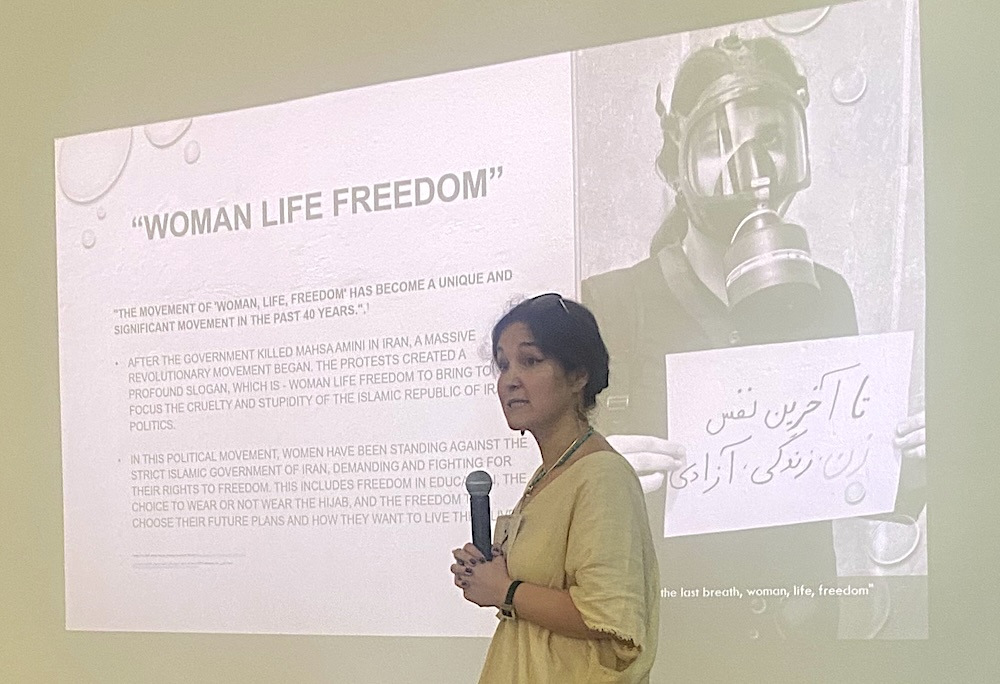
August 30 2024
The second workshop of the day was presented by Gelavizh Abolhassani. Her research explores the historical ties between art and theory, with a particular focus on how artists have interacted with cultural and ideological environments in both Iran and Austria. Gelavizh, an Iranian artist, visual-graphic designer, and PhD researcher, explores the intersection of politics and art, with a particular focus on how sociopolitical phenomena are expressed through art in Iran and Western countries. The workshop compared and contrasted artistic freedom in Austria and Iran.
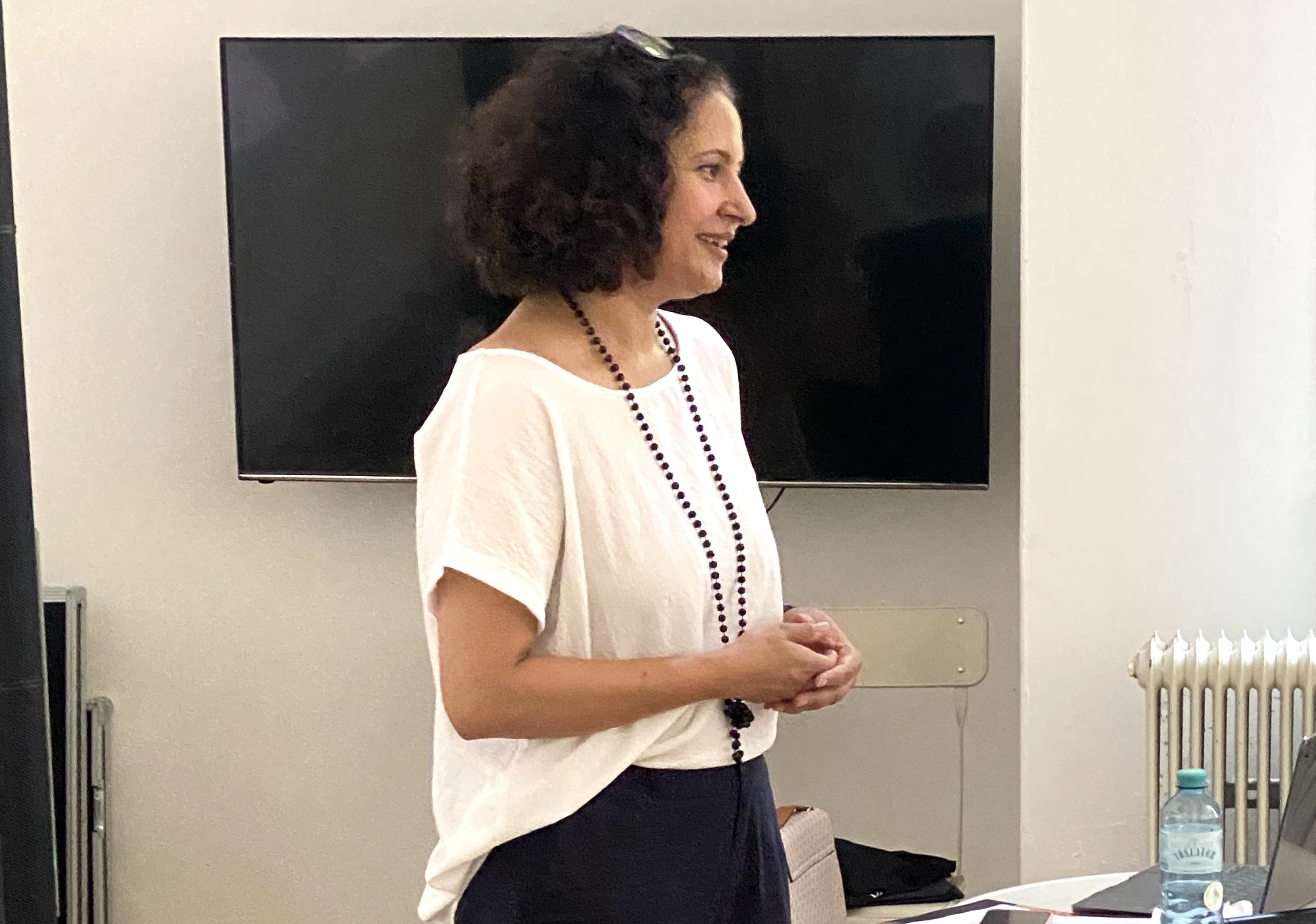
 August 30 2024
August 30 2024Today, we had the privilege of meeting Preeti Kathuria, a writer, curator, and researcher from India, who presented Seeding Change: Indian Contemporary Art Practices and the Agrarian Crisis. Preeti shed light on the crisis existing in farmlands, often overlooked amidst the romanticized perception of rural life. She discussed how contemporary art has served as a platform for critical commentary and intervention into agrarian complexities. Some artworks have deeply explored the land and rural social structures, while others have sought to highlight farmer protests, turning a seemingly distant crisis into a national concern.
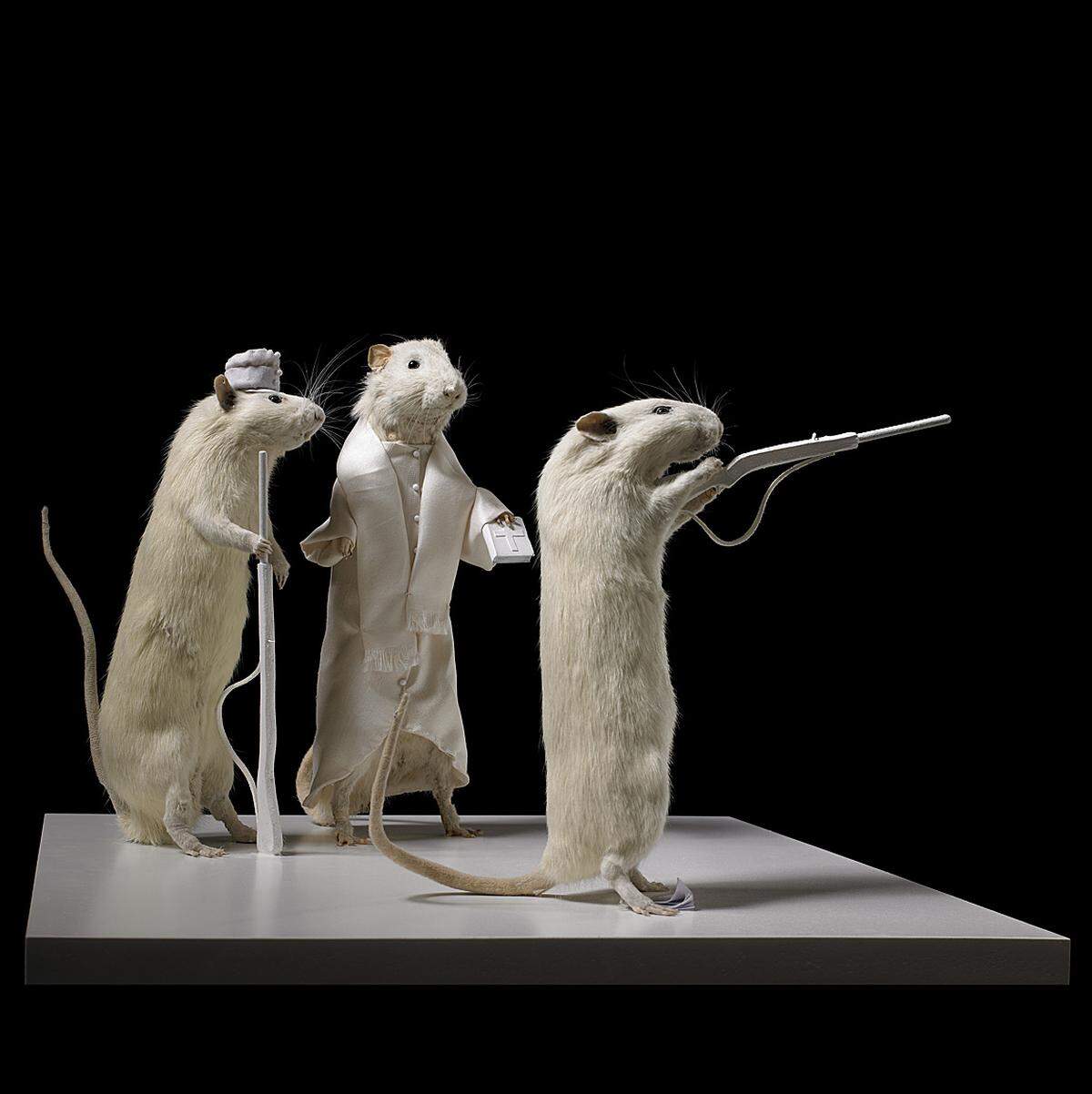

August 29 2024
Artist Deborah Sengl and Barbara Staudinger, the director of the Jewish Museum, guided us through the exhibition The Last Days of Democracy. The year 2024 marks an election year. Throughout Europe, there is a rise in support for parties advocating for "illiberal democracies," trying to convince us that this pairing is not contradictory. Society is divided, with social media echo chambers catering to specific groups and stirring up hostility towards others. The pandemic and war have further polarized public opinion, while the wealth gap continues to widen daily. Antisemitism and racism are prevalent, exacerbated by the war in the Middle East. Many view these circumstances as a foreshadowing of The Last Days of Humankind, making Karl Kraus, celebrating his 150th anniversary this year, more relevant than ever. This is why the rats have returned. Sixteen scenes from Deborah Sengl’s installation have been selected and updated with texts by the Austrian poet Lydia Haider.


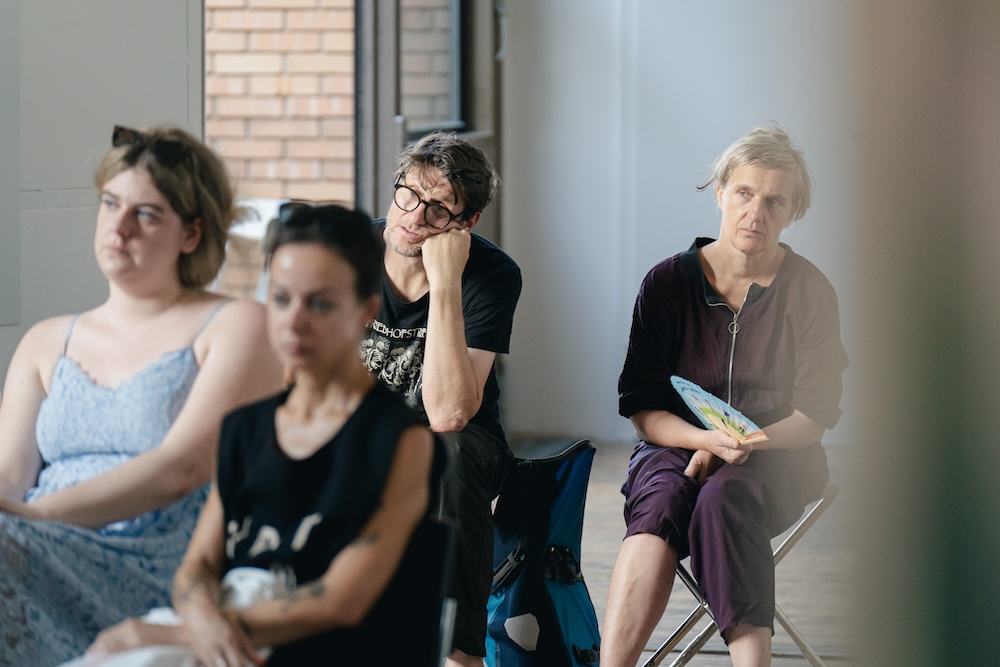




August 28 2024
When we were planning this project, we knew that we had to invite Robert Rotifer to share his stories and songs about his grandmother, resistance fighter Irma Schwager, who had lived in the neighbourhood for almost 70 years. Robert is a wonderful singer-songwriter who, with his stories and songs, made it clear to us what an impact resistance work has on society and how it shapes a family for generations. Thank you, Robert, for this great evening!
Today, we must resolutely resist the attack on fundamental human rights.
Participant of the Exchange Week



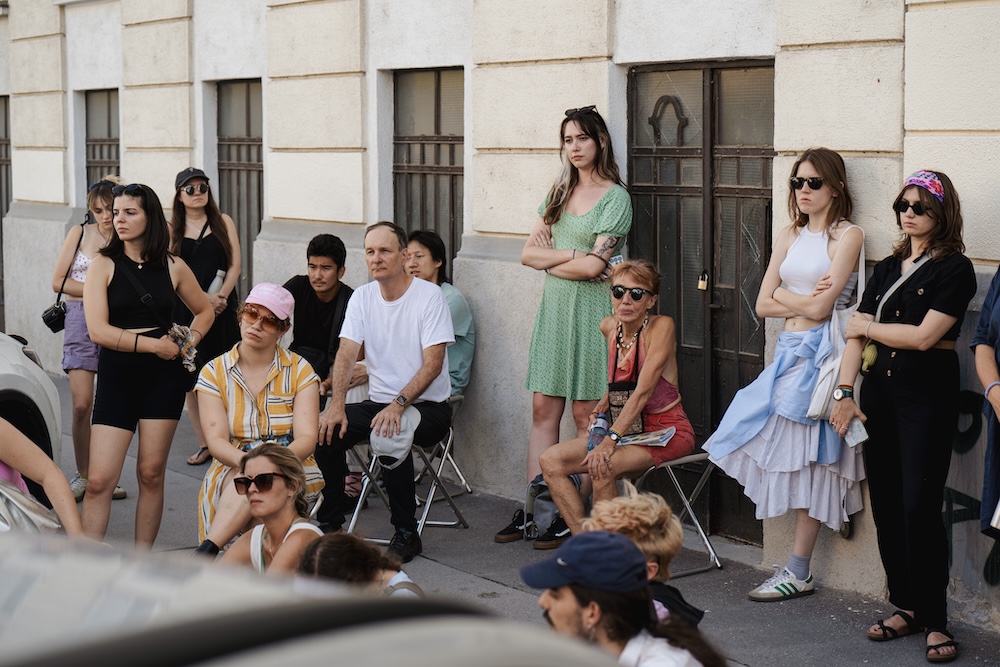
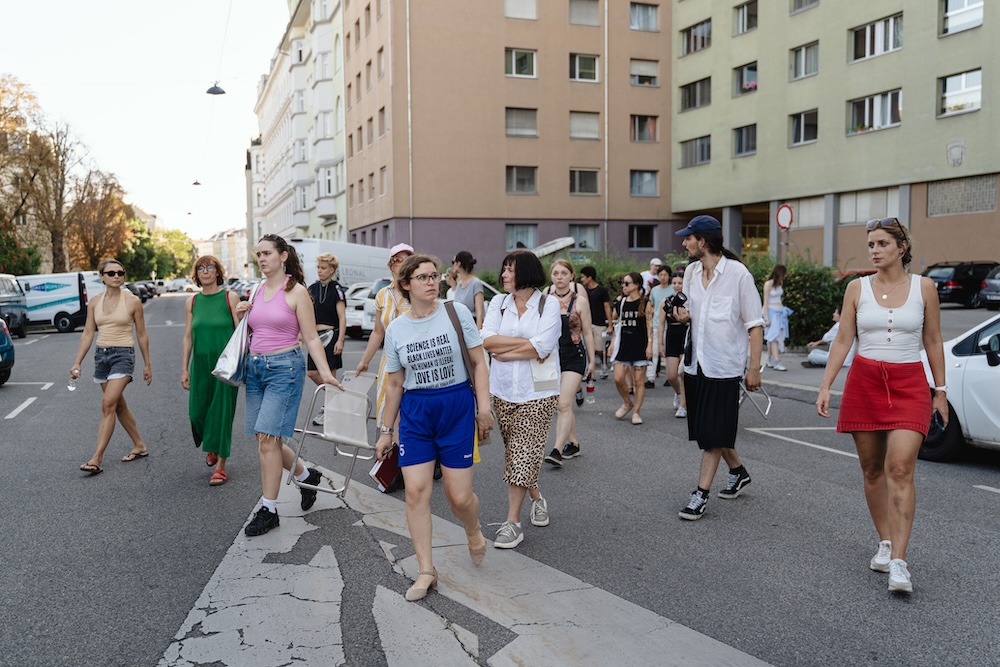


August 28 2024
With this performative walk, we highlight certain historical relations to resistance, artistic, architectural, and urban contexts of the backdrop of the University of Applied Arts, but even more so in the neighbourhood, the 2nd district in Vienna, where we live. Delving into the background of the neighbourhood brings to the fore stories that are specific to the local history, from the flat of resistance fighter Irma Schwager to the villa of Jewish architect Oscar Mamorek, where the architect of the Holocaust, Adolf Eichmann, later lived. This neighbourhood has always been a source of inspiration for bringing The Arts of Resistance project to life. Ruth Anderwald + Leonhard Grond
August 28 2024
The MSU Youth Club hosted a speed dating event, and we had an amazing time discussing topics like freedom, education, institutions, power, and many others. This was really fun! Thanks for this idea.
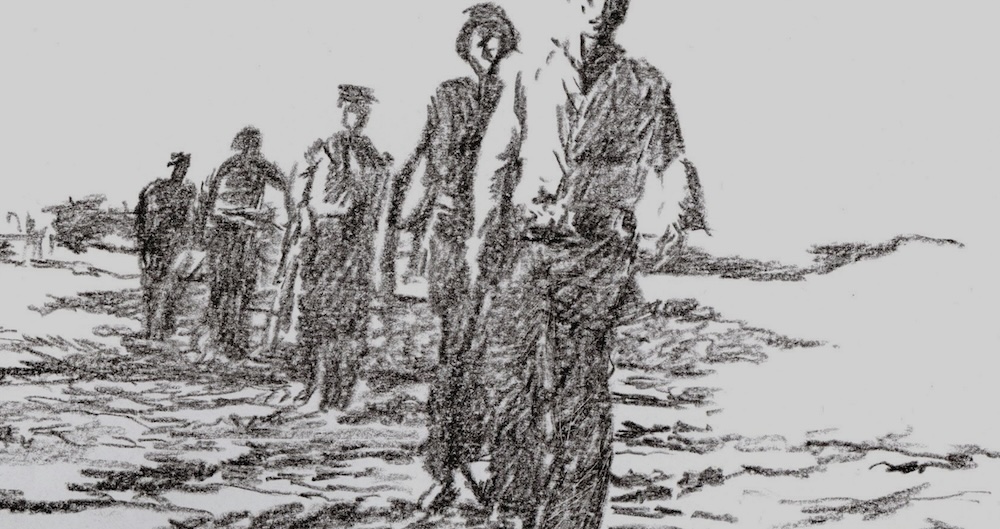


August 27 2024
On the third evening of our Exchange Week, Martin Krenn presented his film Aufzeichnungen zum Widerstand (Notes on Resistance), which we then discussed in detail. His film delves into the courageous acts of resistance against fascism in Austria, Spain, and France during the 1930s and 1940s.
It’s truly moving to witness the stories of individuals like Harry Spiegel, who dedicated their lives to standing up against oppressive regimes. The film’s focus on the generation of resistance fighters who bravely fought against Franco, the Austro-fascists Dollfuss/Schuschnigg, and Hitler is a powerful testament to their resilience and determination.
August 27 2024
Today, we had the privilege of visiting the Documentation Centre of Austrian Resistance (DÖW), where the team gave us a warm welcome and guided us through their permanent exhibition. The exhibition offered a profound glimpse into Austria’s history, displaying artefacts of resistance against fascism. It was an eye-opening experience, and we’re grateful for the opportunity to learn more about the crucial work DÖW is doing - not just for Austria, but for a wider international audience as well.
Founded in 1963, DÖW was established by former Austrian resistance members, survivors of Nazi persecution. From the start, it has maintained a nonpartisan and inclusive focus, bringing together representatives from a variety of backgrounds: Communists, Socialists, Catholic-Conservatives, the Catholic Church, the Jewish community, as well as Roma and Sinti groups, alongside political figures. What began as a modest initiative run by idealistic victims of fascism has grown into a respected institution, recognised both in Austria and abroad for its vital role in preserving history and promoting awareness.
We left the centre deeply inspired by the important work they continue to do. It’s a place that keeps the memory of resistance alive and serves as a reminder of the ongoing fight for justice and human dignity.
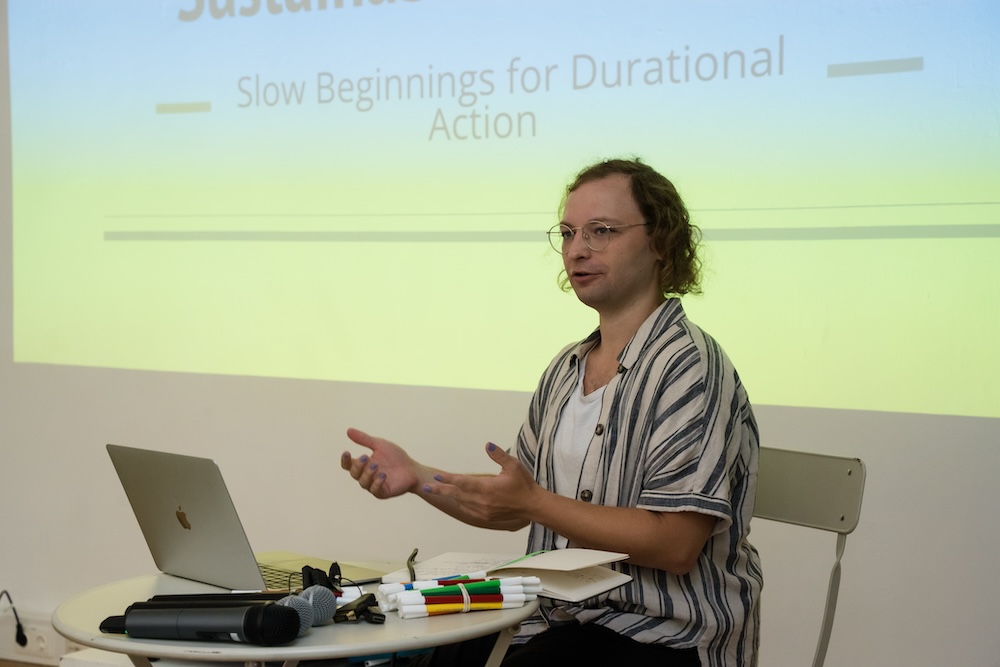
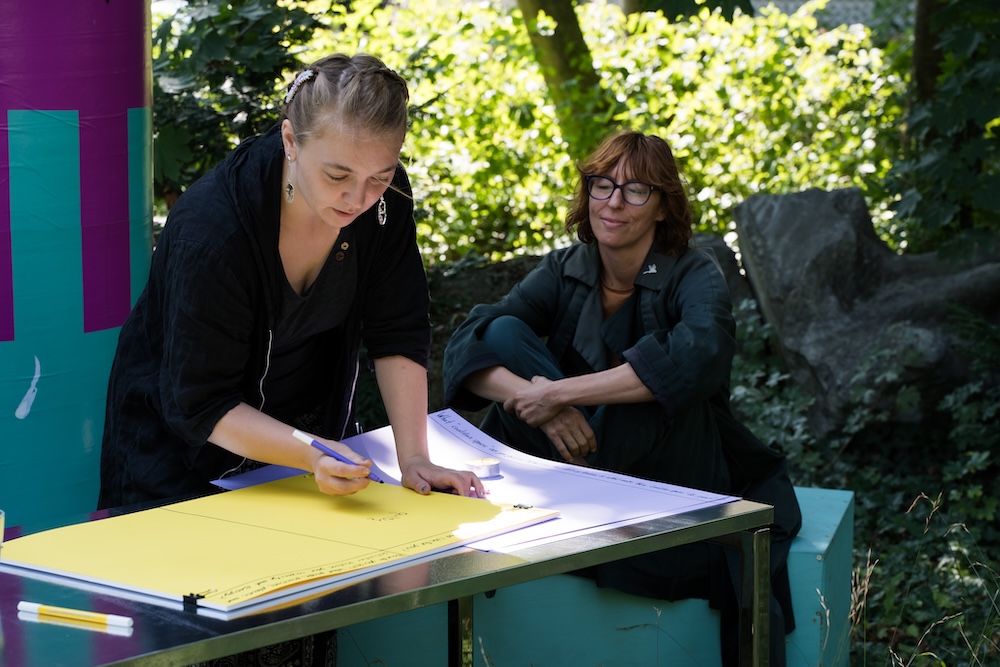
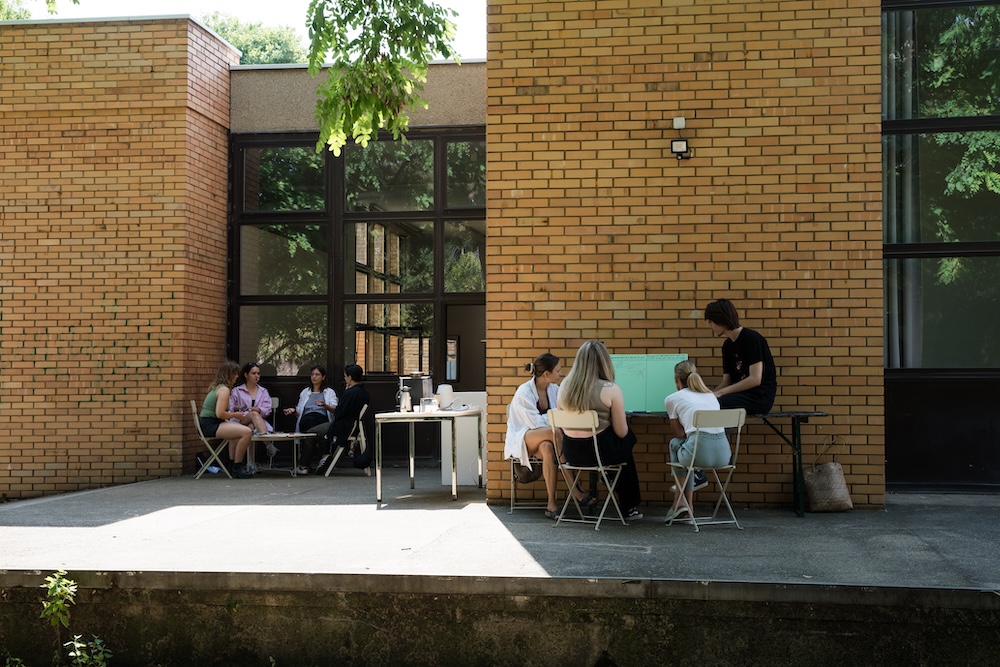

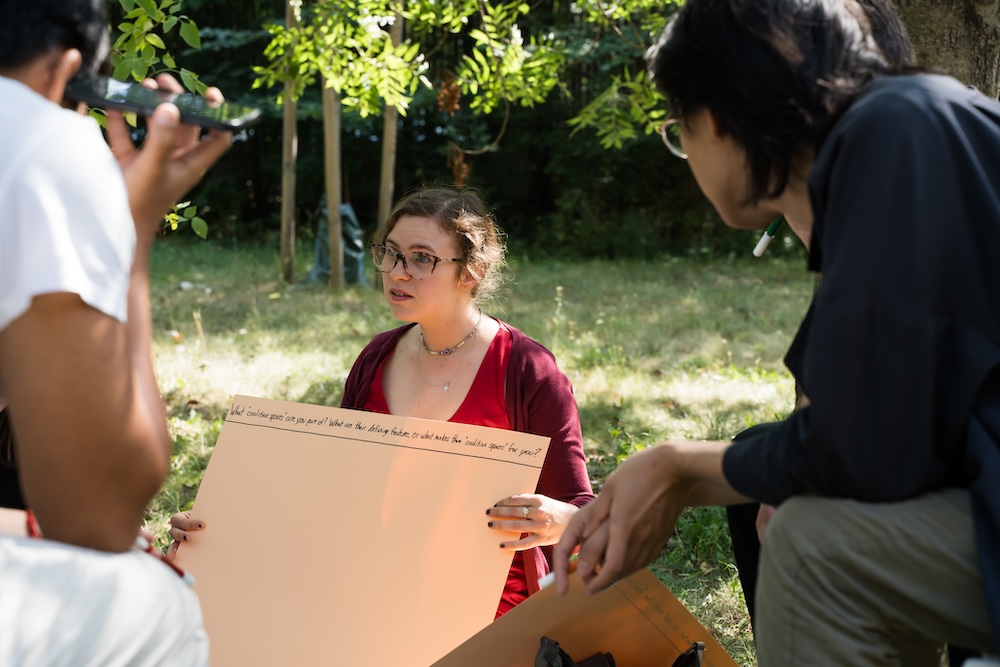
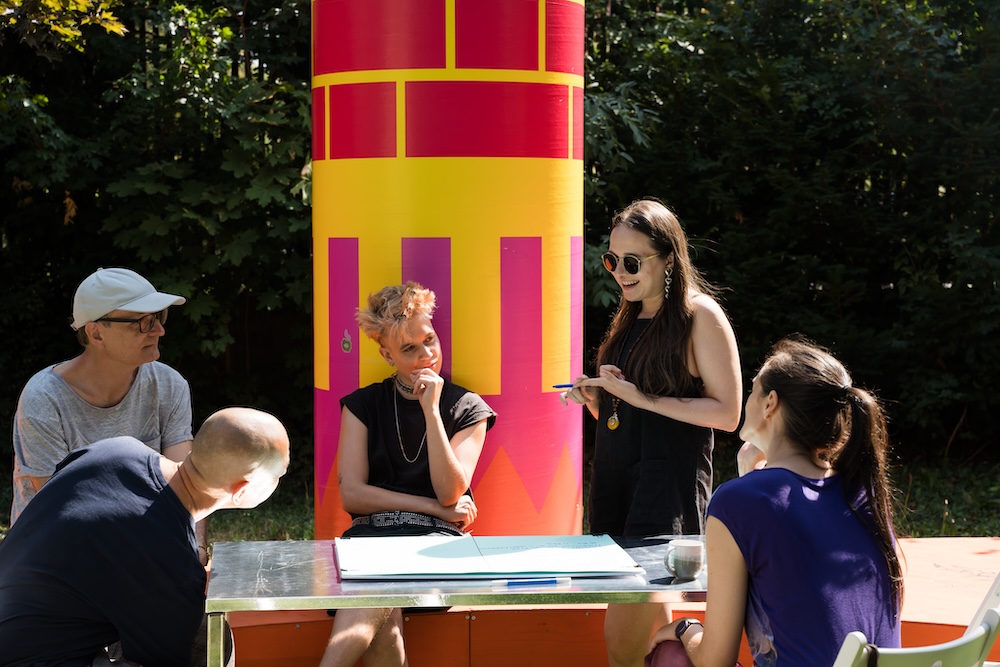
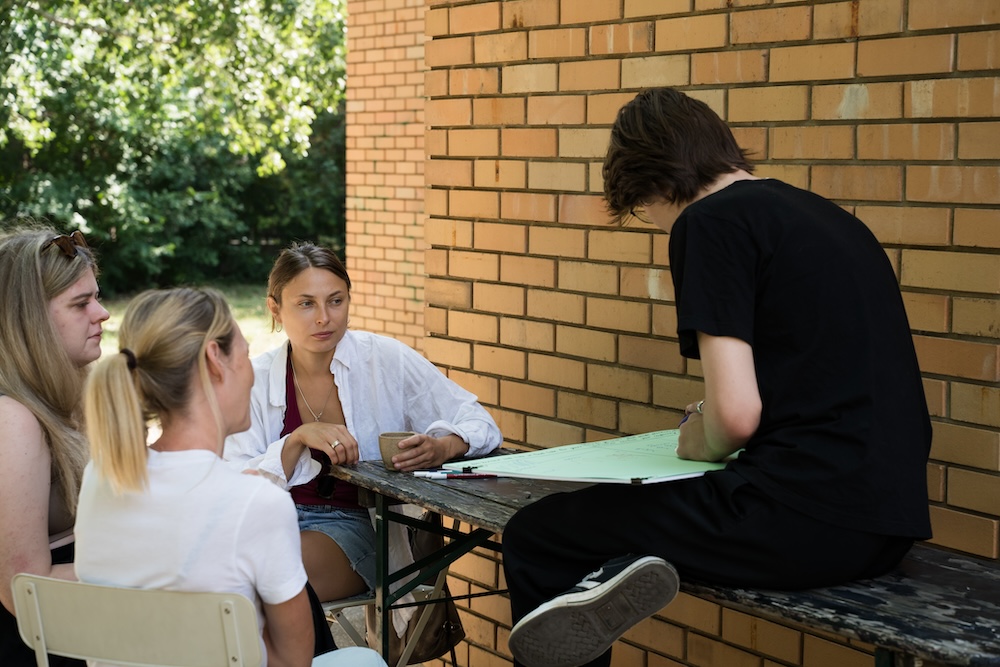

August 26 2024
Our first workshop during the exchange week was by artist-researcher Jo O’Brien. They introduced us to sustainable resistance as slow beginnings for durational action. Resistance is a strange thing, often urgent or immediate, sometimes existential, and frequently durational. Durational across scales of time that – from the here and now – might have no conceivable end. Resistance to fascism in particular is a project as old as the politic itself, and one that must continue past any “end” of it as well. This resistance then cannot be a sprint or a marathon, a march, or even a single destination. Instead, this resistance must be a sustainable one – one that can be practised as indefinitely as needed.
I want to learn about creative methods to inspire people to get engaged in the fight against fascism.
Participant of the Exchange Week



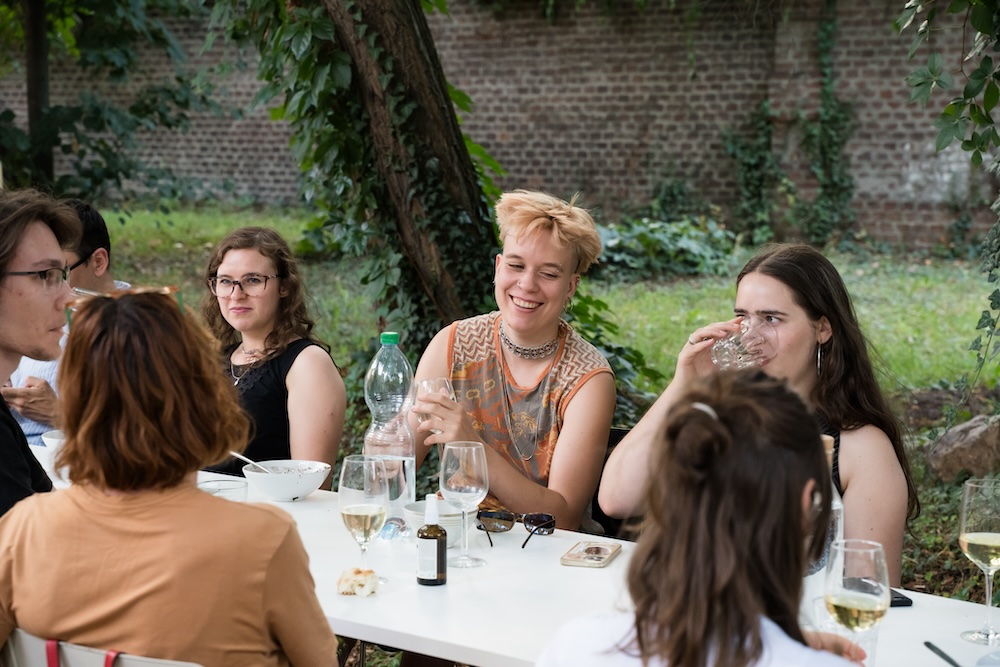
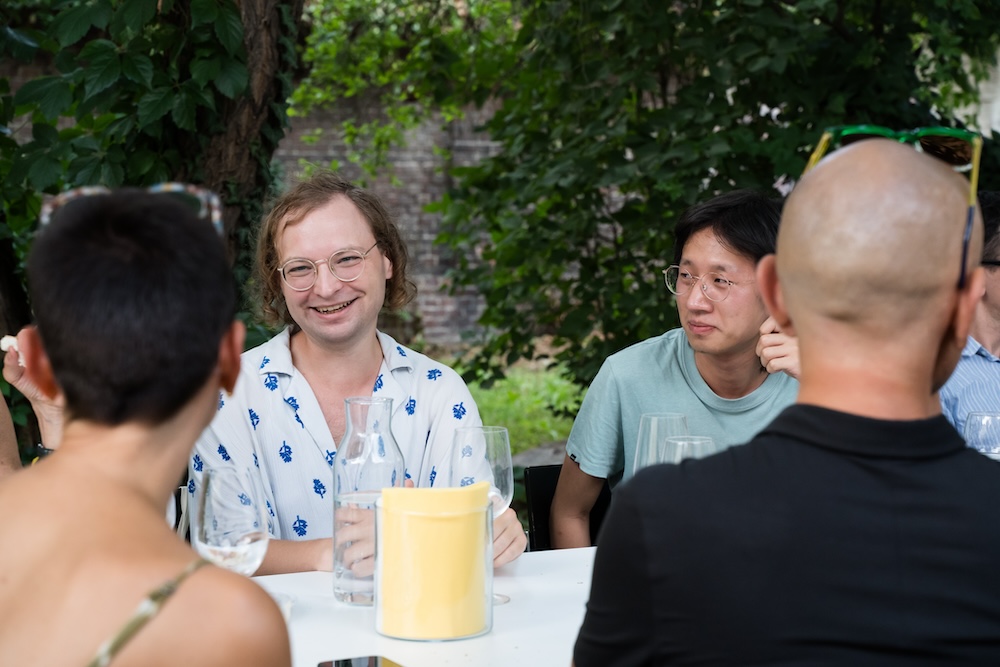
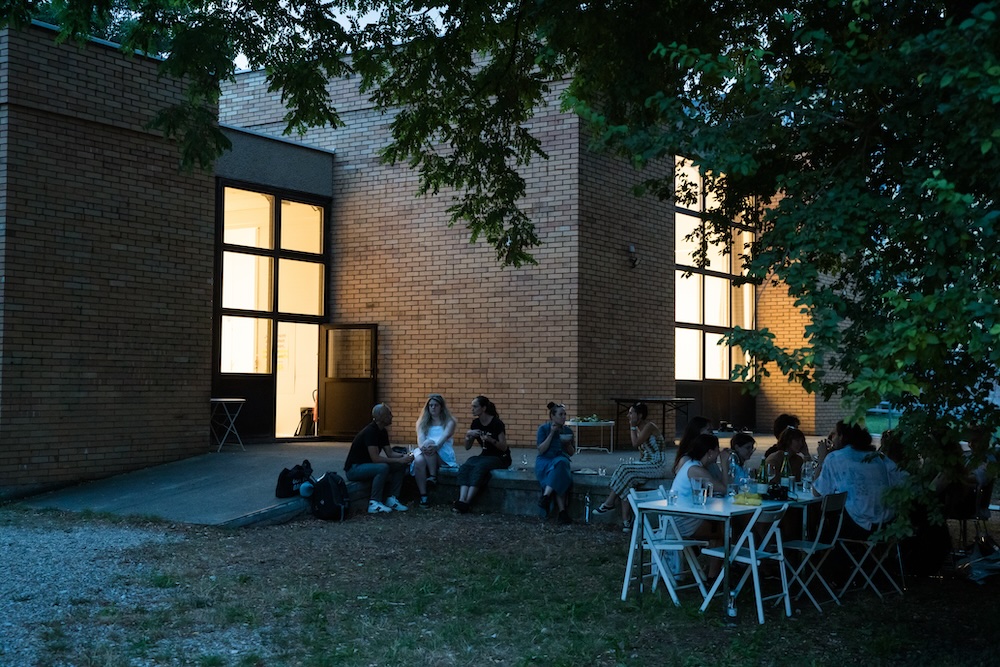
August 25 2024
After the summer, we are excited to kick off our Exchange Week and welcome all participants to Vienna. Join us for a week of lively discussions, knowledge exchange, and input. All welcome.
Resistance means trying to remain humane in inhuman conditions.
Friedl Gascha, DÖW, Vienna

July 26 2024
My family were all Nazis. My grandfather and grandmother. My mother and my father. My stepfather, my uncle – literally all of them were hardcore Nazis during the second world war. And after? […] Read My family and other Nazis by Martin Pollack (© photo) in The Guardian.

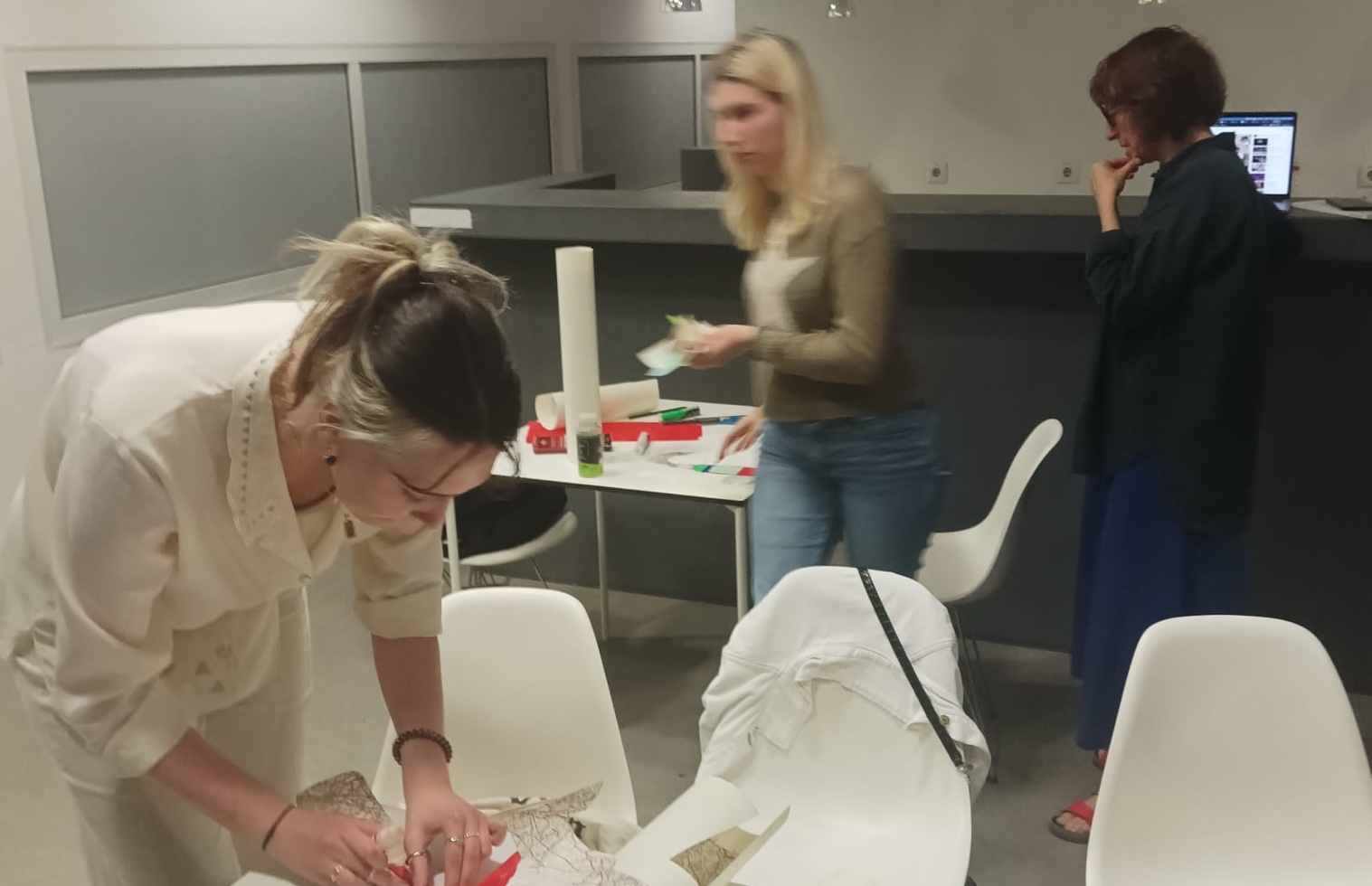
June 13 2024
Working at MSU Youth Club, Zagreb, with artist Selma Banich.
Art is not a luxury. It stands at the essence of our humanity, and it asks for no special protection except the right to exist.
It accepts argument, criticism, even rejection. It does not accept violence.
Salman Rushdie, Knife, Meditations After an Attempted Murder, 2024.
The most important […] is that art challenges orthodoxy. To reject or vilify art because it does that is to fail to understand its nature. Art sets the artist’s passionate personal vision against the received ideas of its time. Art knows that the received ideas are the enemies of art, as Flaubert told us in Bouchard et Pécuchet. Clichés are received ideas and so are ideologies […]. Without art our ability to think, to see freshly, and to renew our world would wither and die.
Art is not a luxury. It stands at the essence of our humanity, and it asks for no special protection except the right to exist.
It accepts argument, criticism, even rejection. It does not accept violence. (Rushdie, p. 168)
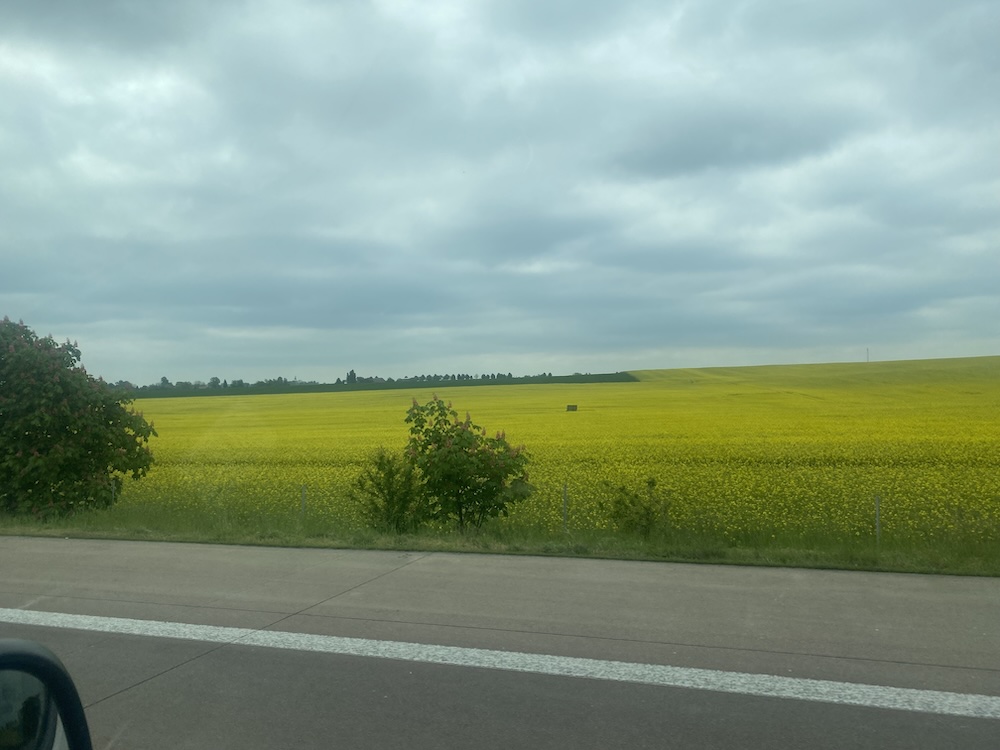


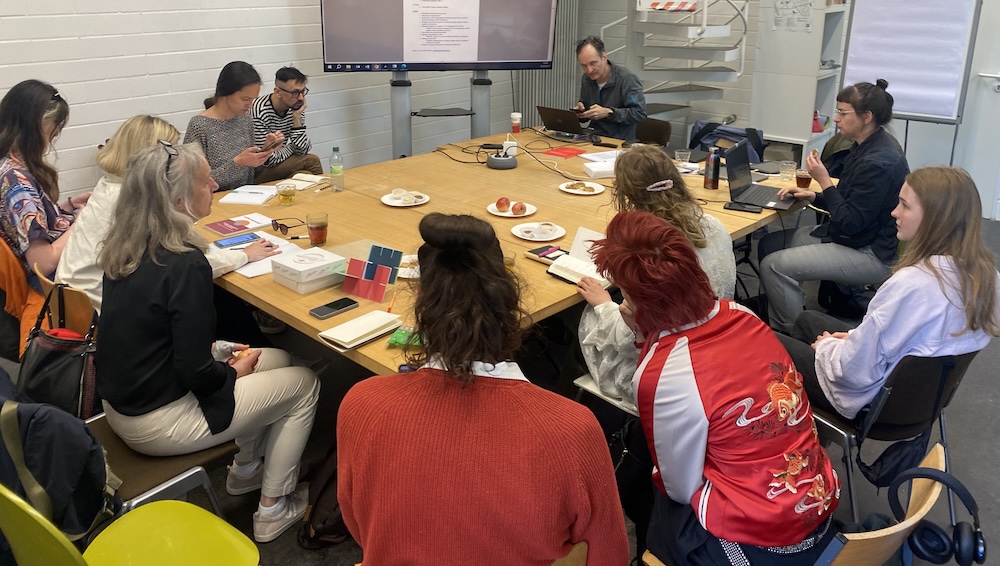
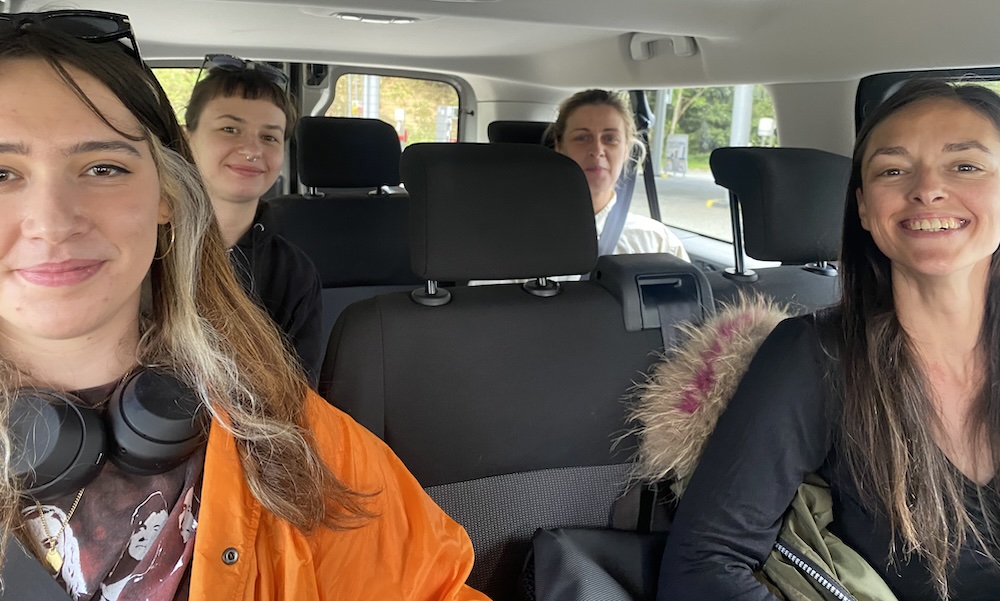
May 2-4 2024
Our Multipliers Meeting took place at HBK Braunschweig from May 2nd to May 4th. Participants from Zagreb and Vienna travelled to Braunschweig, where Martin Krenn and his students welcomed us and put together two days packed with engaging discussions and fantastic exchanges. This was a wonderful start for The Arts of Resistance project. Thank you so much!

April 1 2024
We are happy to announce that our intergenerational artistic research project, The Arts of Resistance, starts today.
The Arts of Resistance
The Arts of Resistance is a European cooperation project which conducts artistic research on resistance against Fascisms, past and present, in Europe and beyond. This project is initiated and led by the Austrian association HASENHERZ and carried out with the University of Applied Arts Vienna, the Museum of Contemporary Art Zagreb and the Braunschweig University of Art.
The Arts of Resistance (2024-2025) is co-financed by the Creative Europe Programme of the European Union.


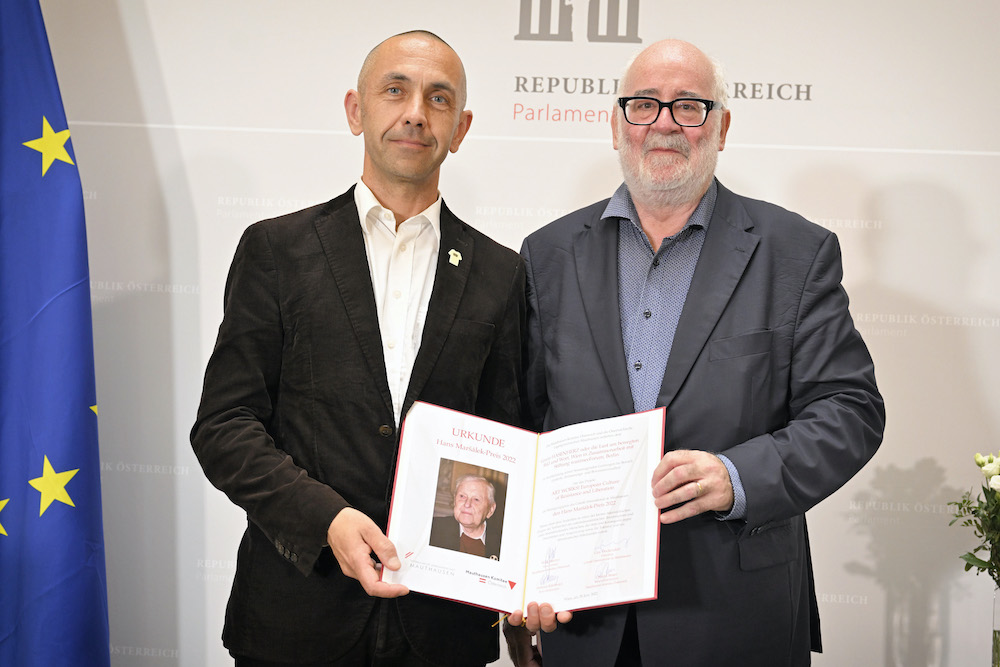
June 29 2022
We would like to express our gratitude to everyone who has contributed to the ART WORKS! European Culture of Resistance and Liberation project. We are delighted that the project has been honoured with the Comité International de Mauthausen's appreciation award as part of the Hans Maršálek Prize 2022.
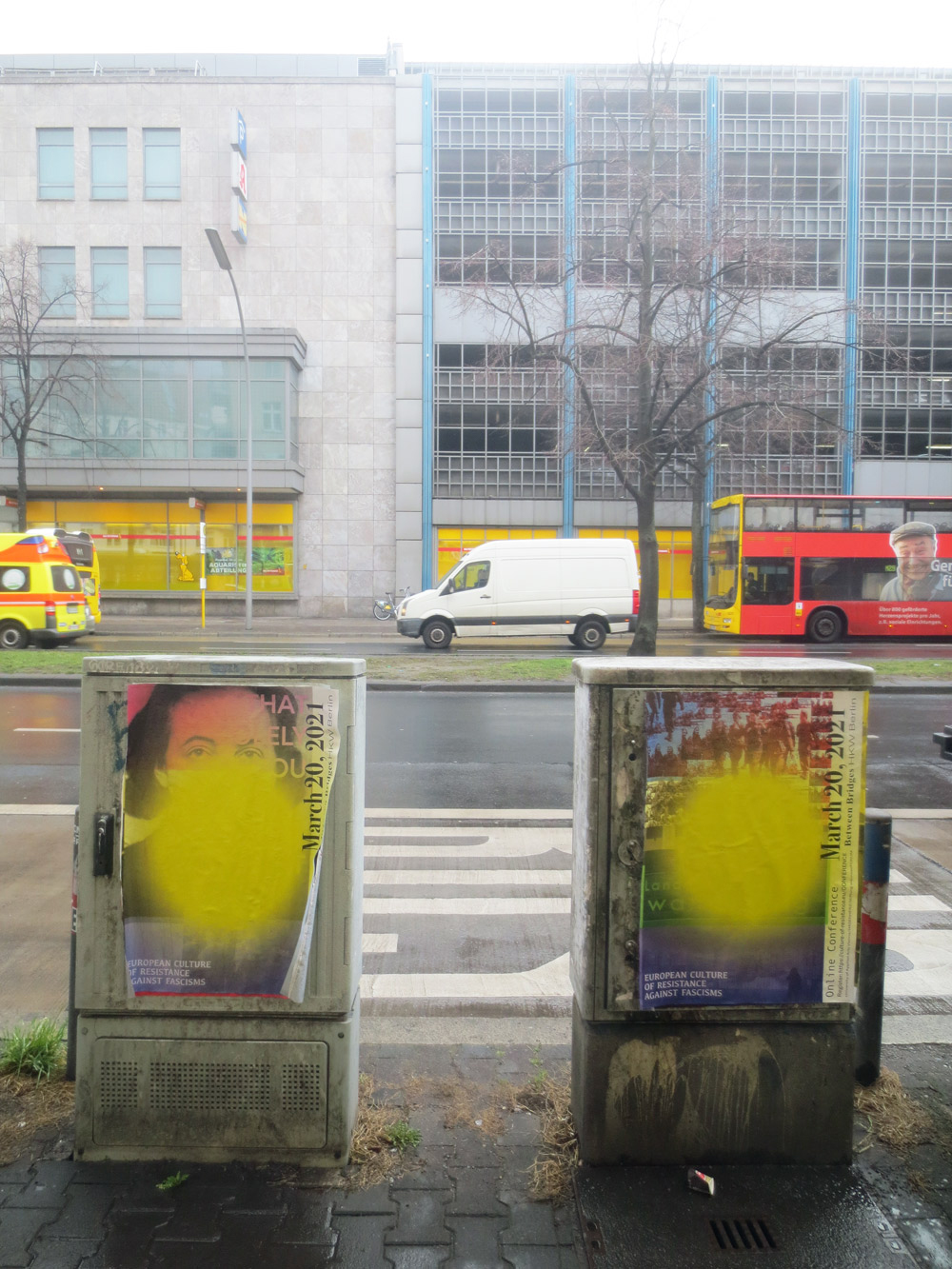

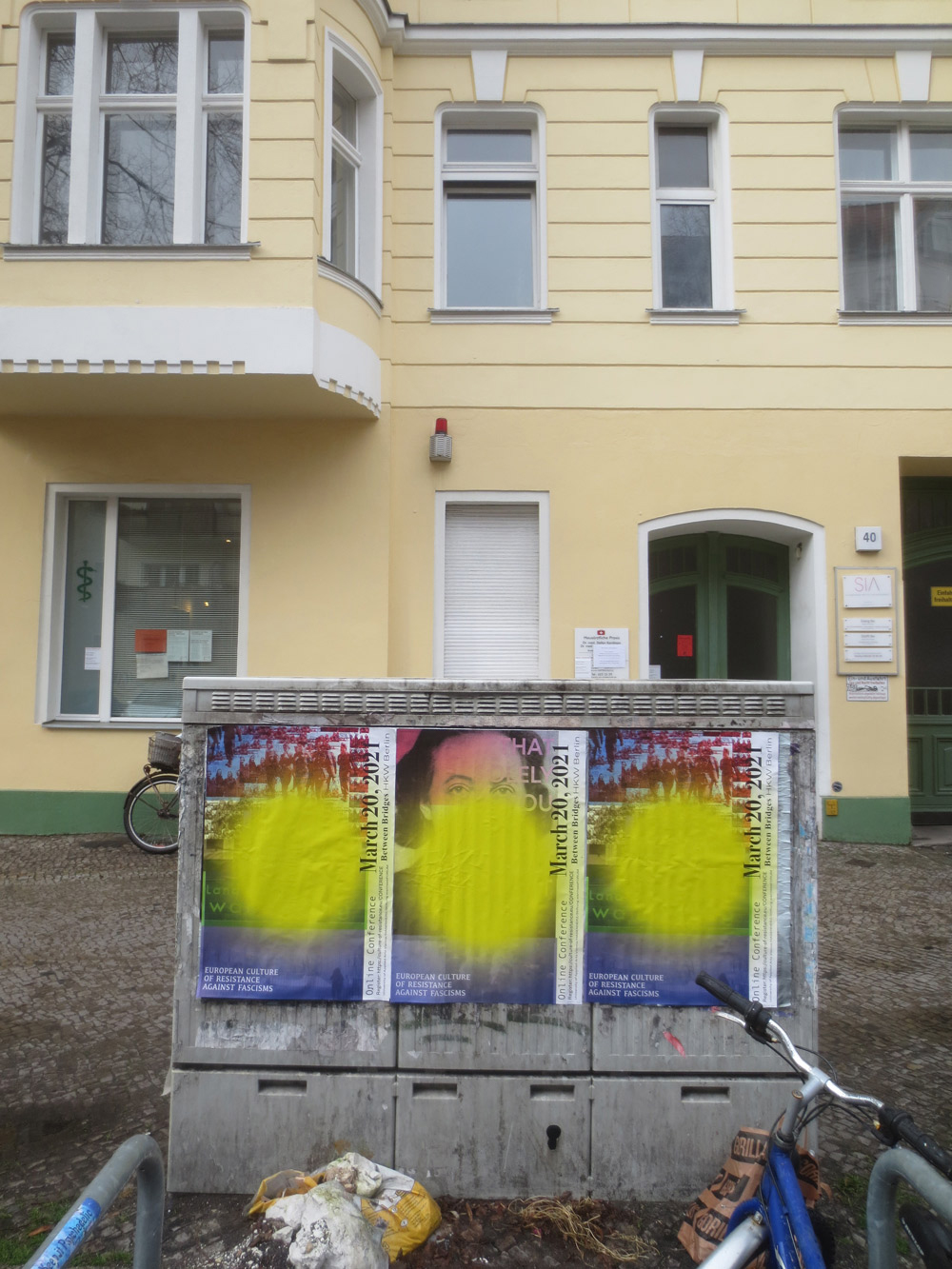
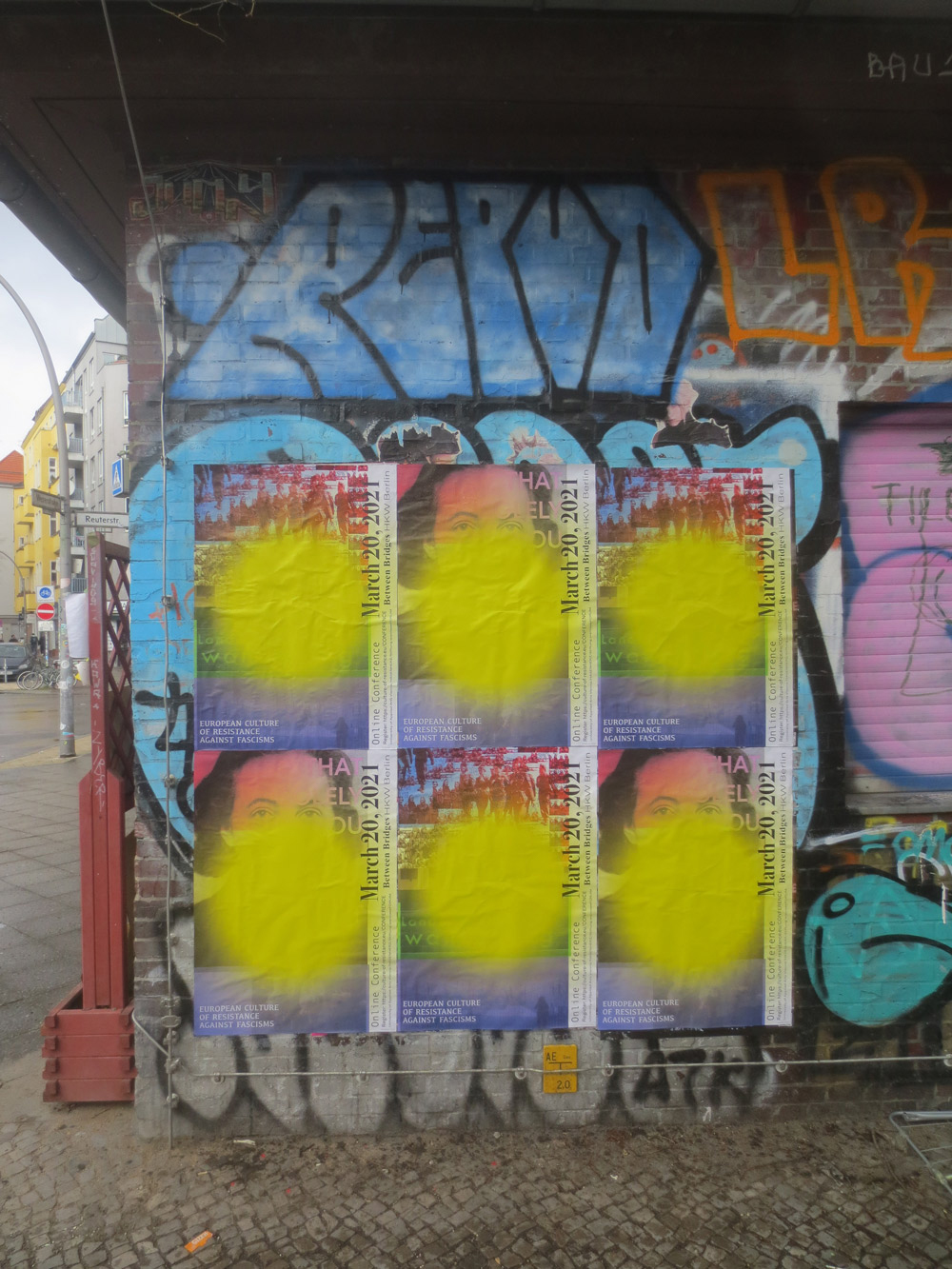
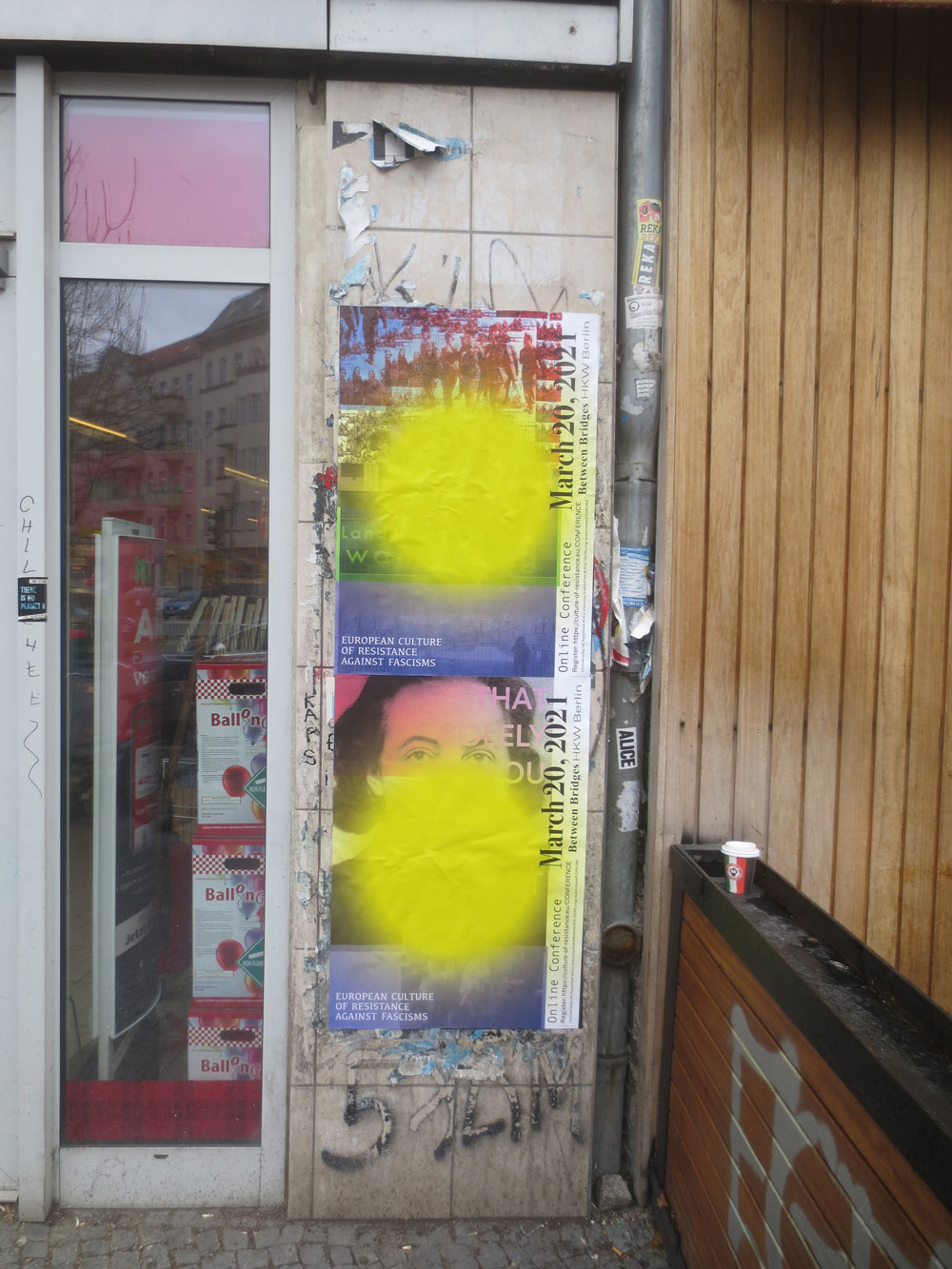
March 10 2021
In a public conversation, artist Jonathan Horowitz and photographer Wolfgang Tillmans, moderated by Anderwald + Grond, share insights into their artistic and curatorial work. Starting with Horowitz's exhibition, We Fight to Build a Free World! at the Jewish Museum in New York, they explore the potential art has to combat racism and anti-Semitism.
Haus der Kulturen der Welt
Saturday 20 March 2021, online
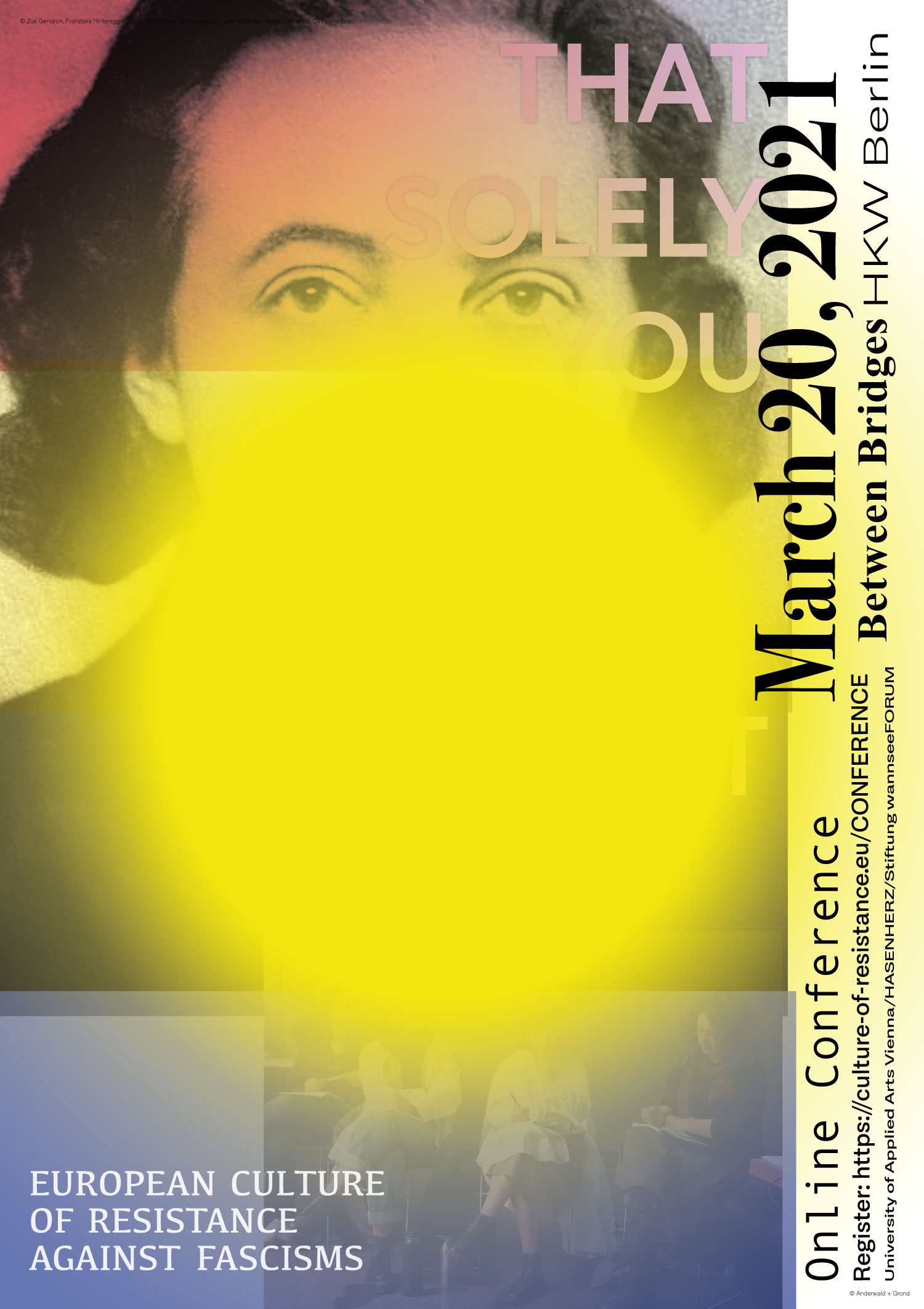
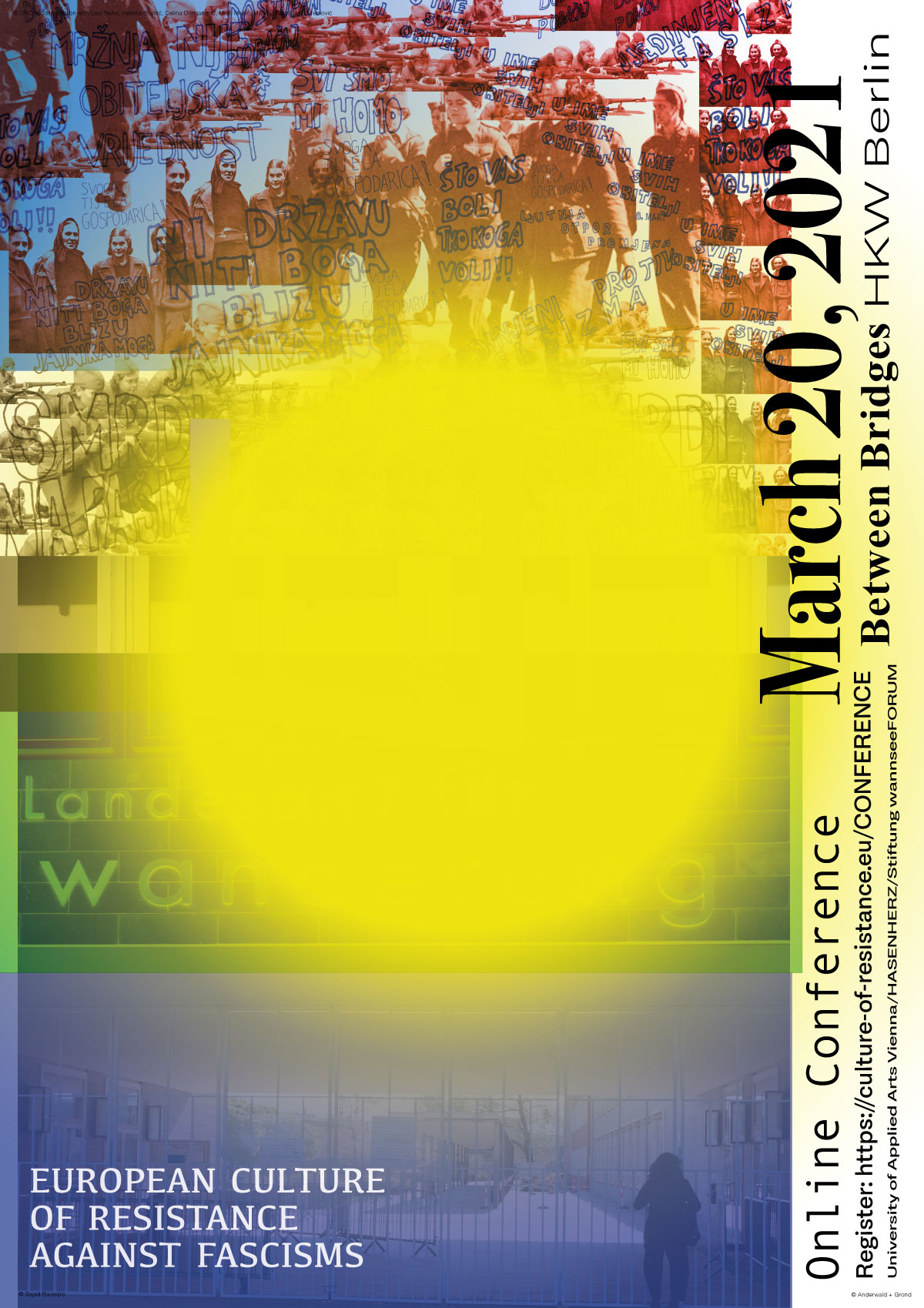
March 10 2021
We are looking forward to the upcoming workshops on March 20, 2021. Registration until March 8, 2021. Thank you for the wonderful collaboration with Between Bridges, HKW Berlin, Foundation wannseeFORUM and die Angewandte.

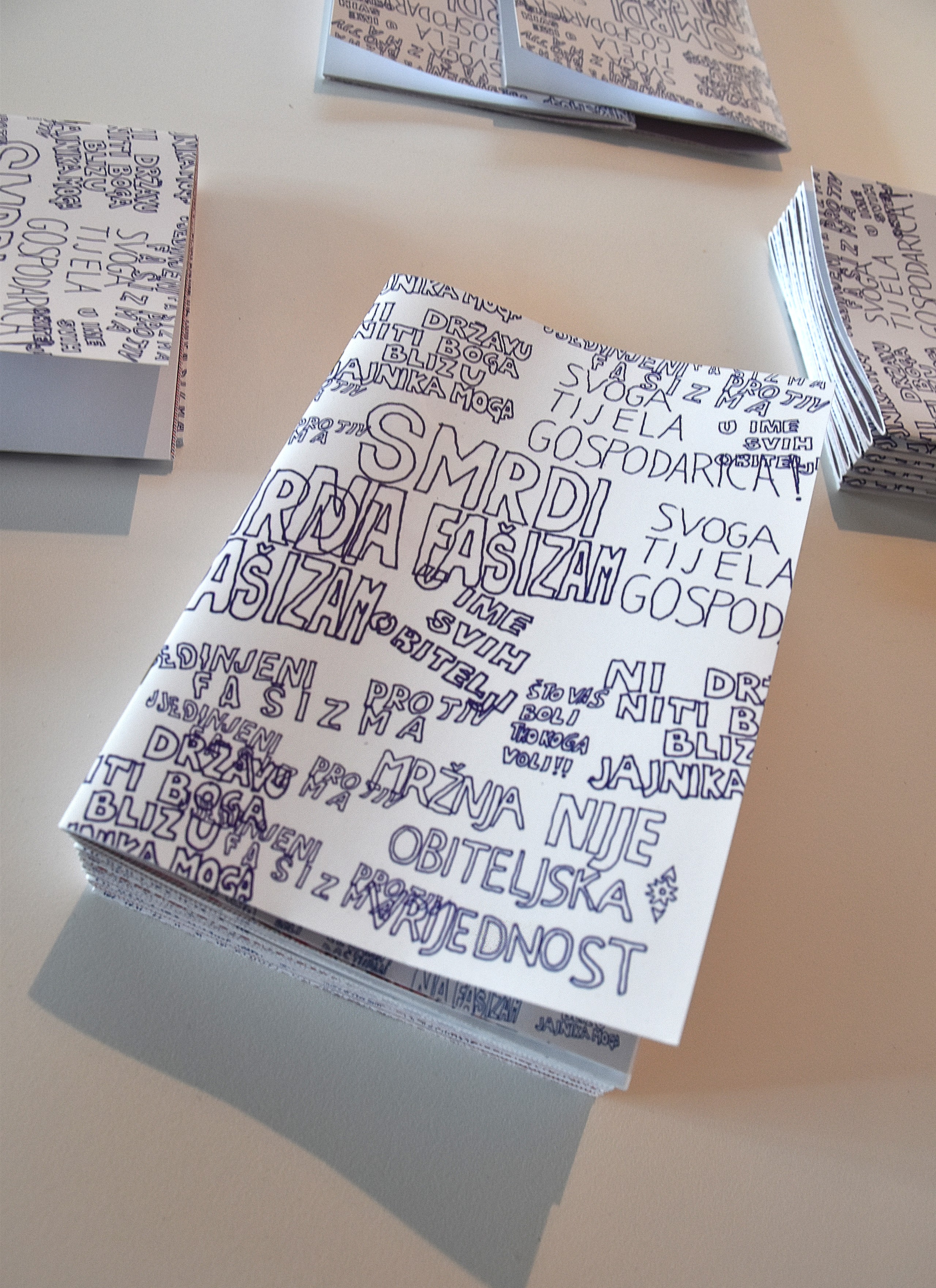
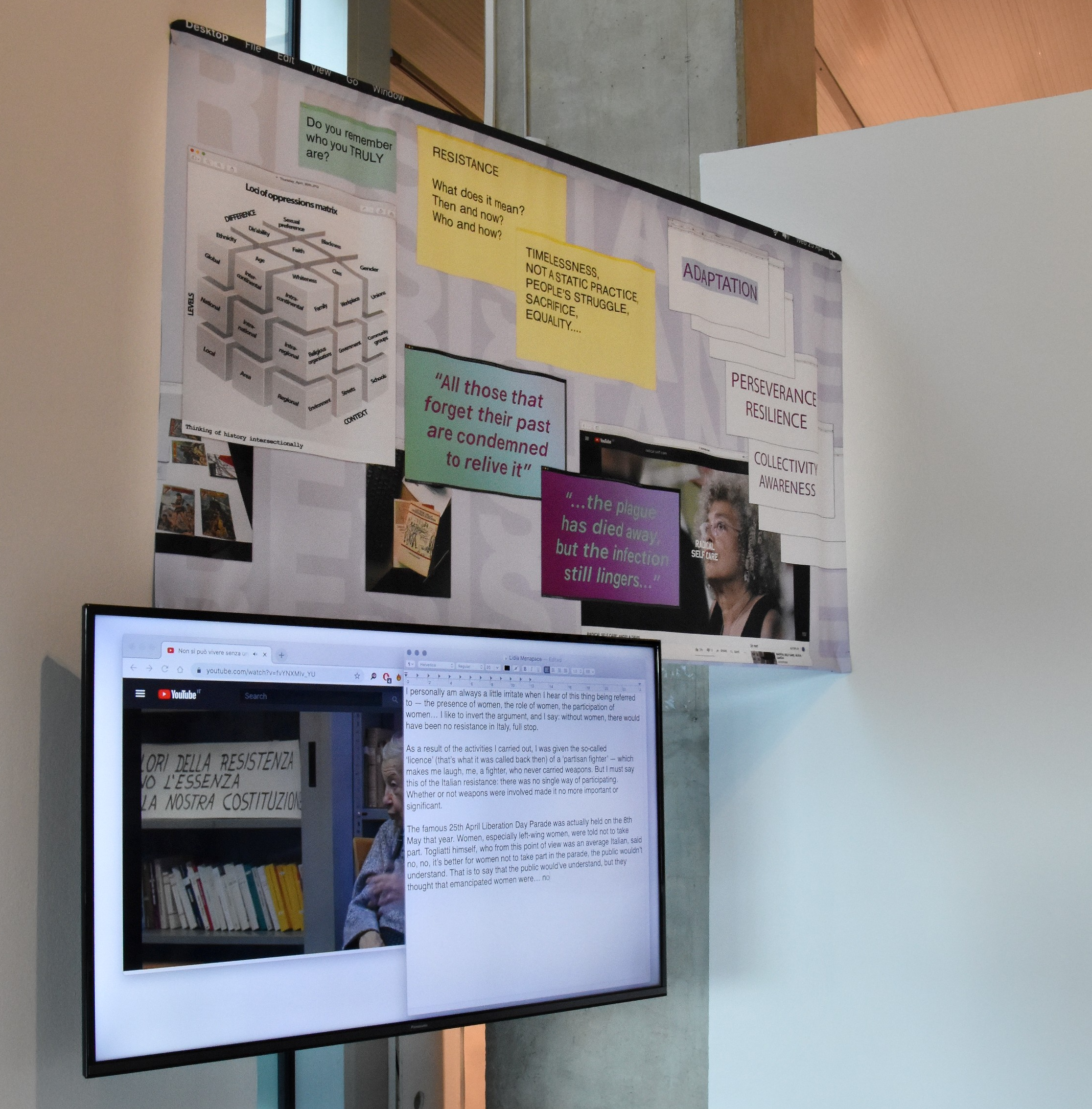

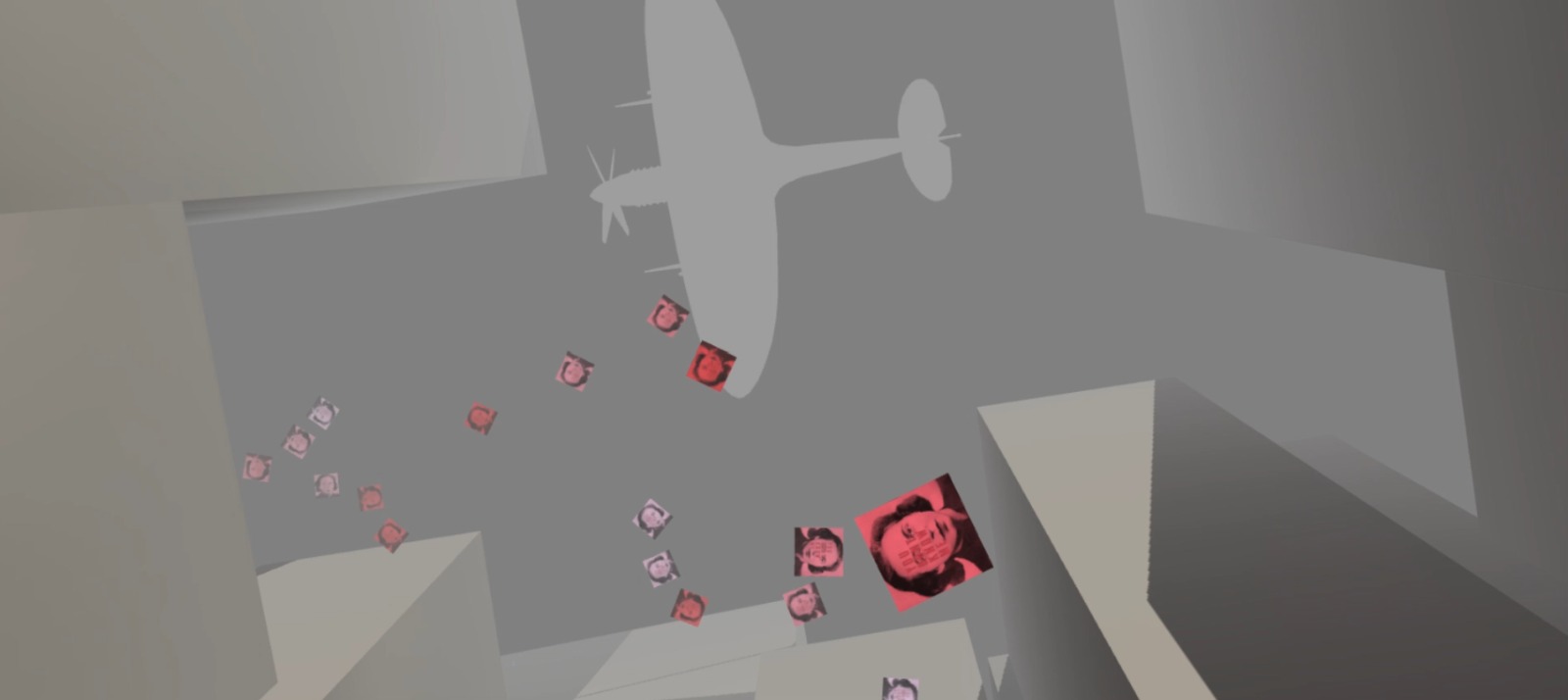

October 14 2020
Opening of the exhibition at MSU Museum of Contemporary Art Zagreb
This time around, all works can be seen at once in the Open Gallery space of MSU Zagreb. Curator Ana Skegro arranged the expanded exhibition that now also features a new Virtual Reality contribution by the Austrian group. In the picture above you can see the MSU Youth Group with their artist-mentor OKO in front of one of their works.
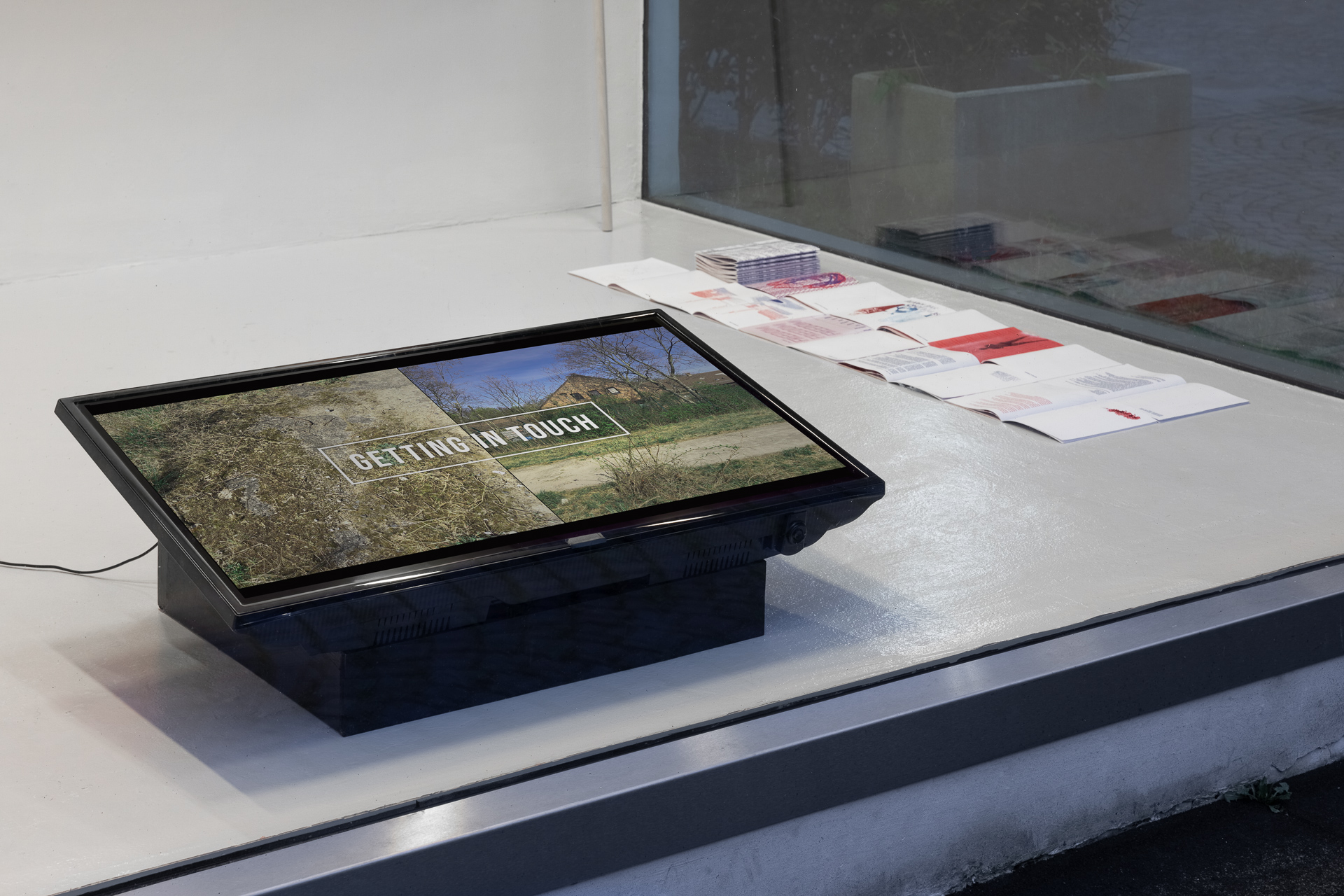
 August 04 2020
August 04 2020Cubo Garutti – Piccolo Museion: European project ART WORKS! European Culture of Resistance and Liberation
The second edition of the exhibition features works by the German group of Foundation wannseeFORUM led by filmmaker Katja Pratschke, who contributed ON THE DOORSTEP, a video in seven chapters on the resistance in Berlin during Nazism, and the Croatian group of MSU Zagreb led by artist OKO. Their contribution, Resistance Then And Now collages texts and images on a satin banner and in the graphics of a pamphlet to create a connection between the actions and significant presence of leading women in resistance movements and the slogans from current protests in Croatia. The aim of the group was to identify contemporary resistance to current fascisms using the aesthetics of protest posters which are a public expression of our hard-won freedom of speech.


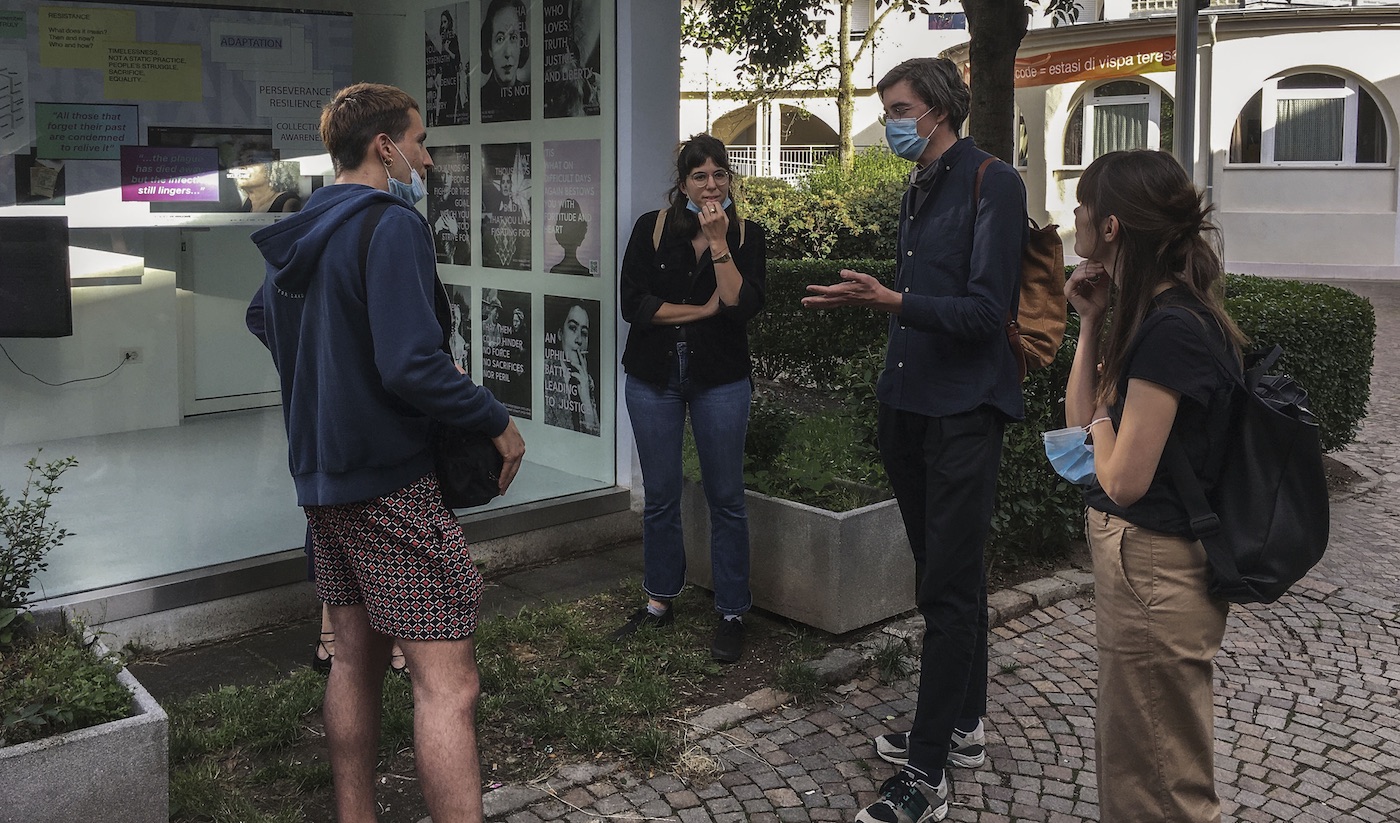

 June 18 2020
June 18 2020Cubo Garutti – Piccolo Museion: European project ART WORKS! European Culture of Resistance and Liberation
About Resistance (interfaced) is a journey taken by a group of young people at Museion together with the artist Alessandra Ferrini. Consisting of a banner and video, the installation depicts the desktop of a computer as a window on the world. This reveals both the compromises and contradictions of the period we are living through with “domestic” lockdown on one hand and global participation on the other.
The Cubo further hosts Solely You It’s Not, a work produced by a group from the University St. Pölten in Austria mentored by the artist collective Anderwald + Grond. Their work consists of a poster series of European women who took an active part in the Resistance during World War II. It is based on Hilde Meisel’s work, an Austrian journalist and writer who fought against the Nazi regime. They also included an audio work that unites different European voices and languages in recitation of Meisel’s poem Das ist’s [‘tis].
This is the first part of the exhibition of the project ART WORKS!, on view until 02.08.20. From 04.08 to 17.09, there will be the second part with works from the Croatian and German groups and artists OKO and Katja Pratschke. In line with the project’s exchange concept, the work produced by groups will on display in rotation at museums in the participant countries: MSU in Zagreb, at HKW in Berlin and at the Peace Museum Erlauf Austria.
 June 11 2020
June 11 2020ART WORKS! is named on the Council of Europe’s Good Practices Database for youth work in response to the Covid-19 crisis. [Read more.]
Sometimes, a certain amount of naïveté is necessary for engaging in the world, putting to one side the statistical likelihood of failure for any specific instance[…] Meanwhile, one way or another, simply being together strengthens us, though such assemblies will need to be endlessly repeated, whether in the face of rampant oppression, or confronting the more routine conformity that stifles creativity.

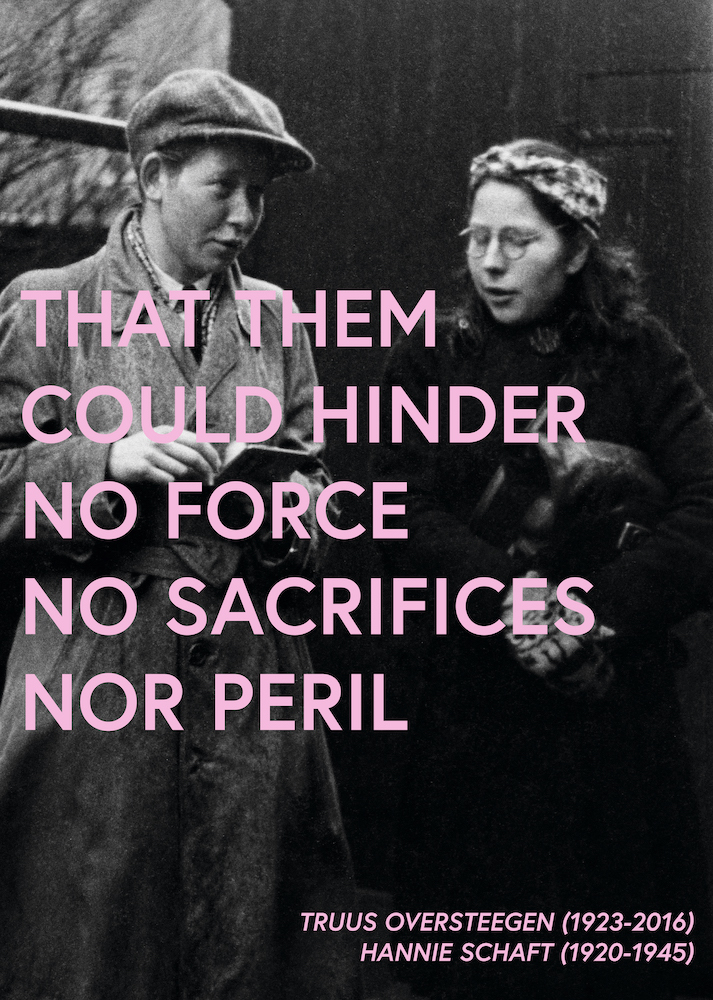
 June 8 2020
June 8 2020In 10 days the exhibition at Museion Bolzano, Piccolo Museion – Cubo Garutti, will open, and the groups are working on finalizing their contributions. The first part of the exhibition will feature the works of the group of Museion mentored by Alessandra Ferrini and the group of FH St. Pölten mentored by Anderwald + Grond, as both groups focus on female resistance fighters. After the livestream both groups have produced new site-specific work for this exhibition.
May 11 2020
ART WORKS! is proud to take part in the program histoMEETS in the framework of histoCON. histoCON is an ongoing event series of the Federal Agency for Civic Education (bpb), which is designed to be a platform to share and discuss global perspectives on history and its relation to present and future. The aim is to discuss narratives about historical events, its continuing effects, and lessons that can be drawn from its history. The explicit intention is not only to commemorate the particular historical event but also to consider the implications for the present and future. Furthermore, it is intended to encourage young people from all over the world to get to know different perspectives of history, to question existing narratives, and to reflect on questions of war and peace in today’s world. The current situation, which has developed as a result of the novel coronavirus, also raises questions about the official commemoration of the Second World War. We believe that today the situation can be used to rethink commemoration. [Read more]

May 9 2020
In November we went for the first time to visit the Memorial and Museum Sachsenhausen (https://www.sachsenhausen-sbg.de/en/75liberationsachsenhausen/) and to started our research on the ART WORKS topic: European Culture of Resistance and Liberation. The outbreak of Covid 19 changed our plans. Starting from our own places of residence in Berlin, we researched nearby subcamps of the concentration camp and places of forced labor. On the website of the Documentation Center NS Forced Labor and the German Resistance Memorial Center we found information about locations, resistance fighters, their activities and their fate.We live all over the city, in the center as well as on the outskirts: Lichterfelde, Wedding close to Köslinerstraße and Kolonienstraße, Moabit, Charlottenburg, Kreuzberg, Hoppegarten and Lichtenberg. From our home, a short walk away, in the same street block or immediate vicinity, we photographed the former places: forced work training camps, concentration camp subcamps, places of resistance activities, secret meeting and hiding places, etc. The photographs have been taken as notations and photographic sequences and edited into photofilms. Three text levels are added, which differ visually: 1. Key words of resistance, 2. The History of the location, 3. Our personal situation: who we are, where we are right now, where we come from and what the lock-down does to us. Some of us included their personal experience of emigration, war and exil.
Sajad Bayeqra, Salma Jaber, Raha Shegeft, Nora Richter, Hamid Mohammadi, Ziyad Ahmed, Marcelina Massenbach, Atau Hámos, Katja Pratschke, group wannseeFORUM Berlin
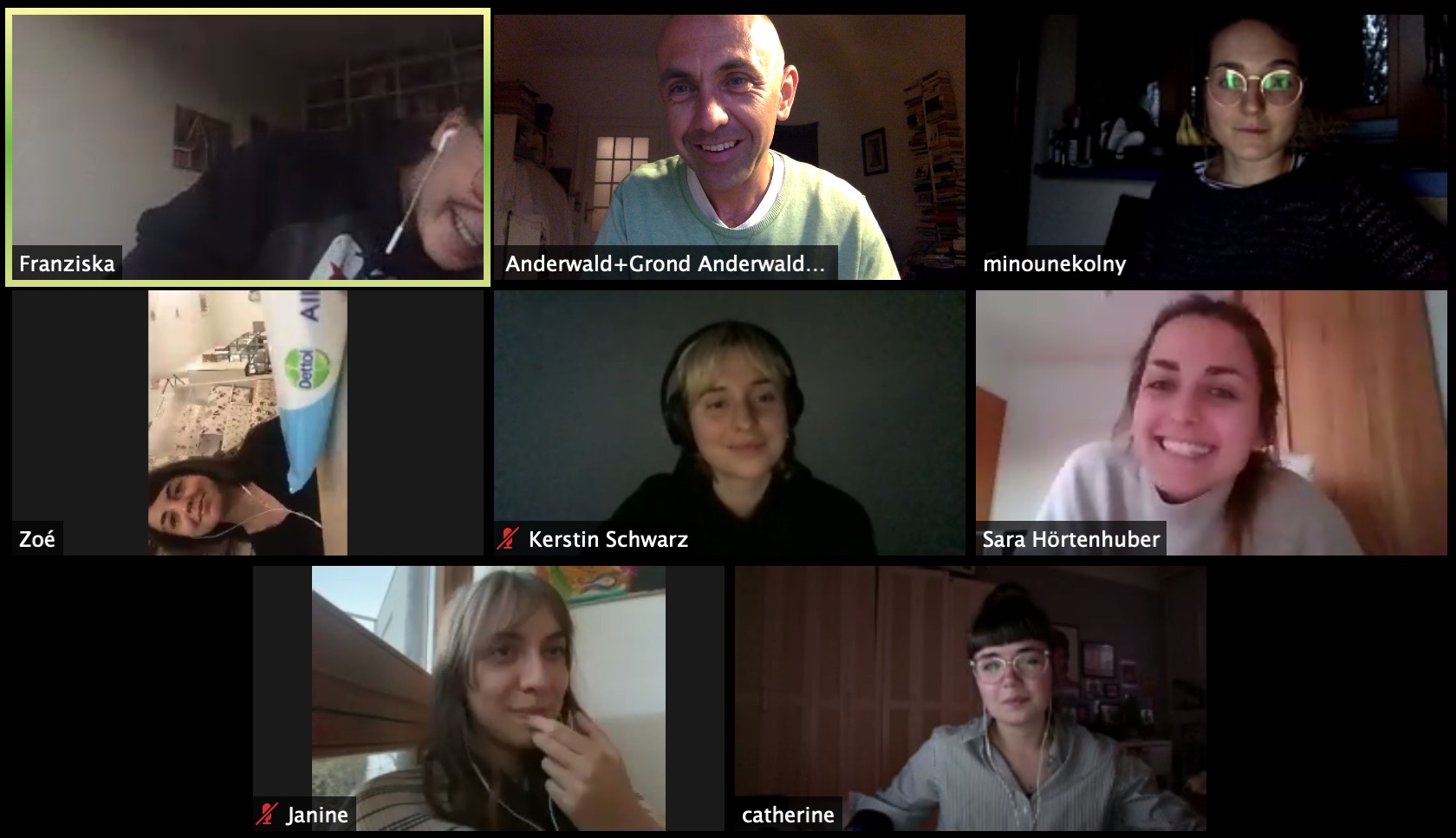
May 7 2020
As part of the international project ART WORKS! - European Culture of Resistance and Liberation we went on the search for artworks, that were created as a sign of resistance. After researching the Resistance during WW II individually, we realized that all of us focused on female historical figures. Thus, we chose to focus mainly on that aspect of the Resistance: the stories and accomplishments of those who are seldomly heard, whose stories are fractured and even harder to re-trace: the female resistance. During our research, we found out about Hilde Meisel - a resistance fighter in the Second World War. We were fascinated by her story and decided to make her poem ‘Das ist's’ the centrepiece of our artistic work. Using analogue and 3D Animation, 2D visuals and accompanying soundscapes, we created a short film. The goal hereby was to display the unity, diversity and fortitude of those who fought for liberty and justice. Today, 75 years after the liberation of the concentration camps and the end of the war we want to deliver the message Hilde Meisel once tried to make us understand: that solely you it's not.
Zoé Gendron, Franziska Hinteregger, Sara Hörtenhuber, Minou Nekolny, Janine Scheer, Kerstin Schwarz, Catherine Spet, FH St. Pölten in cooperation with Center of Contemporary History Melk
May 5 2020
The MSU Youth Club, mentored by artist OKO, started their research individually. After bringing together what they found, they looked into narratives excluded or marginalized from the schools' history books. But they also wanted to include the Yugoslavian war around 1991, because its consequences still shape the political and remembrance culture of today. With the outbreak of Covid-19, they had to deviate from their original plan to make a walk-in sculpture and move into the digital space.
 May 5 2020
May 5 2020The youth group from Museion Bolzano, consisting of Abram Tomasi, Gessica de Oliva, Samira Mosca, Lucia Rose Buffa, Tomas Grosello, Camilla Saiz, Giada Cardillo, Nicole Fersko, and mentored by visual artist and researcher Alessandra Ferrini, has created a video contribution titled About resistance (in remote-mode). Their work process can be traced via their specially created Tumblr page: https://artworksmuseion.tumblr.com
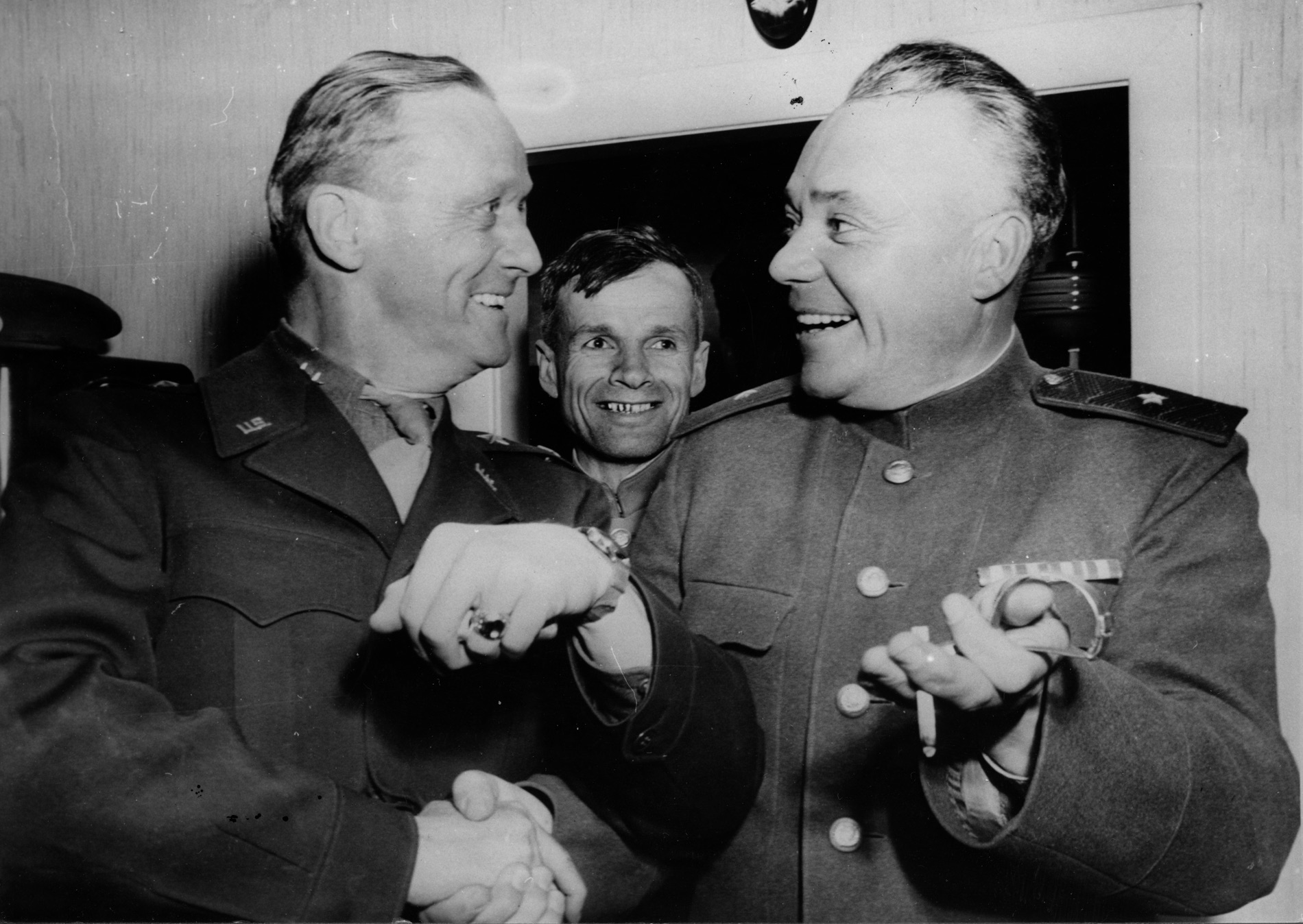
General Stanley Reinhart und General Dmitri Dritschkin,
May 8, 1945 in Erlauf © Erlauf Erinnert
![]()
Peace Celebration, May 8, 1965 © Erlauf Erinnert, Heereslichtbildstelle
![]() Jenny Holzer, Peace Monument, 1995 © Erlauf Erinnert
Jenny Holzer, Peace Monument, 1995 © Erlauf Erinnert
![]() Oleg Komov, Peace Monument, 1995 © Erlauf Erinnert
Oleg Komov, Peace Monument, 1995 © Erlauf Erinnert
May 4 2020May 8, 1945 in Erlauf © Erlauf Erinnert
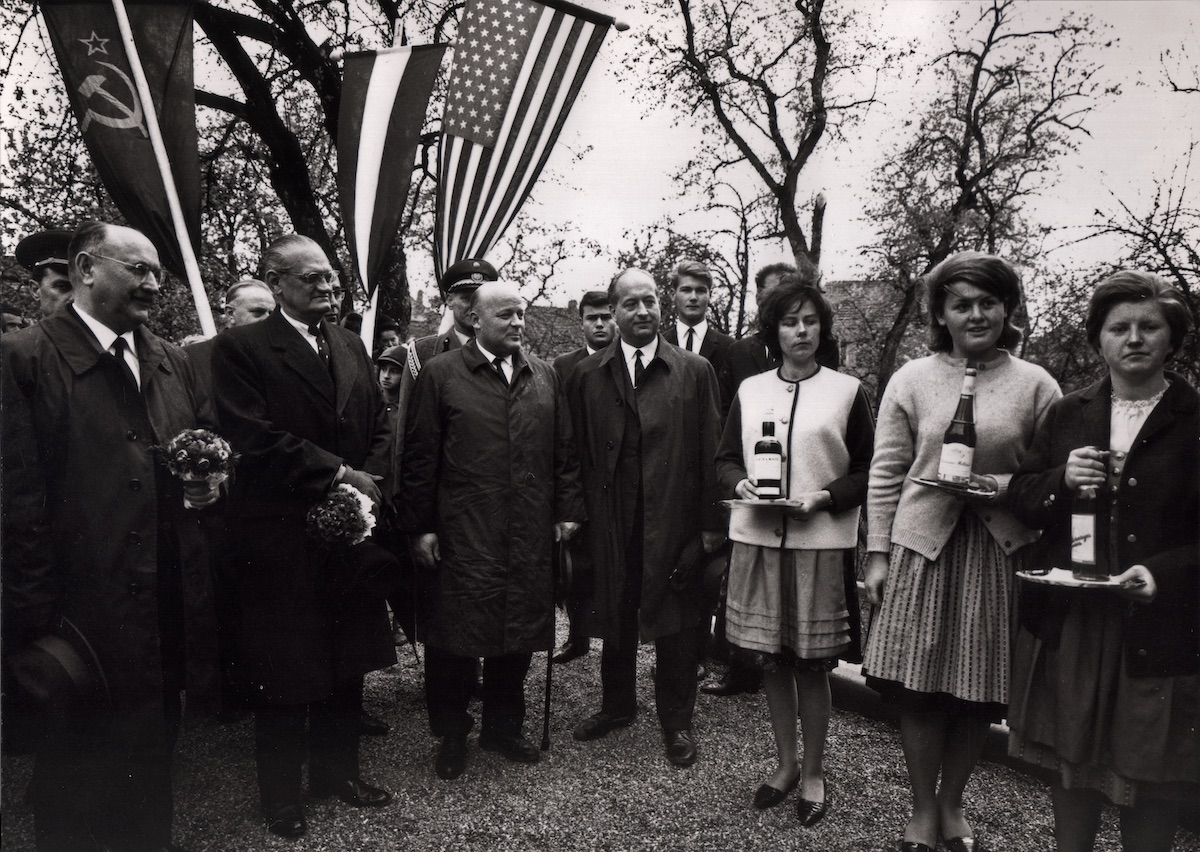
Peace Celebration, May 8, 1965 © Erlauf Erinnert, Heereslichtbildstelle
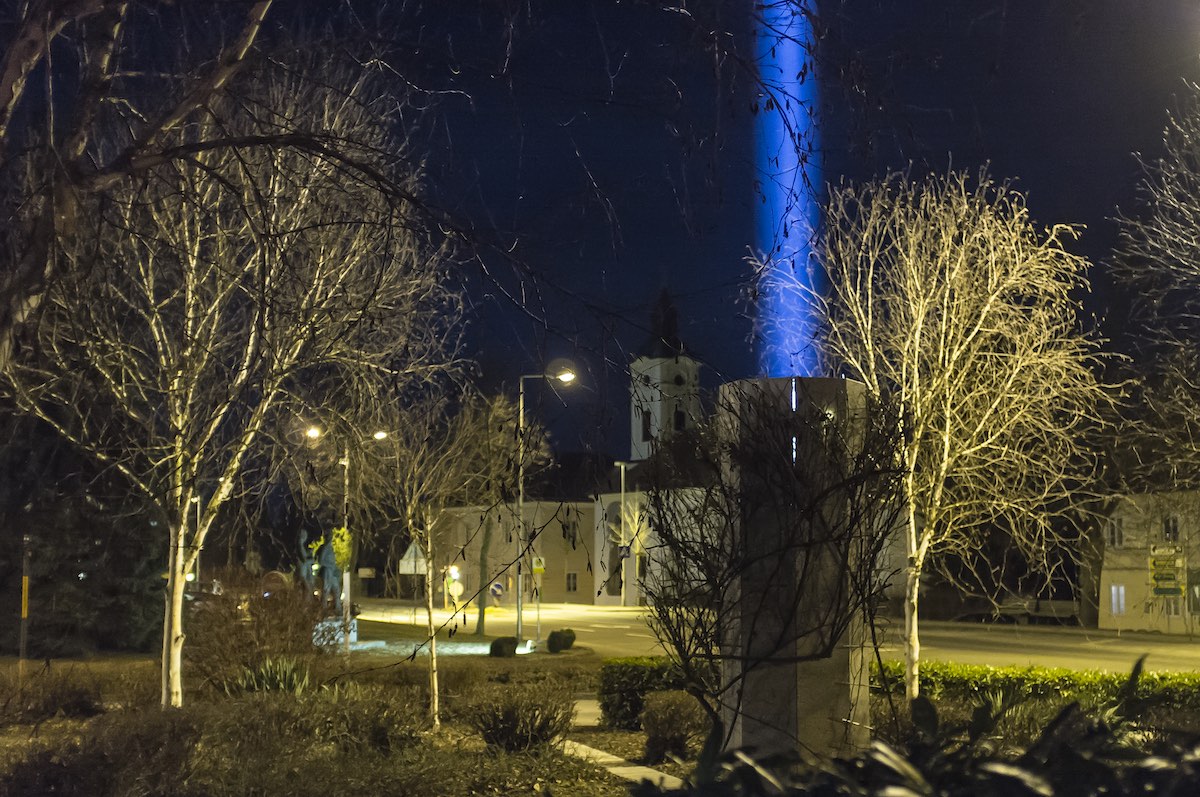 Jenny Holzer, Peace Monument, 1995 © Erlauf Erinnert
Jenny Holzer, Peace Monument, 1995 © Erlauf Erinnert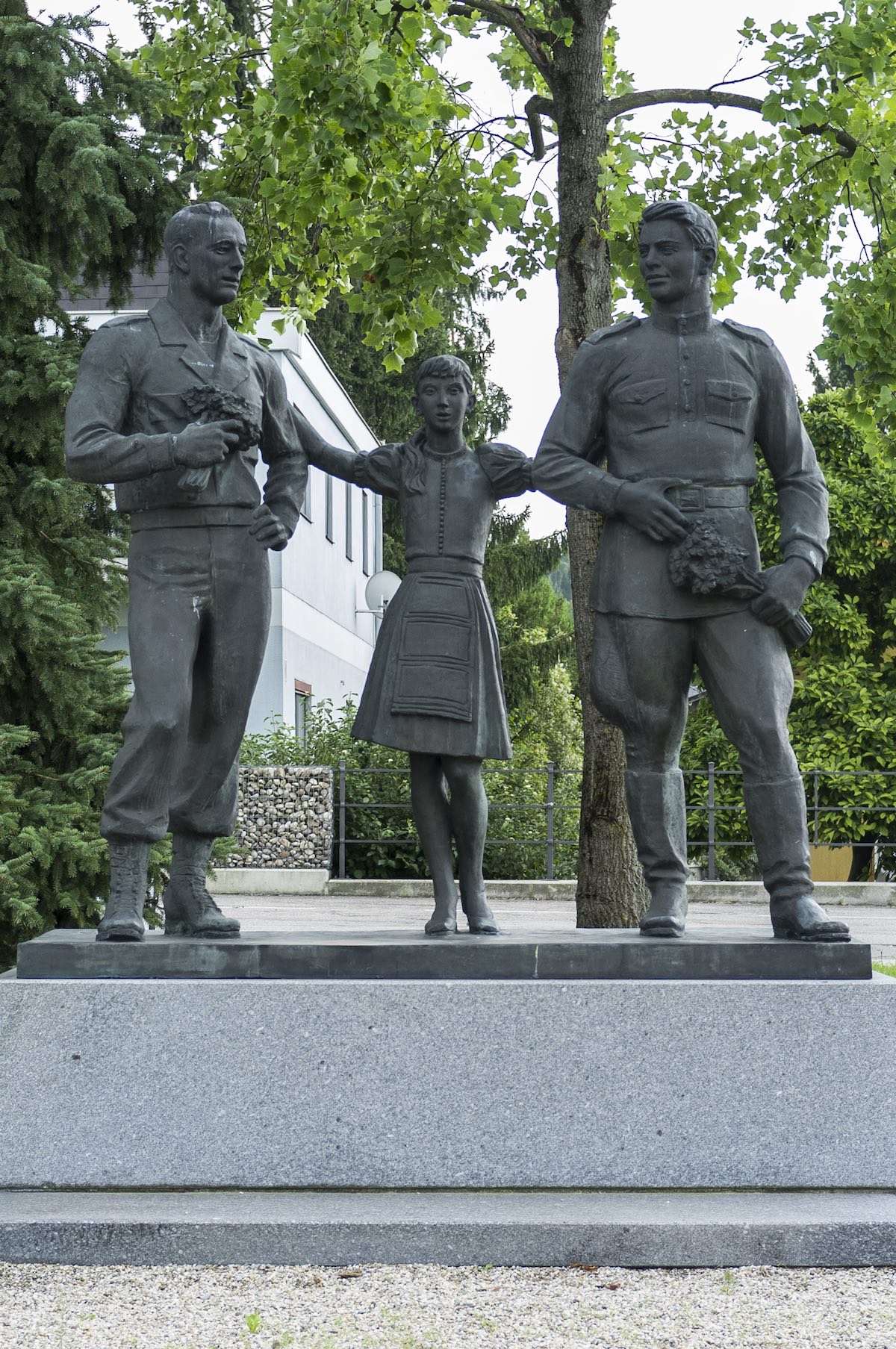 Oleg Komov, Peace Monument, 1995 © Erlauf Erinnert
Oleg Komov, Peace Monument, 1995 © Erlauf ErinnertThe Soviet general Dmitri Dritschkin and the US general Stanley Reinhart celebrated the Allied victory and the official end of the World War II in the night of May 8-9 in 1945 in Erlauf, but the event was soon forgotten. Twenty years later, US military documents about this meeting were found and sent to Erlauf by two Jewish emigrants, now living in the US. A memorial plaque was officially unveiled at the town hall a few years later. Since then, the city of Erlauf has continued to organize a celebration ceremony every year that eventually evolved into the celebration of Friedenstage (Days of Peace).
Following the first celebrations starting in 1965, Erlau has now shifted its focus to celebrate the event with contemporary art. In 1995, peace monuments by Jenny Holzer and Oleg Komov were erected. Art projects in public space and the Peace Memorial Museum’s historical and art exhibitions are open to the public. [Erlauf Erinnert]
Resistance meant also to help the comrades, solidarity.
Yves Briand,
survivor of Melk concentration camp.
survivor of Melk concentration camp.

April 26 2020
We begin our tour of the Melk Memorial at Melk railway station, which is located directly in the centre of the village. Melk has always been famous for its baroque monastery and is considered the ‘Gateway to the World Cultural Heritage Wachau’. But why do we start here at the train station? Because the first 500 prisoners arrived here by trainon April 21, 1944. And because all the other 14,000 prisoners from main-camp Mauthausen were also transported here to the train station.
Christan Rabl has produced a virtual tour with 11 short videos through the Melk Memorial. Click here to watch them. [Virtual tour]
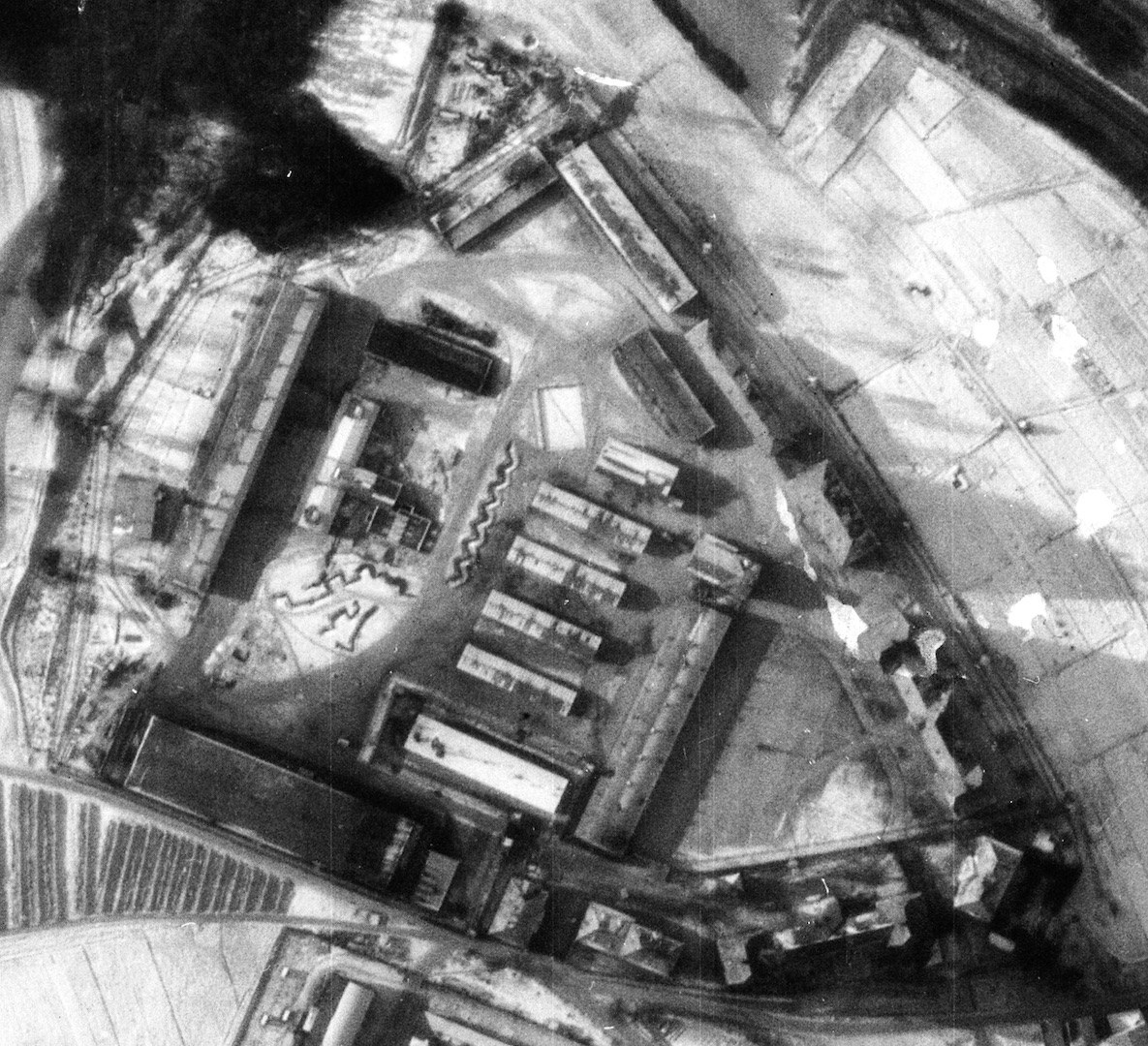
Luftbilddatenbank Dr. Carls GmbH, Dezember 26 1944
![]() © Melk Memorial
© Melk Memorial
April 22 2020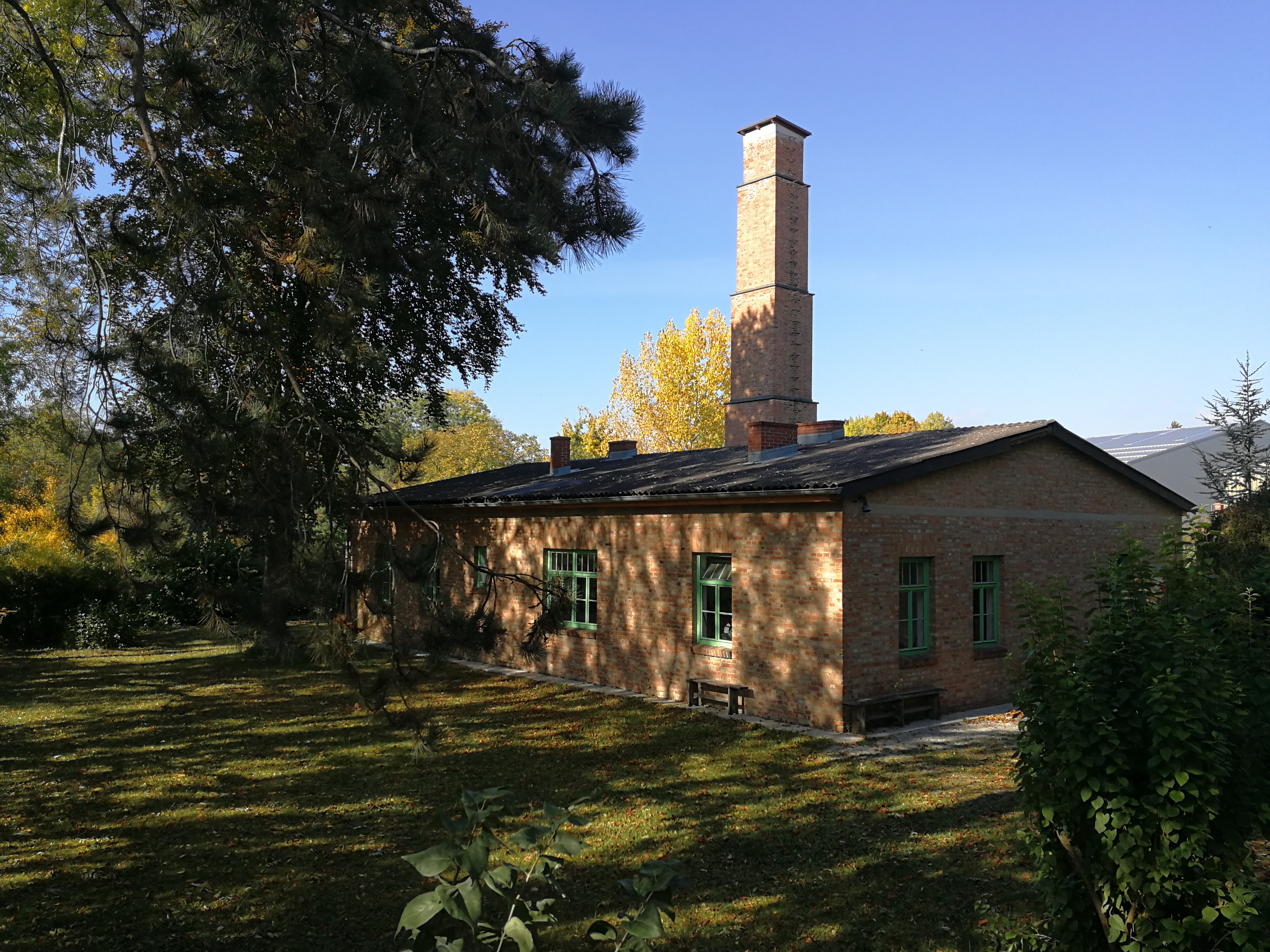 © Melk Memorial
© Melk MemorialFrom 1944 to 1945 Melk was a satellite camp of the Mauthausen concentration camp and the most significant satellite camp in lower Austria with about 14.400 prisoners from more than 20 countries. They were forced to work primarily digging an underground tunnel complex in which the Steyr-Daimler-Puch Company produced war material. About 5.000 prisoners died during their imprisonment. The former crematorium building was declared a public monument in 1962, and since has been the home of the Melk concentration camp memorial. A range of exhibitions and events have been organised in an effort to educate and remind the public of the horrible occurrences that have taken place here. Melk Memorial is also a project partner and will co-host the online memorial and peace celebration on the 9th of May.
 April 23 2020
April 23 2020 ONE WEEK PEACE is an artistic initiative that aims to affect all human senses in order to sensitize people to the important topic of "peace" through the medium of art. The speakers are concerned with today while at the same time forging a link to the legacy of Nobel Peace Prize Laureate Bertha von Suttner. The Bertha von Suttner Peace Academy is an impulse to take further steps toward the peaceful co-existence of societies in the present and future. The goal is to mobilize peoples' thoughts in regard to peace and to integrate these into everyday life so as to effect the making of peace. [Read more]

Sachsenhausen Memorial and Museum © Stiftung Brandenburgische Gedenkstätten, photo: Lars Wendt

Memorial Museum Ravensbrück © Stiftung Brandenburgische Gedenkstätten, photo: Britta Pawelke
April 21 2020
These are the online commemoration ceremonies of the former concentration camps Sachenhausen and Ravensbrück.
It may seem a ridiculous idea, but the only way to fight the plague is with decency.
Albert Camus

Working Group St. Pölten, Feb 26

Working Group St. Pölten, March 12
March 20 2020
Due to the current COVID-19 pandemic, we are moving the artistic working process with all youth groups, artists and partner institutions into the digital realm. Deviating from the planned course, we aim to create an international online celebration of the end of World War II, using the social media and online presence of all institutions and communities involved. More soon.
Fascism, racism, sexism, and oppression in general are the product of universal stupidity. You’re not going to beat them at the level of opinion. Ideology perpetuates itself on the plateau of opinion because all thought is barred there since it demands disrupting doxa.
Marcus Steinweg
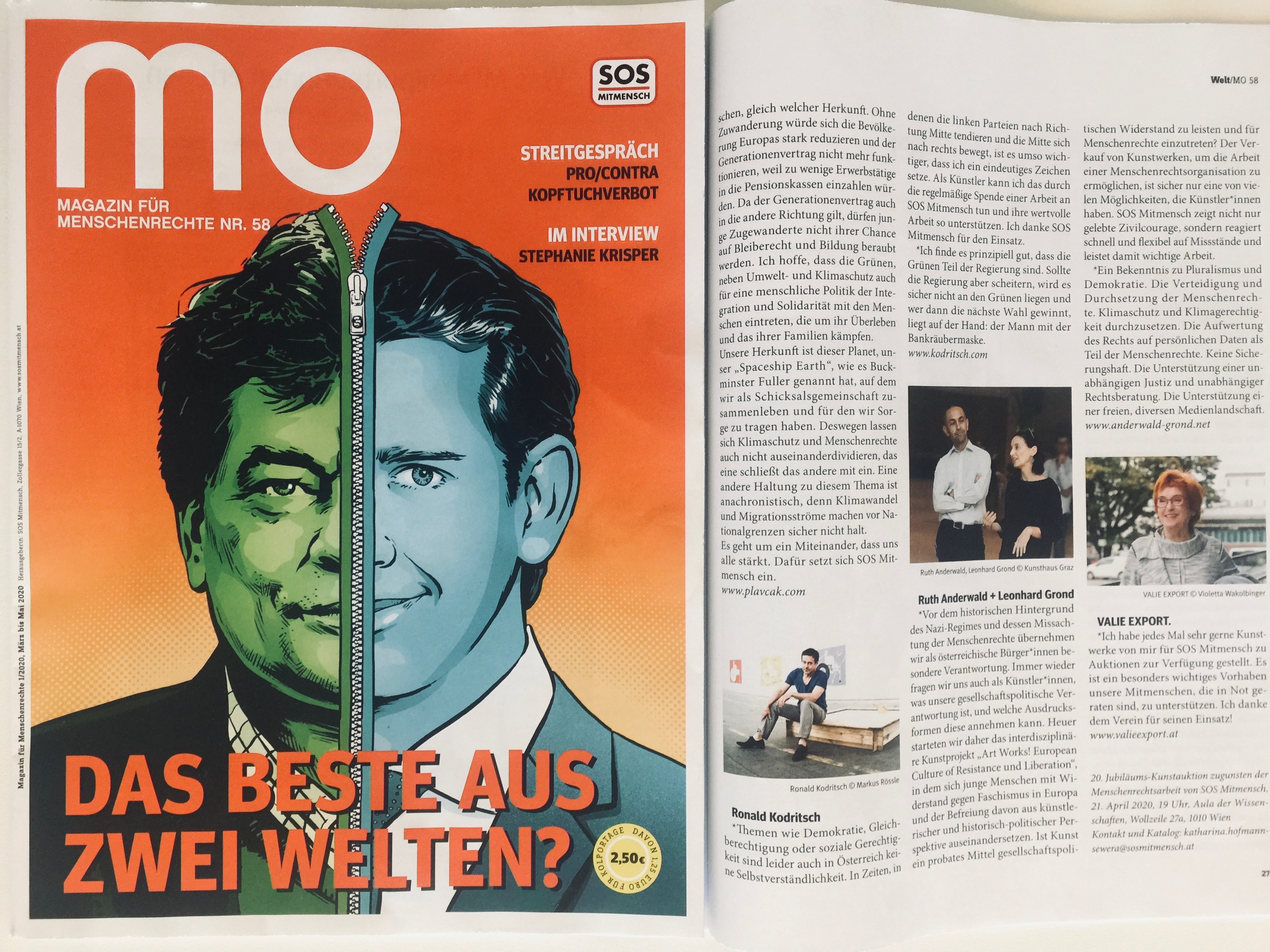 March 11 2020
March 11 2020Demokratie ist kein Kopfbahnhof
[Democracy is not a dead-end station]
MO Journal For Human Rights N°58 p.27
In der „Allgemeinen Erklärung der Menschenrechte“ vom 10. Dezember 1948 erklären die Mitgliedsstaaten der UN die angeborene Würde aller Menschen zu respektieren, allen Menschen die gleichen Rechte zu zugestehen und sie vor willkürlicher Gewalt zu schützen. Und es ist kein Zufall, dass diese Erklärung so kurz nach Ende des 2. Weltkrieges verkündet wurde. Gerade das Nazi-Regime hatte aufgezeigt, welch verheerende Folgen eine Missachtung der Menschenrechte hat. Vor diesem historischen Hintergrund übernehmen wir als österreichische Bürger*innen besondere Verantwortung. Immer wieder fragen wir uns auch als Künstler*innen, was unsere gesellschaftspolitische Verantwortung ist, und welche Ausdrucksformen diese Verantwortung annehmen kann. Heuer starteten wir daher das interdisziplinäre Kunstprojekt “Art Works! European Culture of Resistance und Liberation”, in dem sich junge Menschen mit Widerstand gegen Faschismus in Europa und der Befreiung davon aus künstlerischer und historisch-politischer Perspektive auseinandersetzen. Ist Kunst ein probates Mittel gesellschaftspolitischen Widerstand zu leisten und für Menschenrechte einzutreten? […] Statement by Ruth Anderwald + Leonhard Grond, editor Magdalena Stern. German only.
 March 9 2020
March 9 2020The Council of Europe celebrates the 70th anniversary of European Convention on Human Rights
The European Convention on Human Rights came into being against the dreadful background of the devastation of the Second World War, reflecting a determination on the part of European leaders to learn from the mistakes of the past and to help protect individuals from State abuse. Peace and stability could only be achieved by the consolidation of democracy and the rule of law. Inspired by the Universal Declaration on Human Rights, the Convention is a unique, legally-binding treaty, overseen by an independent international court, which safeguards people’s basic rights and fundamental freedoms. Initially signed by 12 countries on 4 November 1950, the Convention now protects over 830 million people in 47 European States. [Read more]
March 6 2020
Prisoners songs of resistance from the Sachsenhausen concentration camp
More than 200,000 people were interned in Sachsenhausen concentration camp between 1936 and 1945. They included political opponents of the Nazi regime, members of groups declared by the Nazis to be racially or biologically inferior, such as Jews, Sinti and Roma, and people persecuted as homosexuals, as well as so-called “career criminals” and “antisocials”. Initially, the internees were predominantly German citizens, but after the outbreak of the Second World War, tens of thousands of people were deported from the occupied territories to Sachsenhausen concentration camp, including political opponents of National Socialism or of the collaborating governments, foreign forced labourers and Allied prisoners of war. In 1944, around 90 % of the internees were foreigners, with citizens of the Soviet Union and Poland forming the largest groups. There were also around 20,000 women among the internees in Sachsenhausen concentration camp. (https://www.sachsenhausen-sbg.de/en/history/1936-1945-sachsenhausen-concentration-camp/)
The songs they sung gave them power to resist and to survive. The book was made in the camp organiced by the illegal prisoner resistance organisation. (Sachsenhausen- Liederbuch: Originalwiedergabe eines illegalen Häftlingsliederbuches aus dem Konzentrationslager Sachsenhausen / Günter Morsch (Hrsg.), Berlin 1995)
 March 5 2020
March 5 2020The eyewitness Poul Nielson talks about his time in the Sachsenhausen concentration camp. The interview with him was conducted by Christel Trouvé and Roman Fröhllich in 2010.
As the interview is not public, please send a message to this address ︎ and we will provide the password. Click here for the video: ︎ The video is available only in German.
March 4 2020
Uyghurs For Sale
In May we will visit the former concentration camp Melk Memorial, one of the biggest satellite camps of Mauthausen concentration camp, where prisoners were forced to work for Steyr-Daimler-Puch producing war material (mainly ball bearings). Unfortunately, forced labour is not an issue of the past but still very present, even in products we may buy or use on a daily basis.
The Chinese government has facilitated the mass transfer of Uyghur and other ethnic minority citizens from the far west region of Xinjiang to factories across the country. Under conditions that strongly suggest forced labour, Uyghurs are working in factories that are in the supply chains of at least 83 well-known global brands in the technology, clothing and automotive sectors, including Apple, BMW, Gap, Huawei, Nike, Samsung, Sony and Volkswagen. (Australian Strategic Policy Institute) [Read more]
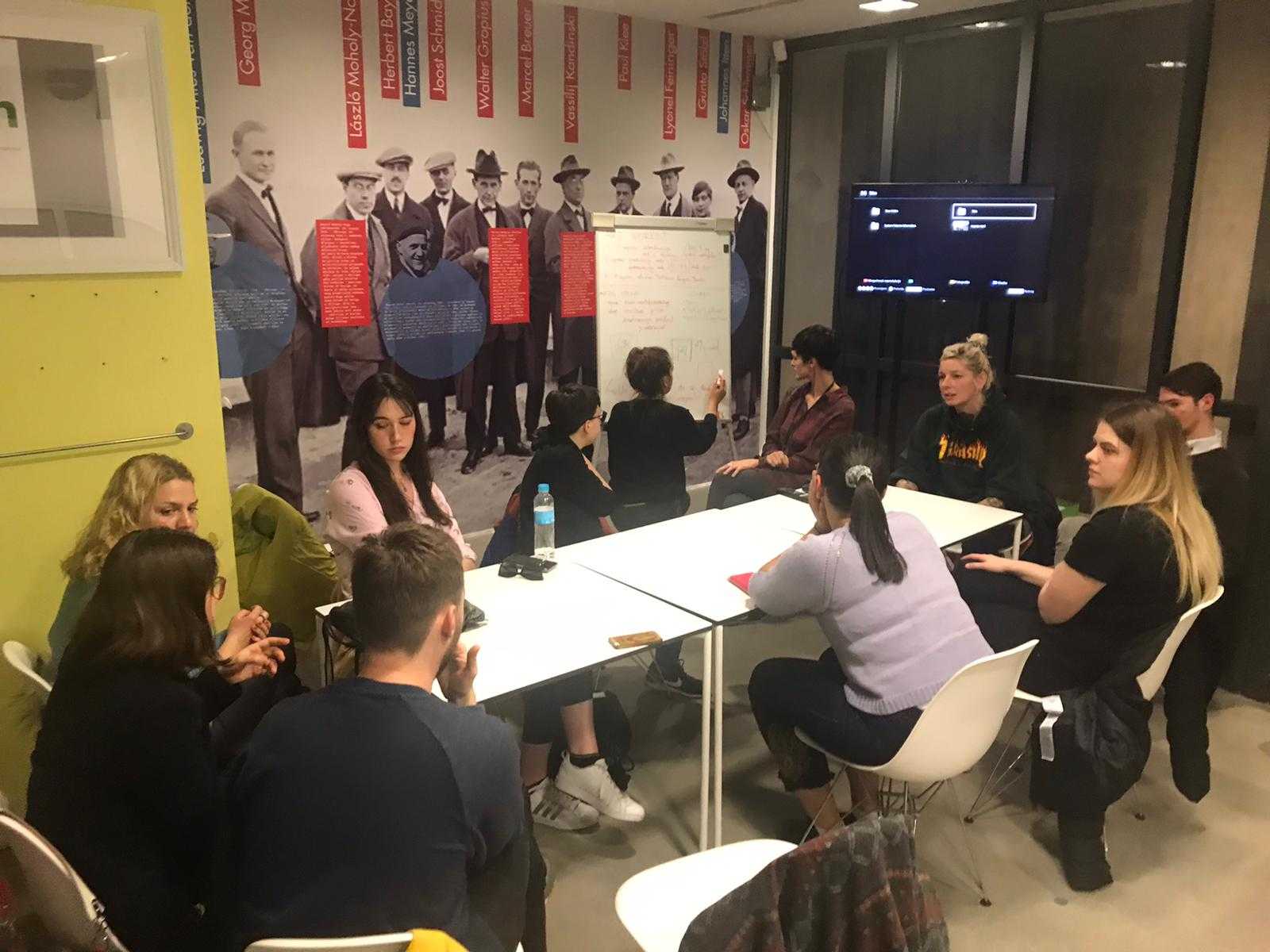



 February 25 and March 3 2020
February 25 and March 3 2020Brainstorming with MSU Youth Club and OKO.
Red Light – Yugoslav Partisan Potography and Social Movement 1941–1945
A lecture by Davor Konjikušić for the Youth Club of MSU, Museum of Contemporary Art, Zagreb.
Davor Konjikušić is a freelance journalist and photographer based in Zagreb, Croatia, working for a range of media in Croatia and Serbia. Born in Zenica (Bosnia and Herzegovina) in 1979, he studied political sciences but holds also degrees in cinematography and photography. His work uses photography as a primary medium in articulating his artistic concept, in which he explores the relationships between public and private, intimate and socio-political.
 January 23 2020
January 23 2020Widerstand in künstlerischer Art, Bezirksblatt Melk
This article published in the regional newspaper describes the first preparatory meeting of all partners and artists in Melk.
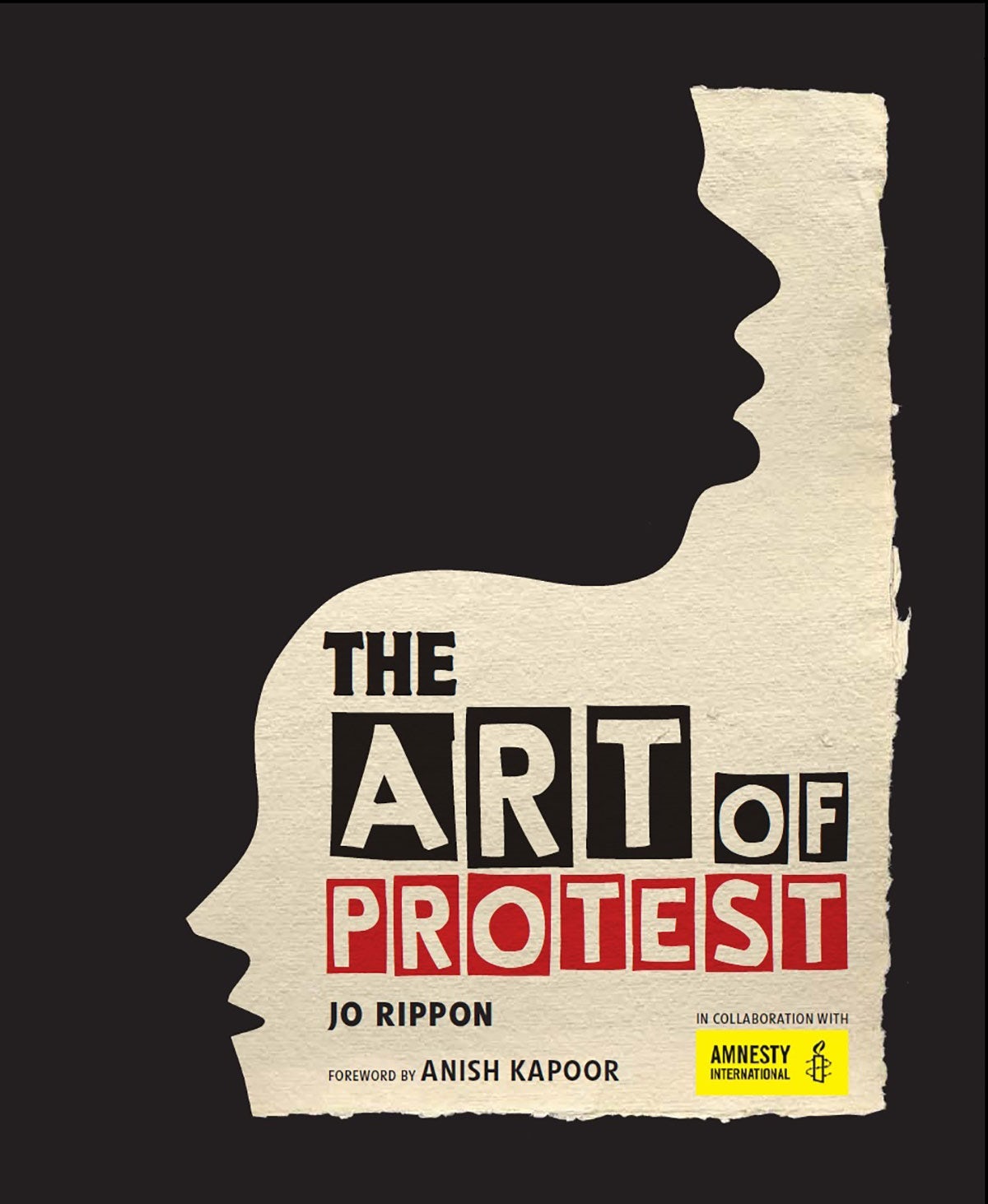
 January 21 2020
January 21 2020New Book: The Art of Protest: A Visual History of Dissent and Resistance
Jo Rippon’s The Art of Protest is published by Palazzo in partnership with Amnesty International. (palazzoeditions.com)
A timely new publication explores the last century of activist imagery, exploring the role artists and designers have played in protest movements of all kinds.





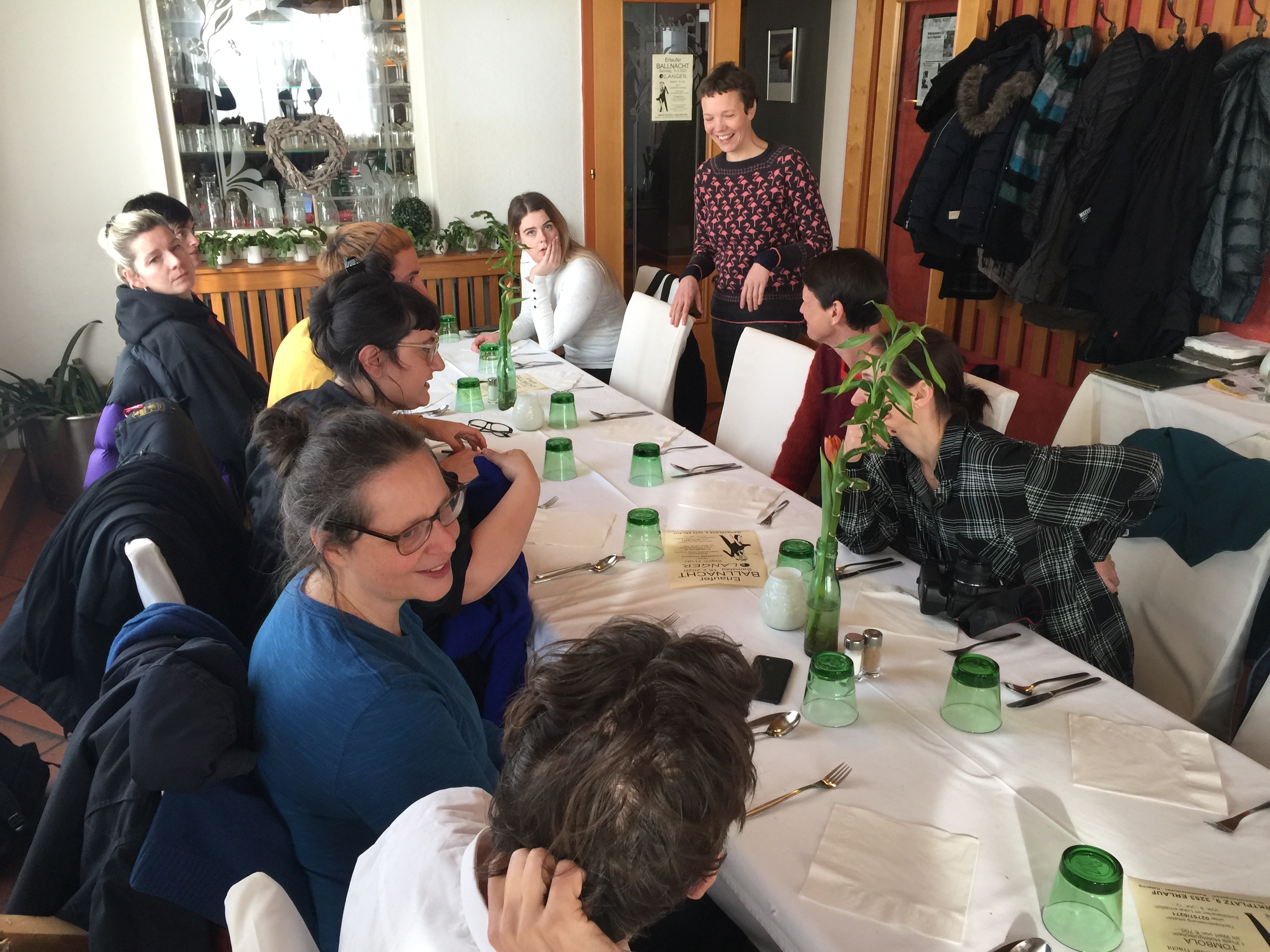

 January 17 2020
January 17 2020Second day of our Multipliers Meeting in Melk: With the train we travelled to the peace community Erlauf. When the unconditional surrender was signed in Berlin on May 8 1945, on the same day a handshake between the two generals Dimitri Drichkin (Soviet Army) and Stanley Reinhart (U.S. Army) took place in Erlauf. In the late afternoon we visited the Melk Memorial.
The aim of co-creation is to create shared value. […] It’s not about finding the right idea, it’s about finding a multitude of ideas.
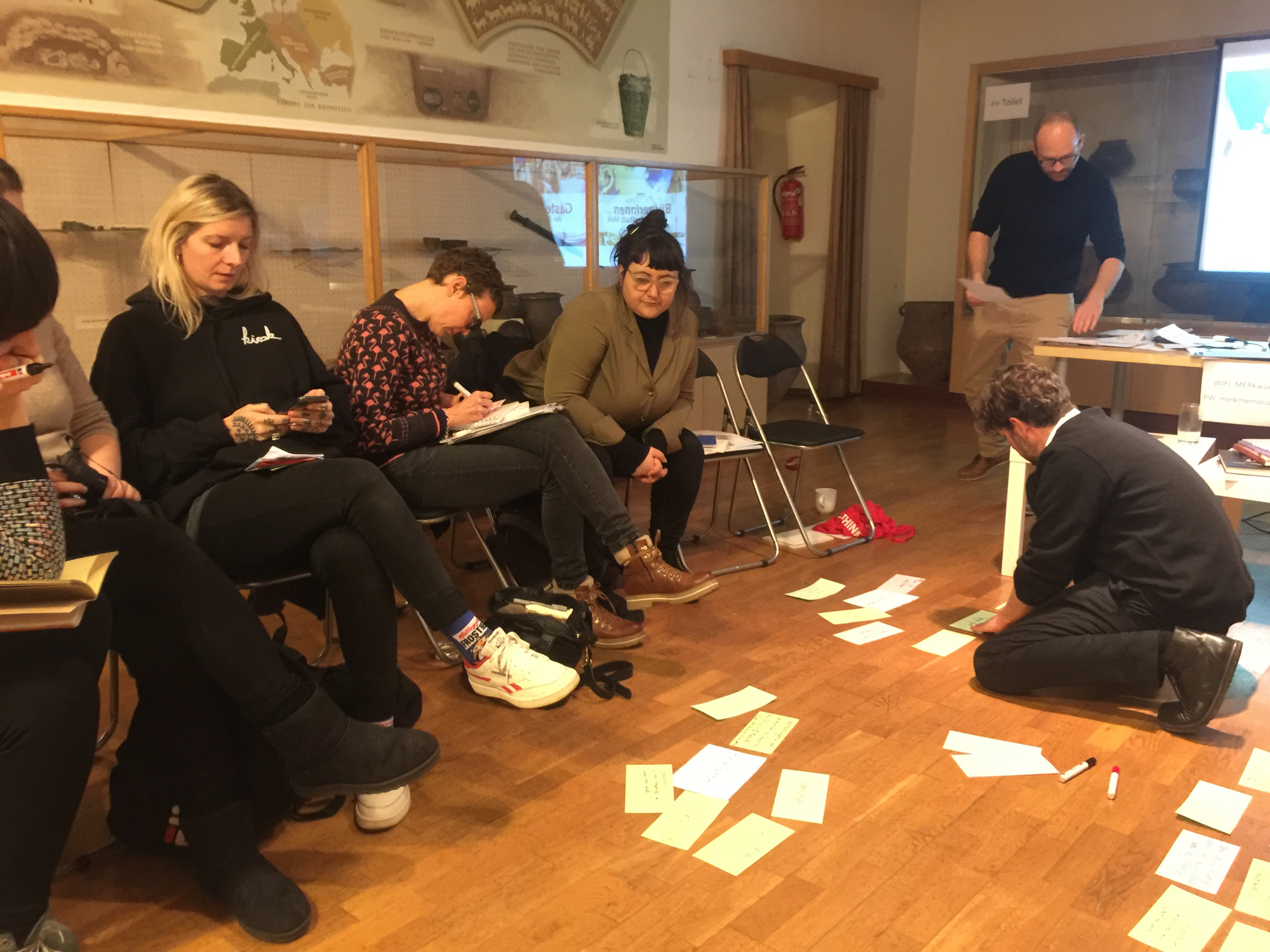
 January 16 2020
January 16 2020Here are some photos of our arrival day of the Multipliers Meeting in Melk at the Center for Contemporary History. The very first time we all came together to jointly develop our project further. Many thanks to Christian Rabl for the warm welcome and the photos!
January 13 2020
Human Rights Education as an educational framework of our project
Empowerment through human rights education is about more than just content; it can only be achieved if the education process also includes participatory learning methods and is relevant to the daily lives and lived experiences of learners.
This lived knowledge and awareness of human rights principles builds a “culture of human rights” — that is, a society in which each of us is encouraged and empowered to take the initiative to respect, protect and promote the full spectrum of human rights for all. [Read more]





 December 13 to 15 2019
December 13 to 15 2019Finally, we got together in Berlin to start with the workshops. The artist Katja Pratschke and Roman Fröhlich guided the Berlin youth group through the former concentration camp Sachsenhausen Memorial in order to search for traces of resistance. In the meeting rooms of the memorial we collected first ideas about the terms resistance and liberation. Leonhard Grond discussed the responsibility of the artist and architect in this context.
Already in one month, we will all meet in Melk to plan the workshops and youth exchange in May in more detail.
Peace is a certain resistance to the terrible satisfactions of war. It’s a commitment to living with a certain kind of vulnerability to others and susceptibility to being wounded that actually gives our individual lives meaning.
Judith Butler
 October 22 + 23 2019
October 22 + 23 2019After the workshop with the youths in Bolzano, Ruth Anderwald and Leonhard Grond travelled to the Memorial and Museum Auschwitz-Birkenau. In Block 27 they discovered documentation of the magazine Vedem, a resistence magazine dedicated to culture, arts and news, that existed from 1942 to 1944 in the Terezín Concentration camp. Vedem was hand-produced by a group of boys, among them editor-in-chief Petr Ginz and Hanuš Hachenburg. Altogether, some 800 pages of Vedem survived World War II. In 2003 Petr Ginz's drawing of planet Earth from the perspective of the Moon was taken to the Space Shuttle Columbia by Israeli astronaut Ilan Ramon, but the space shuttle was destroyed when it re-entered the Earth's atmosphere.





 October 19 + 20 2019
October 19 + 20 2019This weekend the workshops in Bolzano started. After a guided tour through the documentation exhibition in the monument of the victory in Bozen/Bolzano, London-based artist Alessandra Ferrini worked with a group of young people at Museion.